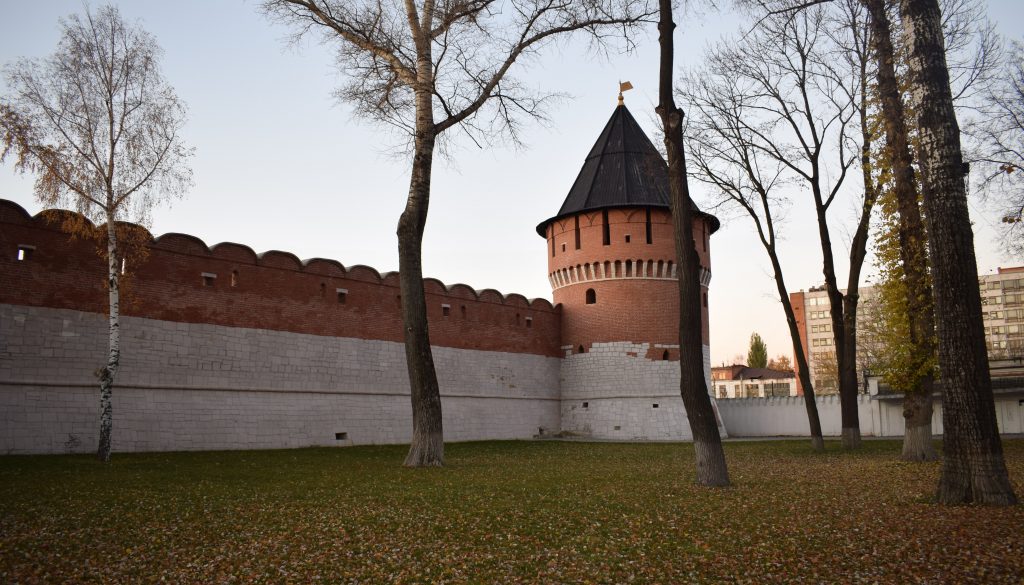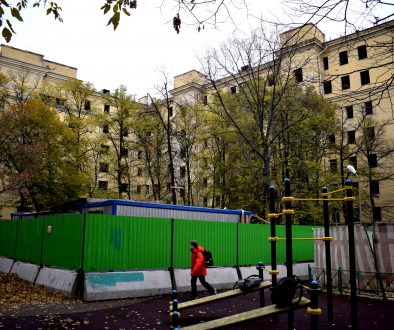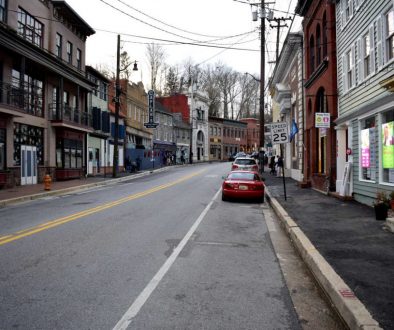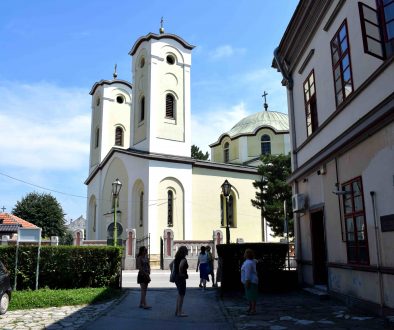Fall was always my favorite season growing up.
Something about the air turning crisper, the weather getting colder. The leaves turning yellow and brown and orange. And of course Halloween.
It’s that back-to-school weather that any person growing up in the United States loves.
So it was a special treat to be able to experience what fall was like in a different country on a different continent, in a country so unknown in the west. To experience fall in Russia.
Maybe it’s because the season is so short here, but autumn in Russia is truly special.
For starters, it only lasts one month. Fall rolls in during the second half of September and ends in the first half of October. After that winter is already in the air.
But during that brief four-week period, when the country transitions from summer to winter, the Russian countryside explodes into the most beautiful mosaic of red and orange and brown and yellow.
They call it ‘zolotaja osenj’ here, or ‘golden fall.’
It was during this time of year I decided to head outside of Moscow and visit Tula, a city located three hours south of Moscow.
The year was 2017. I was living in Moscow working for a Russian newspaper. October had just arrived.
I was living with another American at the time working in Moscow. We both didn’t want to waste a beautiful crisp sunny autumn day cooped up in Moscow in the apartment.
So we took out a map and looked at what cities nearby we could visit.
We looked North, East, West and finally South. And there she was. Tula.
We’d read a lot of good things about Tula before. How Tula was the birthplace of Leo Tolstoy. That it was where a traditional Russian desert called pryaniki, or ‘gingerbread’ originated.
How for centuries Tula supplied the Russian empire with weapons and arms. And that samovars, what Russians used to make tea and keep water hot, originated from there.
Throw in a Kremlin too, which the city had, and the choice was obvious. We should visit Tula.
And off we went. To enjoy the Russian autumn in the Russian provinces.
How to get to Tula
There are two ways to get to Tula from Moscow. You can take a suburban train, known as elektrichkas, or you can take a regular train. The regular train costs more, and will take you there directly. In this case, Tula is usually the first stop of a longer train ride headed south toward Voronezh and Ukraine.
The other option, which we opted for, was the elektrichka. Elektrichkas are suburban trains that connect surrounding cities to Moscow. The elektrichka takes longer, three hours as opposed to an hour and a half. But the benefit is it is cheap. And you get to see all the smaller cities the train stops in.
When we went, the train was packed full of Russians heading to their dachas for the weekend.
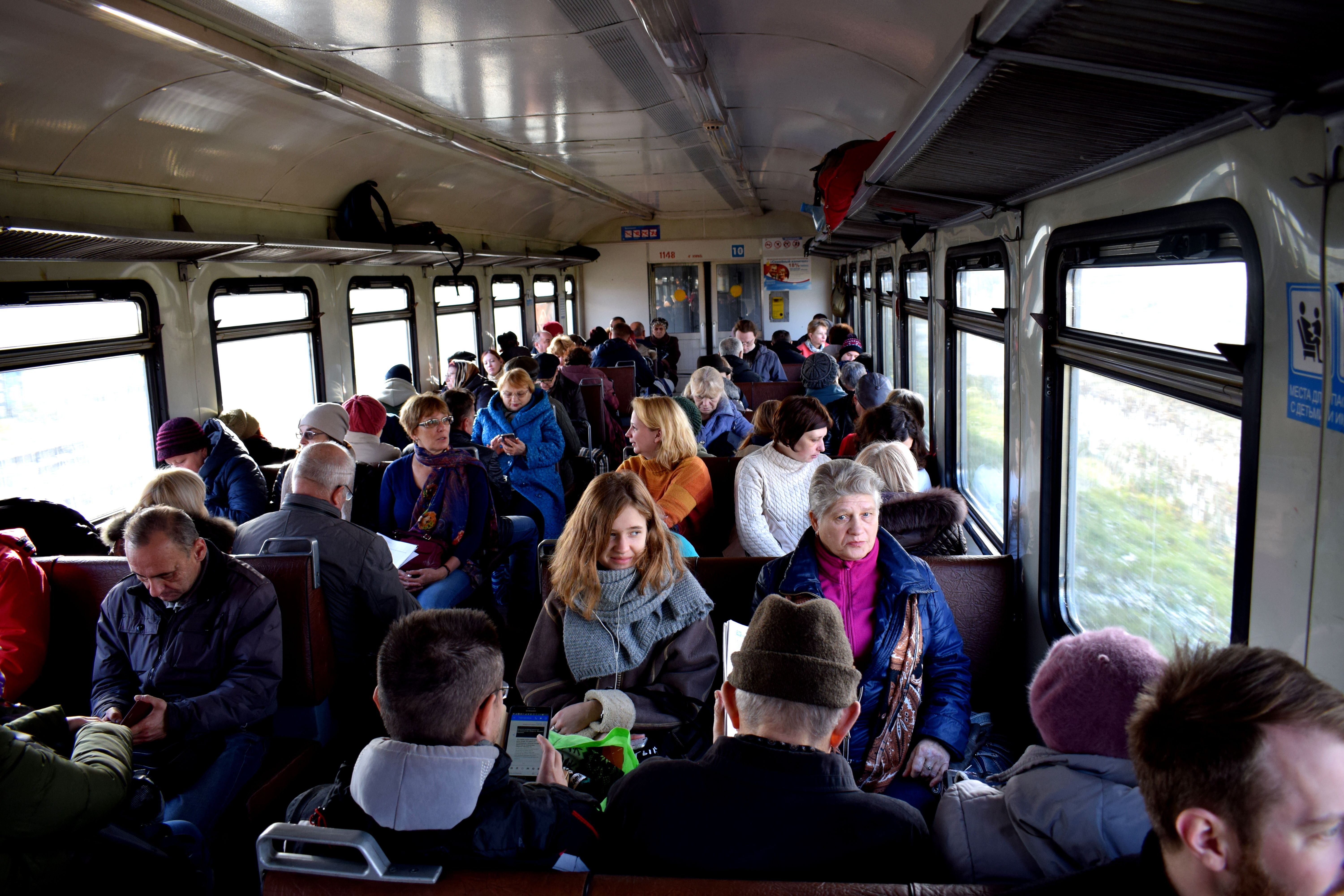 Three hours later and we found ourselves hopping off the train at Tula’s main train station.
Three hours later and we found ourselves hopping off the train at Tula’s main train station.
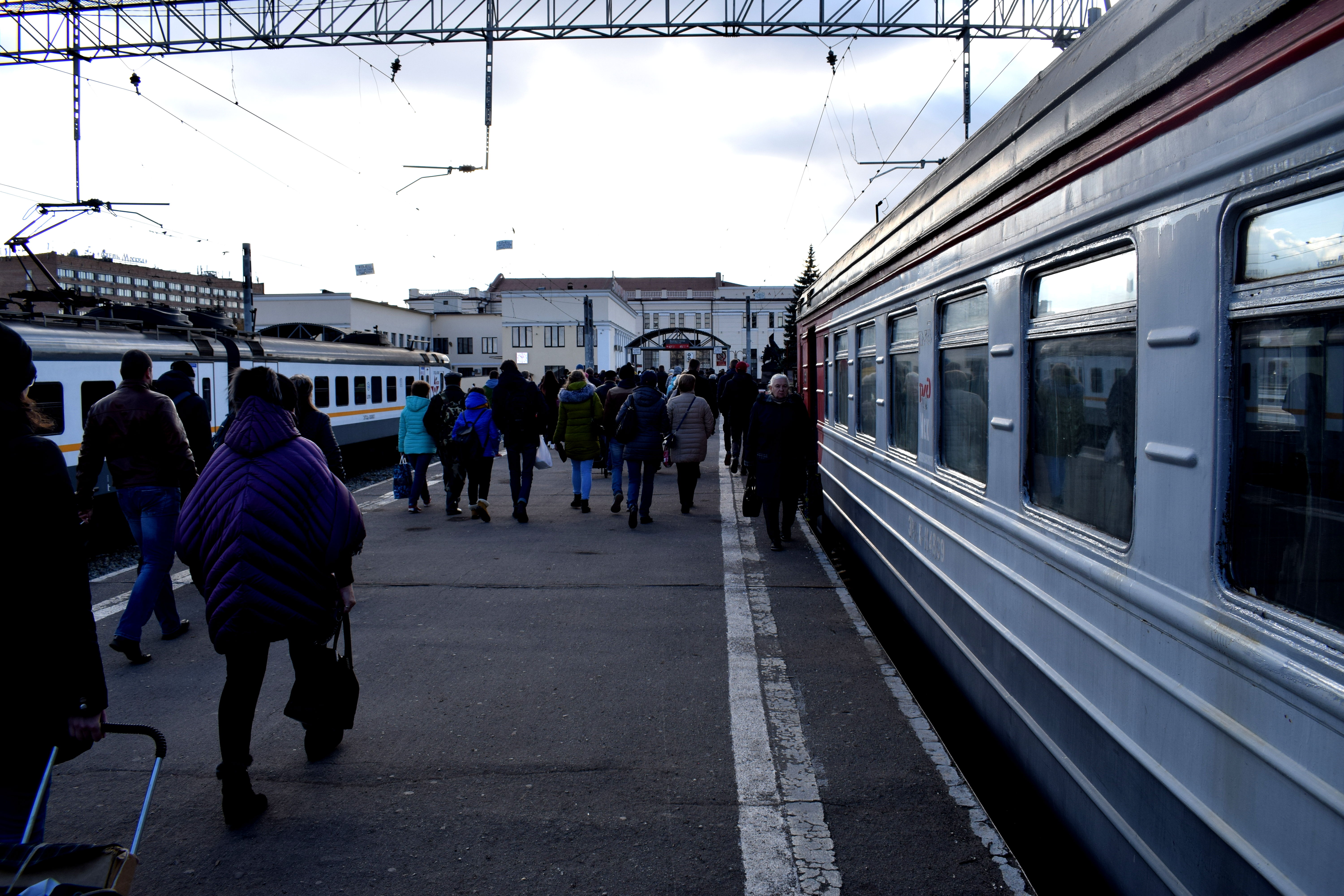 There were a few military vehicles on display nearby. Tula was traditionally a major arms manufacturer in the Russian Empire, fueled by the Tula Arms Plant founded by Peter The Great in 1712.
There were a few military vehicles on display nearby. Tula was traditionally a major arms manufacturer in the Russian Empire, fueled by the Tula Arms Plant founded by Peter The Great in 1712.
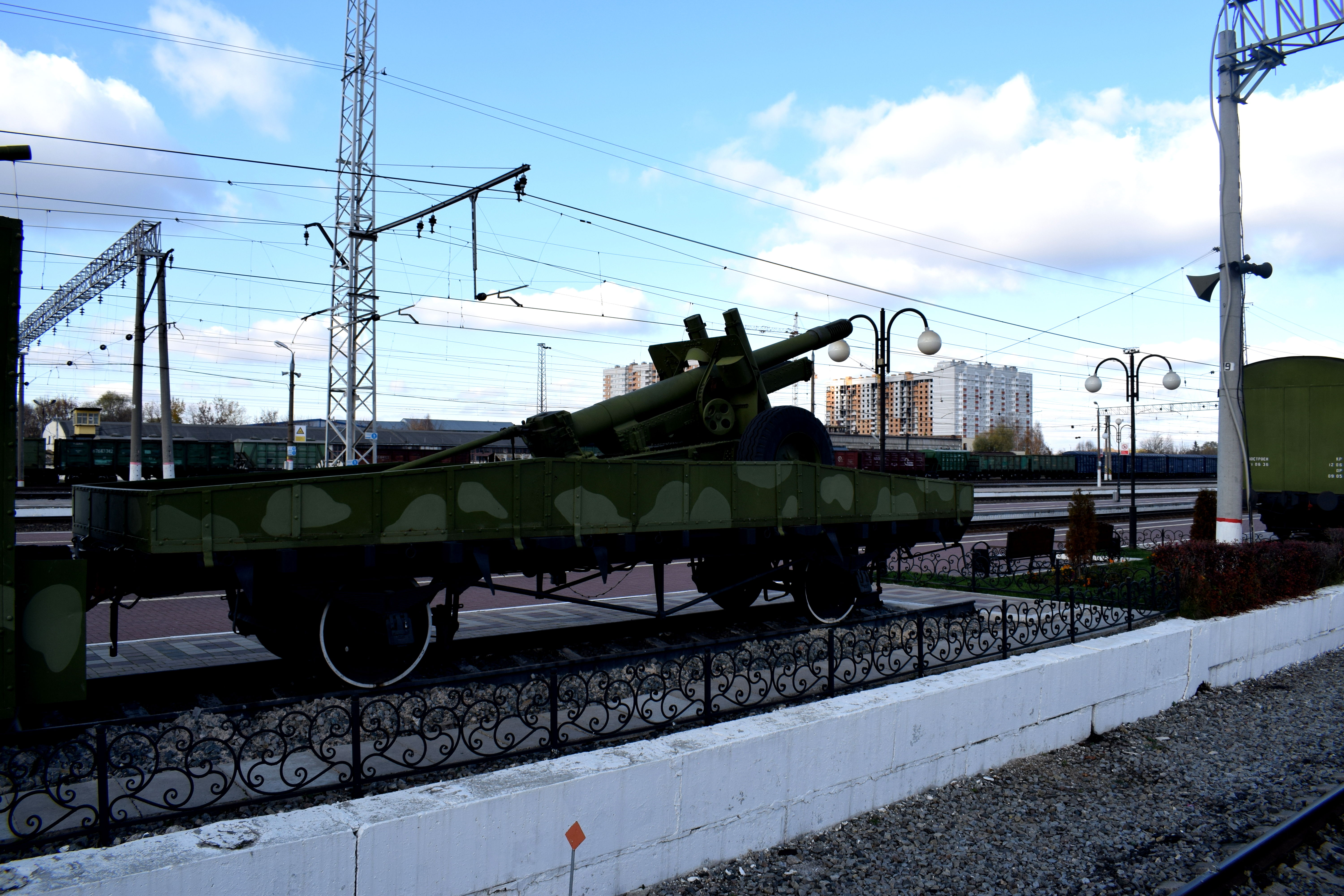 But what Tula is really famous for is Russian gingerbread, a traditional Russian desert known as Pryaniki.
But what Tula is really famous for is Russian gingerbread, a traditional Russian desert known as Pryaniki.
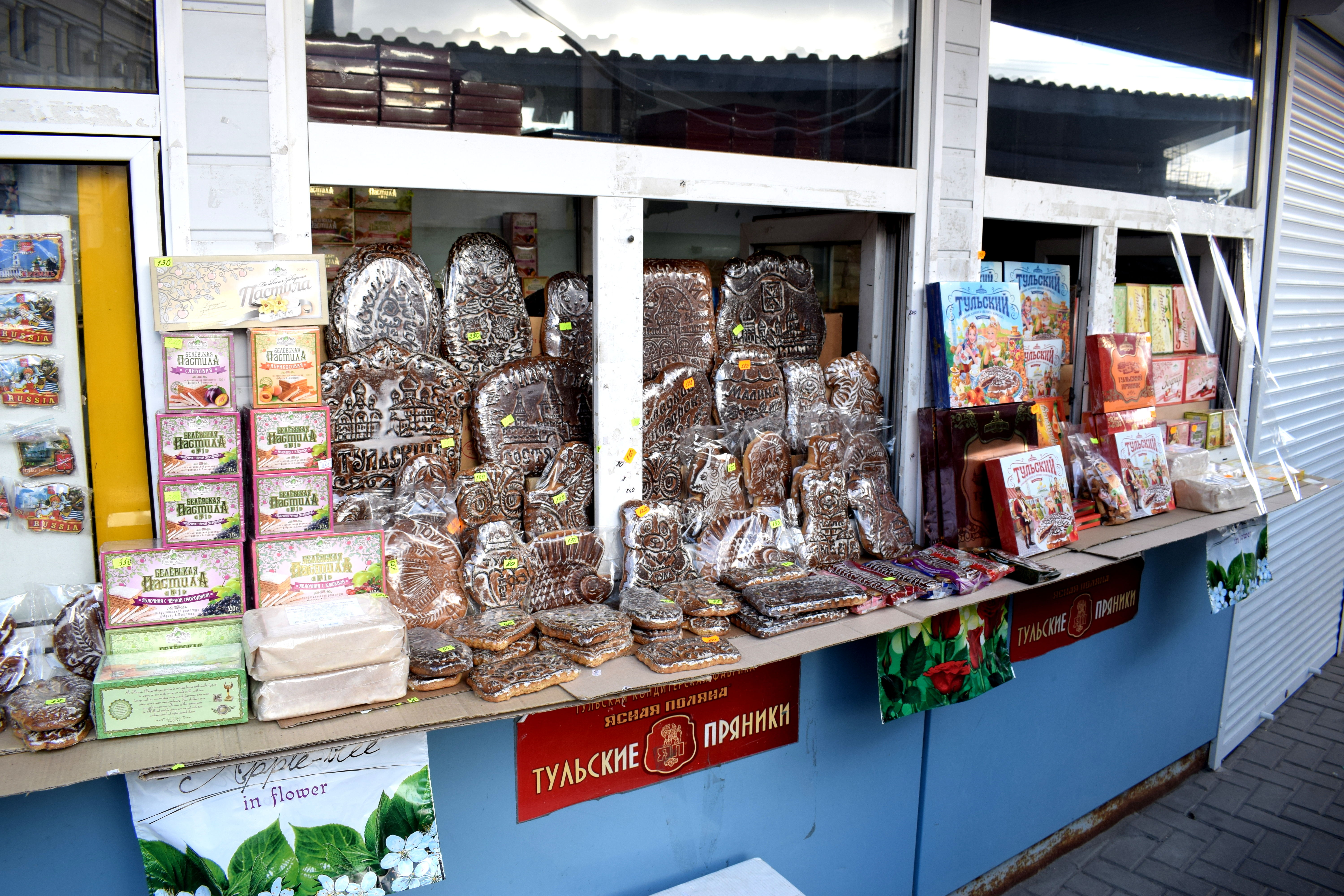 It comes with jam, honey or sweetened condensed milk inside, while the outside has cool drawings depicting traditional aspects of Russian culture. They were selling these right outside the train station and all over the city.
It comes with jam, honey or sweetened condensed milk inside, while the outside has cool drawings depicting traditional aspects of Russian culture. They were selling these right outside the train station and all over the city.
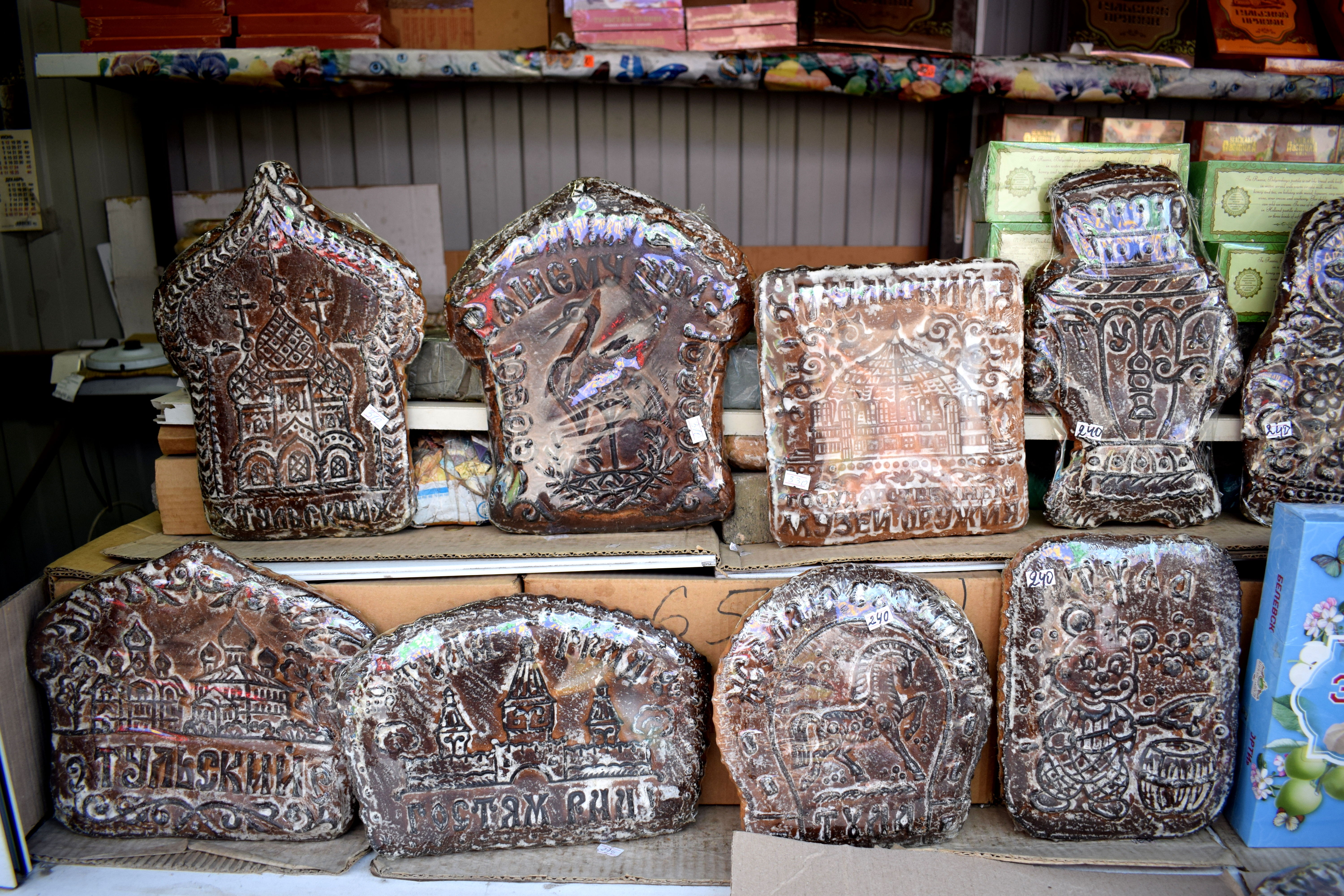 When we got to the center we saw a huge black and white photo of what Tula looked like before the communists took power in 1917.
When we got to the center we saw a huge black and white photo of what Tula looked like before the communists took power in 1917.
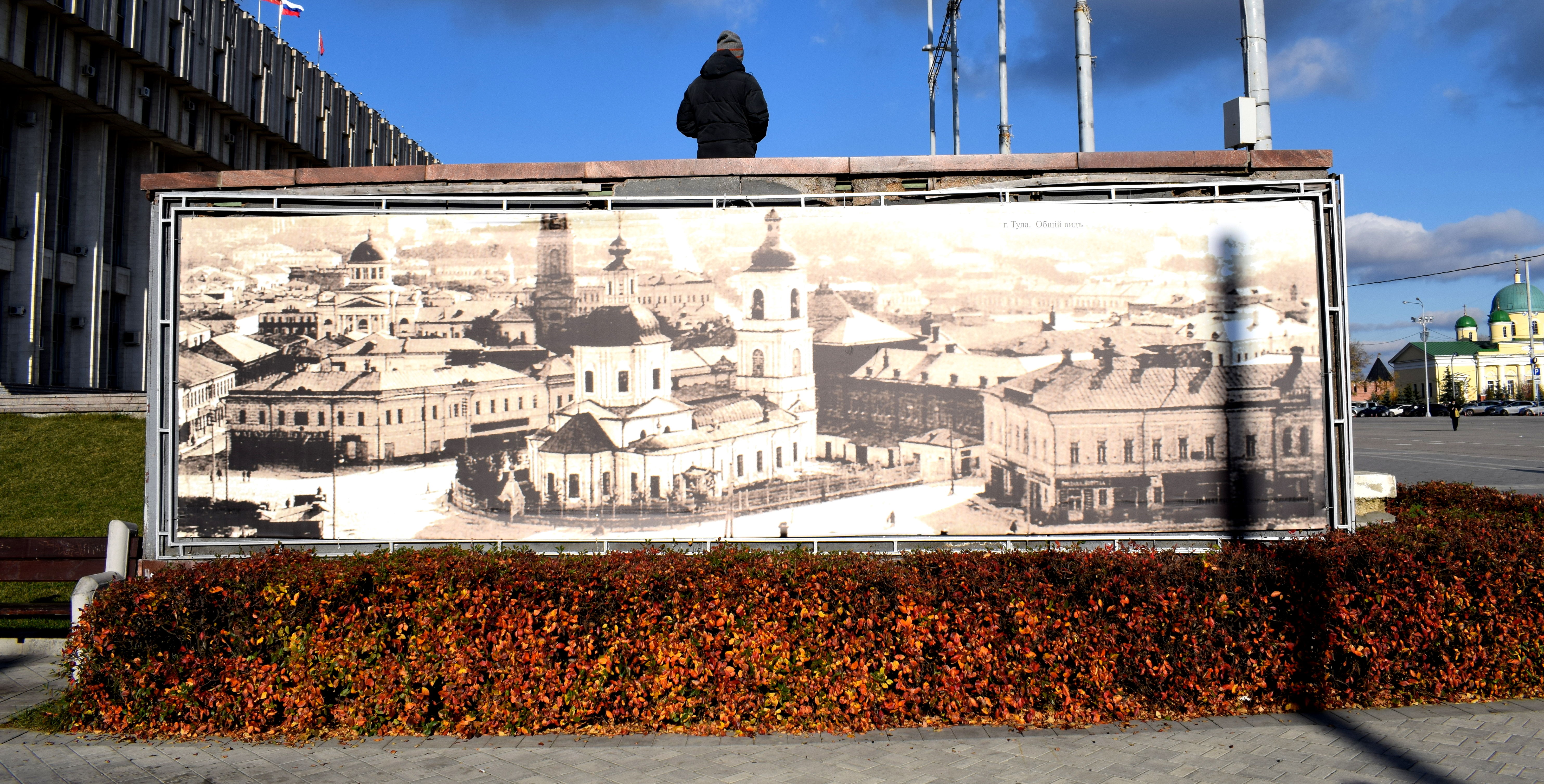 As you can see the center was dominated by a Russian Orthodox Cathedral. Like most Russian cities, Tula suffered a tragic fate after the Bolshevik revolution. The church in the photo above was located in the central square of the city and stood as a historical symbol of the town for generations. It was torn down in the 1920s, just like the majority of the surrounding buildings in the photo. Stalin wanted to implemented his vision of a communist future at all costs, and any symbols of the previous Czarist order were to be erased.
As you can see the center was dominated by a Russian Orthodox Cathedral. Like most Russian cities, Tula suffered a tragic fate after the Bolshevik revolution. The church in the photo above was located in the central square of the city and stood as a historical symbol of the town for generations. It was torn down in the 1920s, just like the majority of the surrounding buildings in the photo. Stalin wanted to implemented his vision of a communist future at all costs, and any symbols of the previous Czarist order were to be erased.
Churches all across the Soviet Union were declared to have ‘no historic value’ and torn down. Churches that were several centuries old. Comunist style administration buildings were put in their place. Monuments to Russian czars were also destroyed and replaced by statues of Lenin.
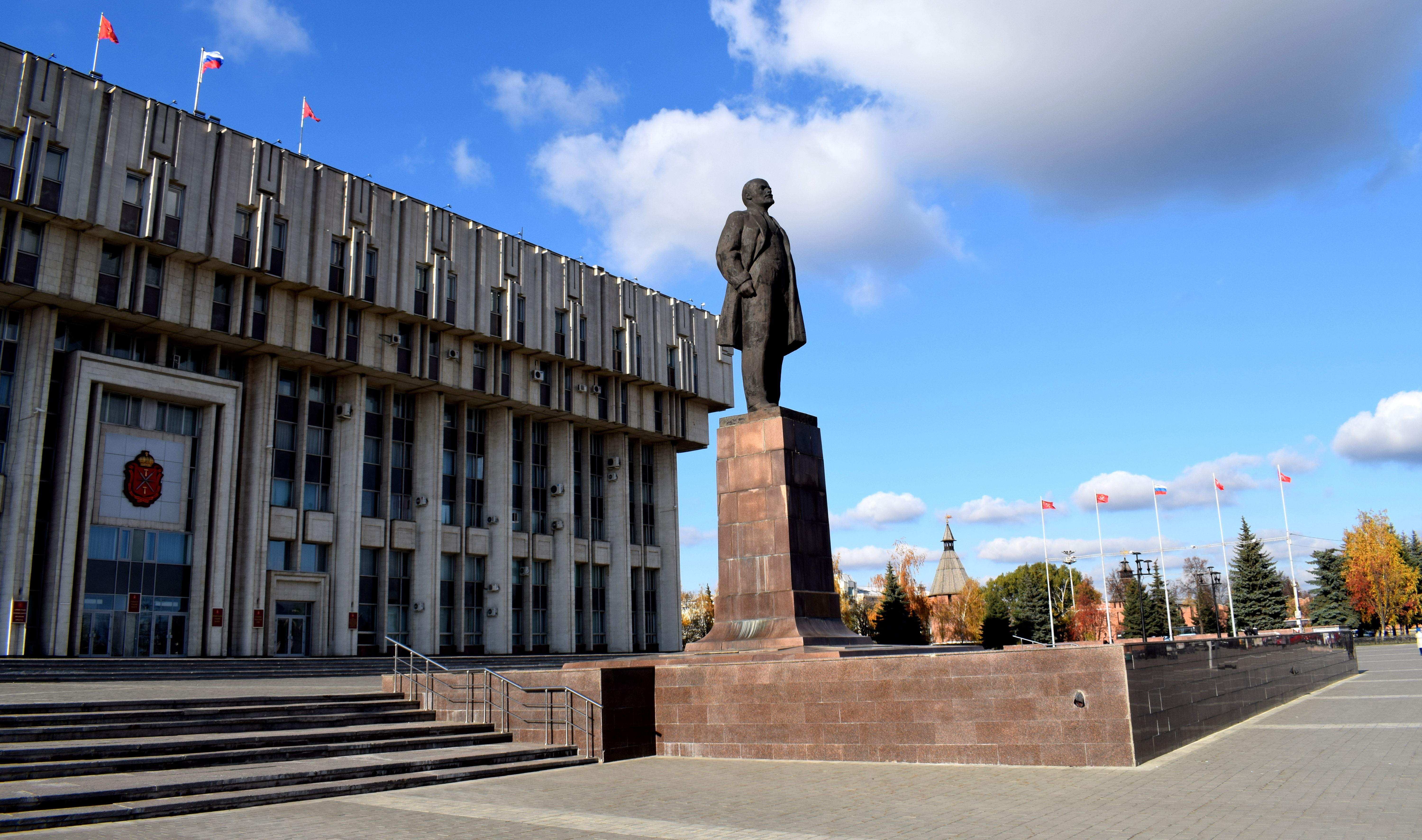
Tula didn’t escape this fate. Here is Tula’s central square in 2017. All of those old buildings in the black and white photo above showing Tula before the revolution are gone.
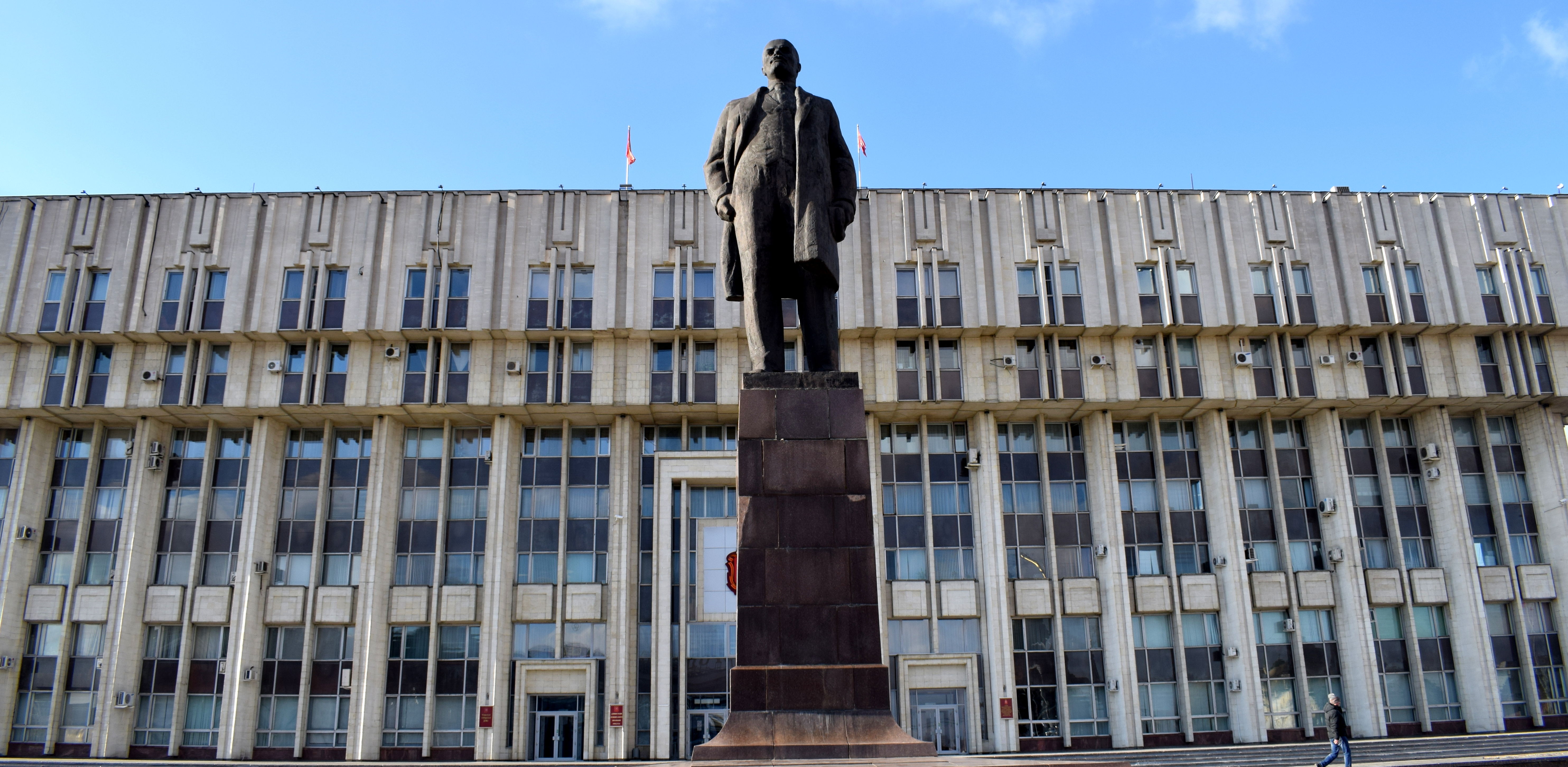 The enormous grey building behind Lenin is where Tula’s church used to stand. Today it is the administrative building of Tula and the Tula Oblast.
The enormous grey building behind Lenin is where Tula’s church used to stand. Today it is the administrative building of Tula and the Tula Oblast.
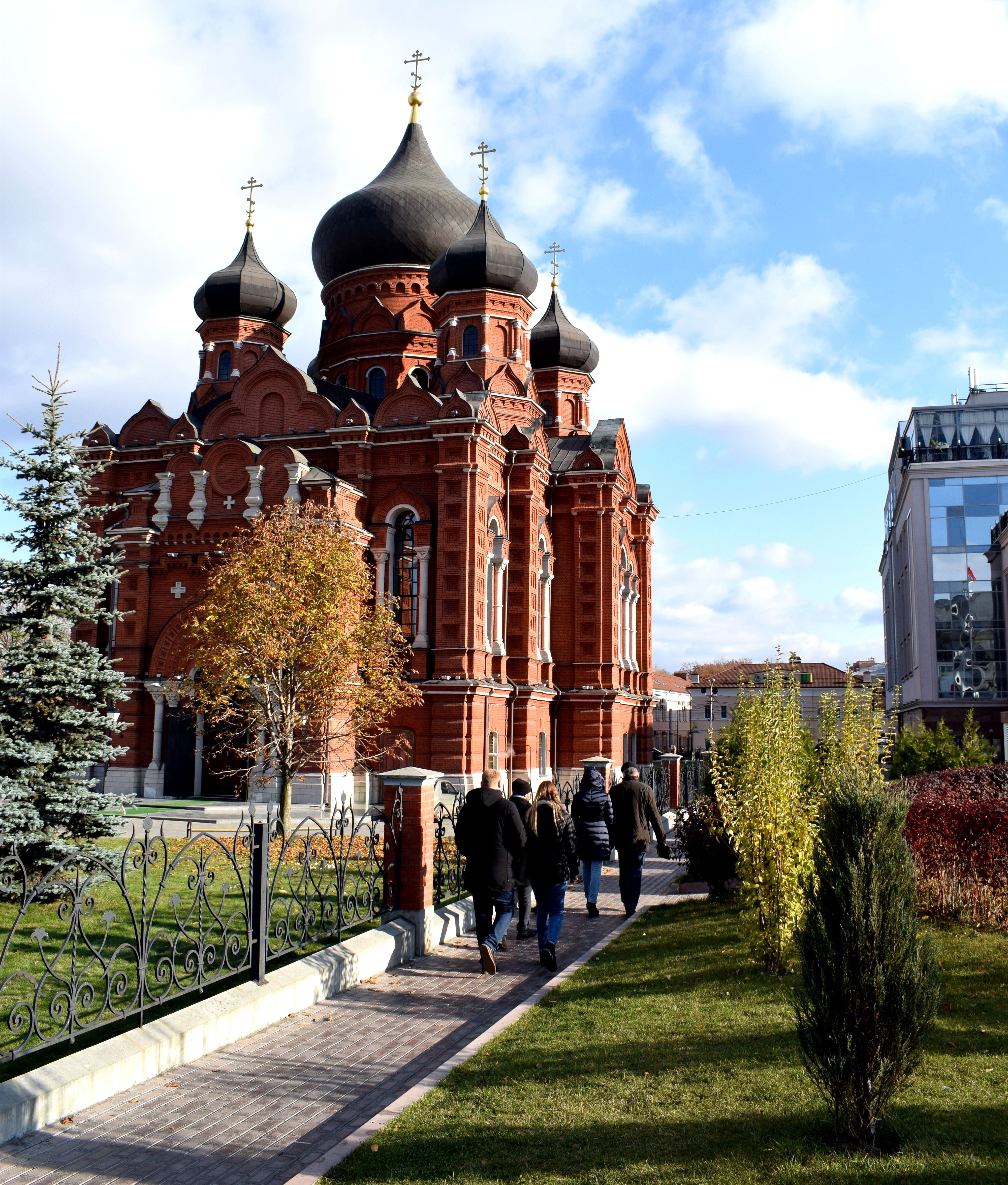 Of course, not all of Tula was destroyed during the Soviet period. Nearby the statue to Lenin is the Uspensky Sobor, one of the few churches that survived the destruction of the 1920s.
Of course, not all of Tula was destroyed during the Soviet period. Nearby the statue to Lenin is the Uspensky Sobor, one of the few churches that survived the destruction of the 1920s.
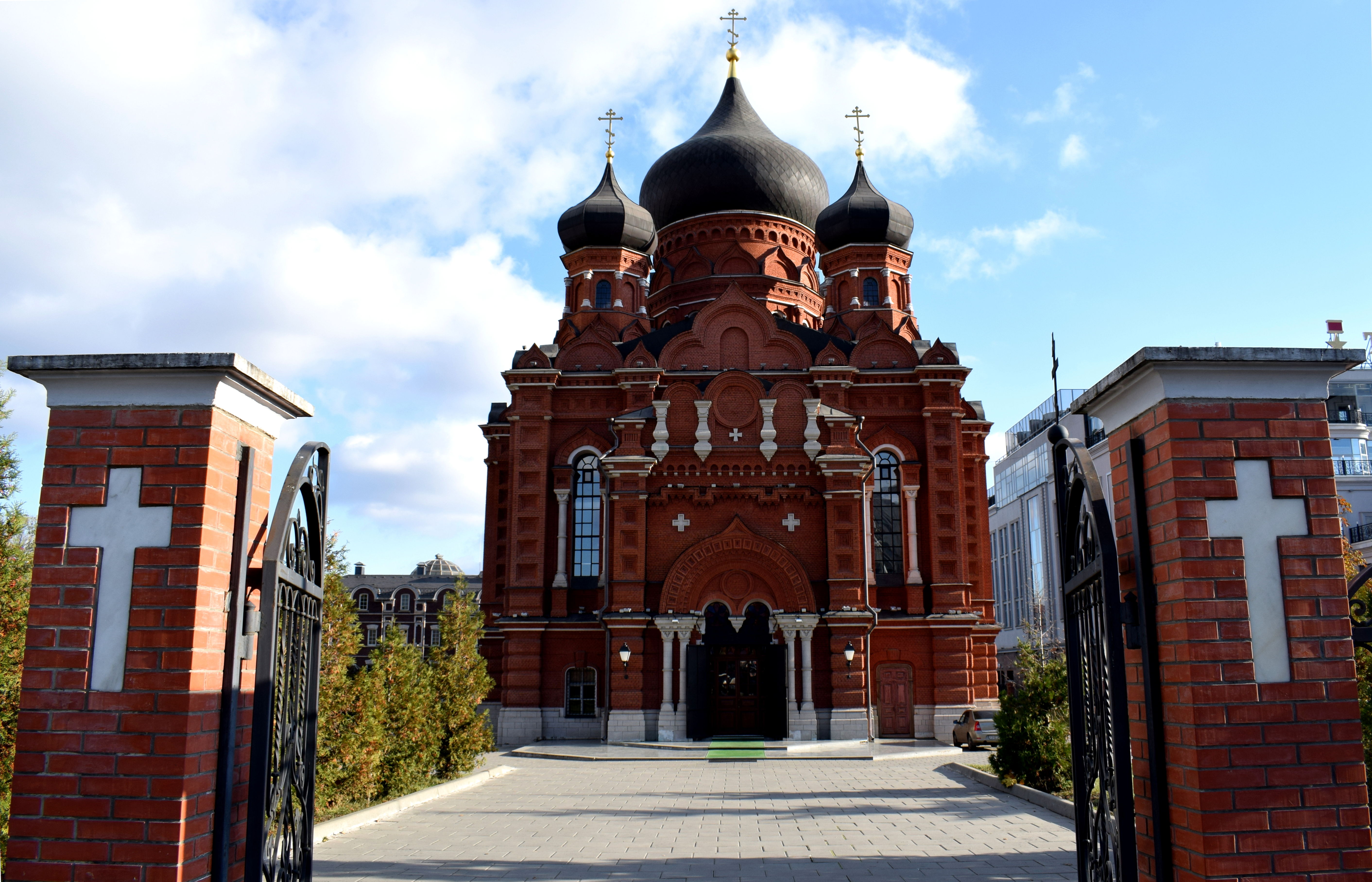 The Uspensky Sobor was built between 1898-1902. The Soviet authorities actually tried to blow up the church in the 1930s, but miraculously the church withstood the blast. A decision was then taken to empty it of all its religious artifacts and close it down. The domes were removed and the building was used as storage for the city’s archives.
The Uspensky Sobor was built between 1898-1902. The Soviet authorities actually tried to blow up the church in the 1930s, but miraculously the church withstood the blast. A decision was then taken to empty it of all its religious artifacts and close it down. The domes were removed and the building was used as storage for the city’s archives.
In the 1980s under Gorbachev an effort was made to restore churches that had been neglected for decades under communism. The domes were put back in place and religious services began once more.
In 2006 the building was finally returned back to the Russian Orthodox Church. Somehow, Tula’s Uspensky Sobor managed to survive 80 years of neglect under Soviet rule. Let’s hope the 21st century treats it better.
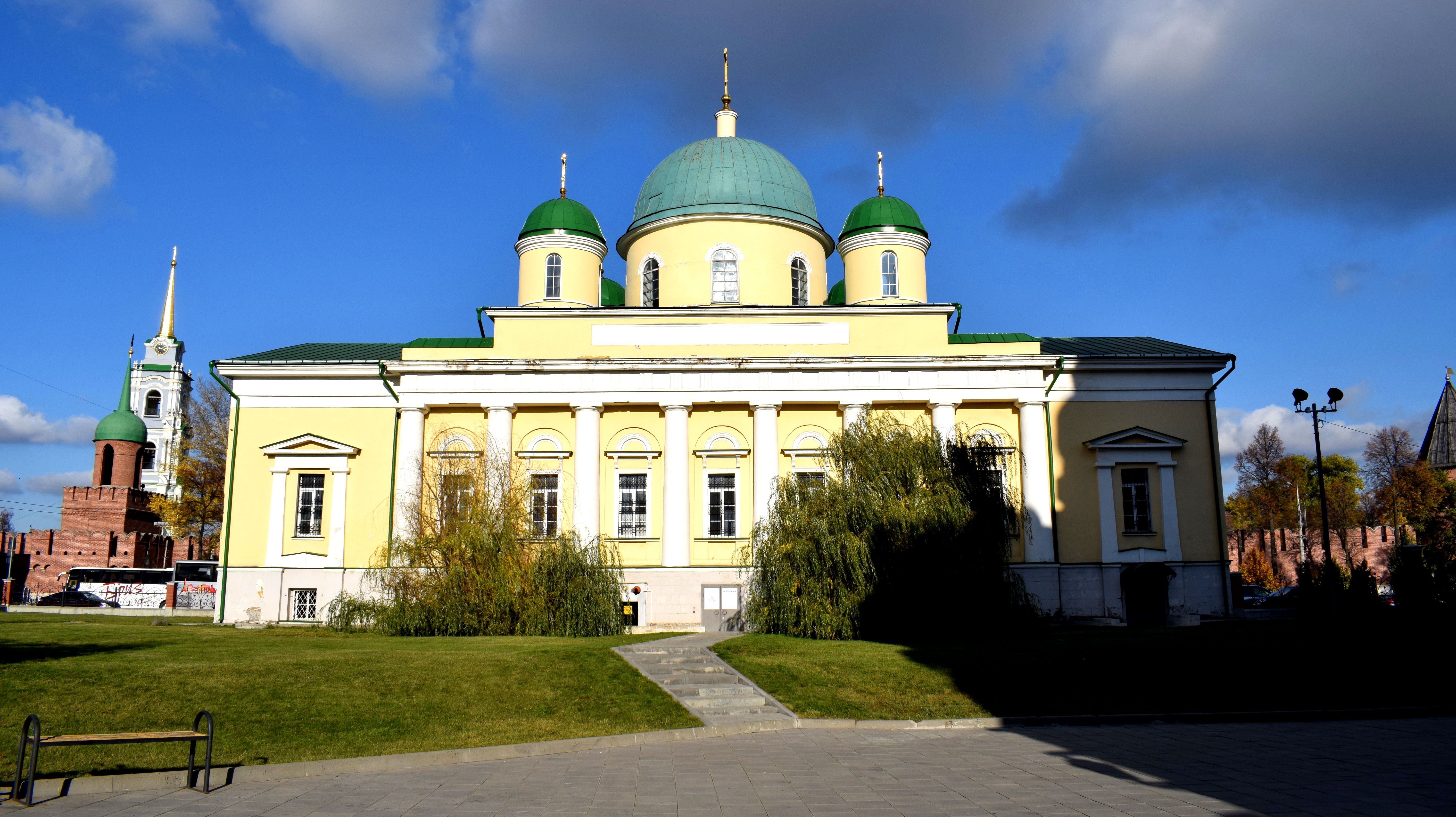 Next to the Uspensky Sobor is Tula’s Preobrazhensky church. Built in 1842 in the Russian classical style, it is another building from the first half of the 19th century that still stands in the city.
Next to the Uspensky Sobor is Tula’s Preobrazhensky church. Built in 1842 in the Russian classical style, it is another building from the first half of the 19th century that still stands in the city.
It too faced threats of disappearing forever under the communists. In the 1920s the dome was torn down but the remainder of the building was left untouched. For a while it functioned as a school, and then in 1960 the building was deemed to be part of the city’s architectural heritage and received protected status.
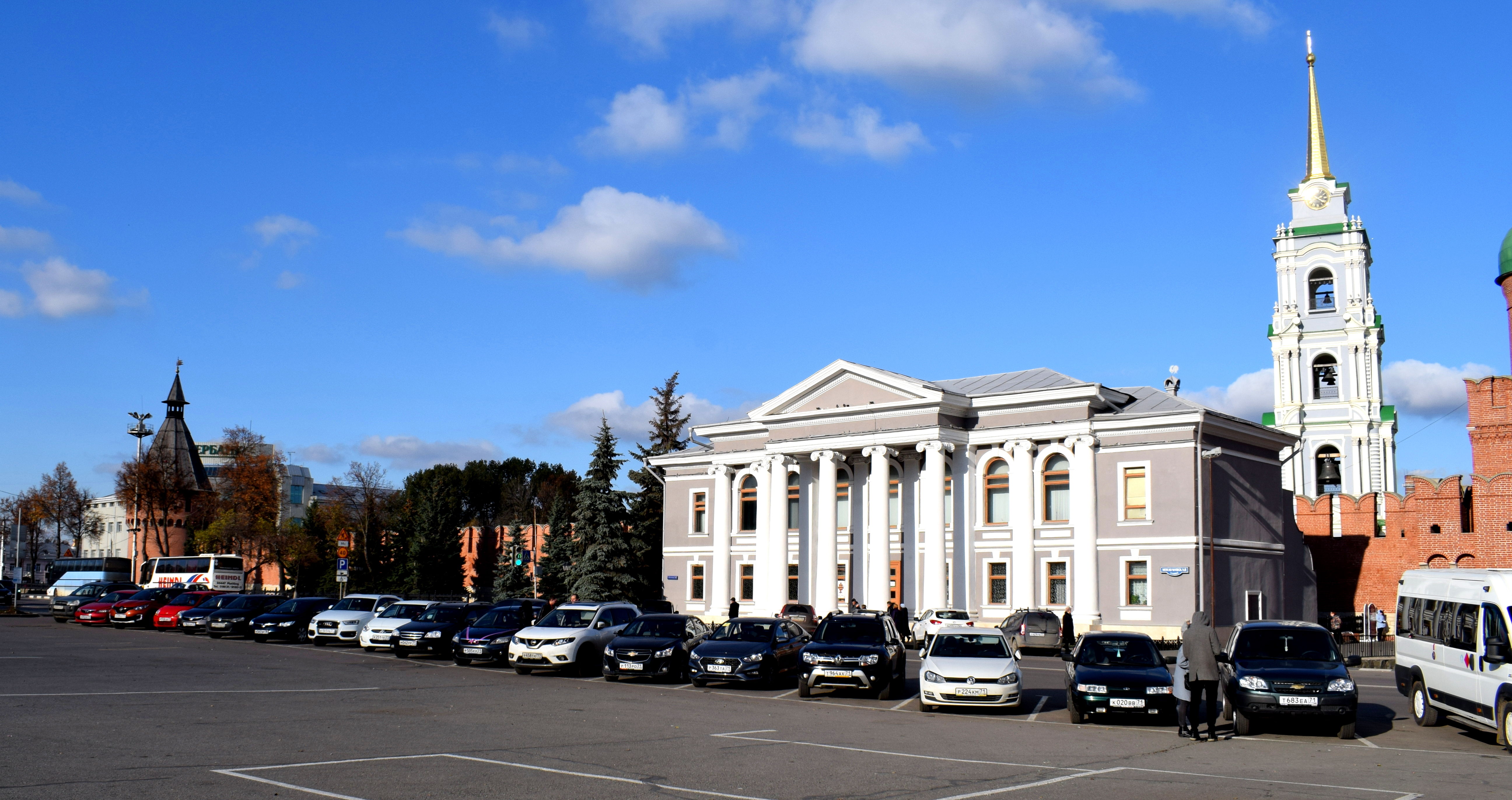 But of course, Tula’s main attraction is its Kremlin. Behind that nice building in purple from the 19th century is the city’s Kremlin, the heart of the city.
But of course, Tula’s main attraction is its Kremlin. Behind that nice building in purple from the 19th century is the city’s Kremlin, the heart of the city.
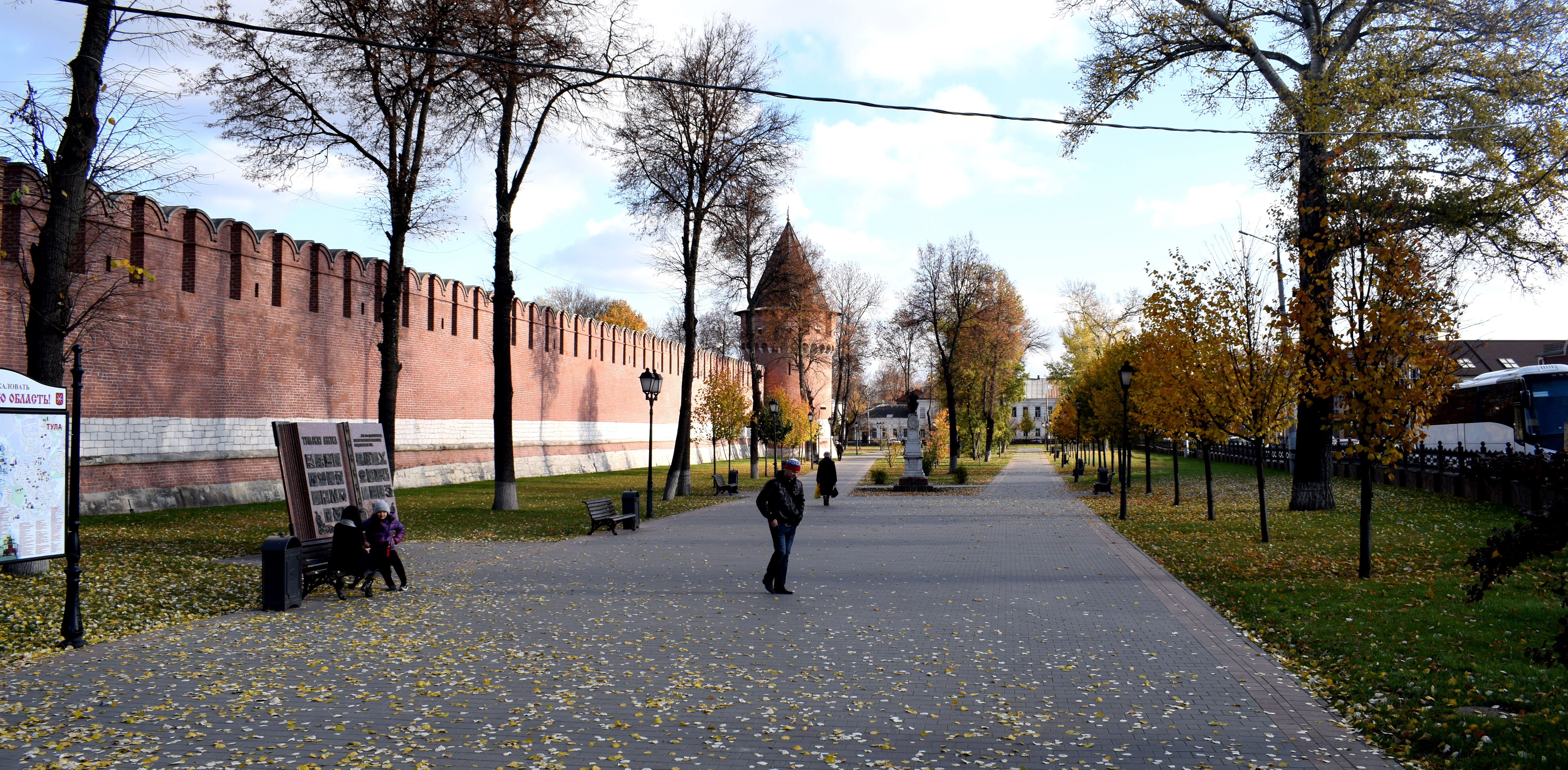 Kremlin means ‘fortress’ in Russian. And you can find Kremlins all over Russia in the country’s historic cities. In fact, the best way to know what cities to visit in Russia is to check whether they have a Kremlin. If there is a Kremlin, that means the city has existed for centuries and is worth visiting.
Kremlin means ‘fortress’ in Russian. And you can find Kremlins all over Russia in the country’s historic cities. In fact, the best way to know what cities to visit in Russia is to check whether they have a Kremlin. If there is a Kremlin, that means the city has existed for centuries and is worth visiting.
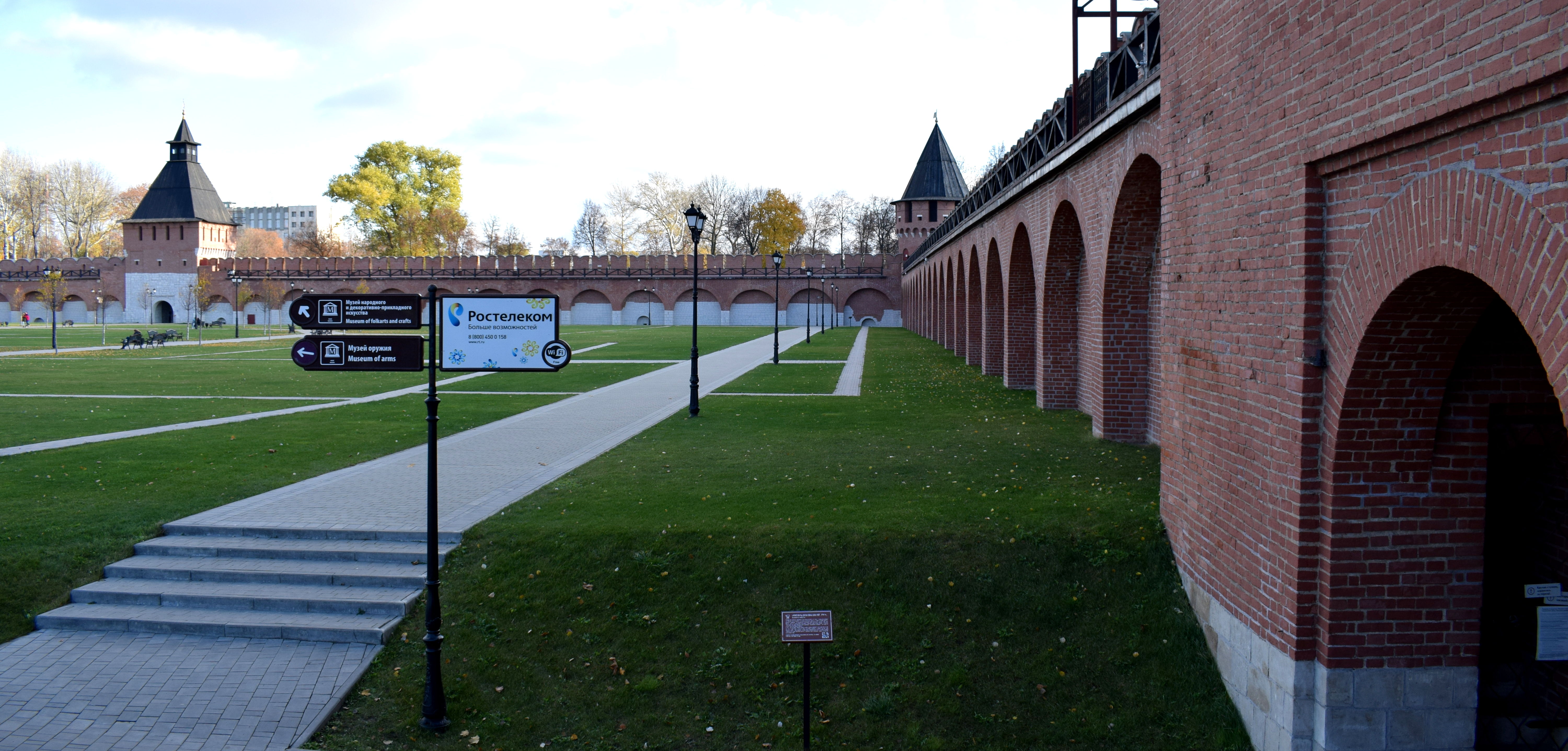 Tula’s Kremlin was built in 1514-1520 by the order of Vasili III of Russia. Vasili III was the Grand Prince of Moscow from 1505-1533. In 1507 he gave the order to construct the Kremlin on the Upa River to protect the city from ongoing raids from the east.
Tula’s Kremlin was built in 1514-1520 by the order of Vasili III of Russia. Vasili III was the Grand Prince of Moscow from 1505-1533. In 1507 he gave the order to construct the Kremlin on the Upa River to protect the city from ongoing raids from the east.
It’s interesting to compare Kremlins in Russia and when they were built. As far as Tula is concerned, it’s Kremlin isn’t the oldest, but neither is it the youngest.
- Veliky Novgorod – 1490
- Moscow – 1495
- Nizhny Novgorod – 1515
- Tula – 1520
- Zaraisk – 1531
- Kolomna – 1531
- Astrakhan – 1581
- Smolensk – 1602
- Rostov – 1680
There’s actually a lot more kremlins in Russia, depending on how you define a Kremlin. Technically many monetarists could be considered Kremlins, but are classified as religious objects, such as Sergiev Posad or Zvenigorod. Some have only been partly preserved, such as Kolomna. In any case, Tula gets the honor of being one of a handful of Russian cities with a Kremlin that’s been fully preserved.
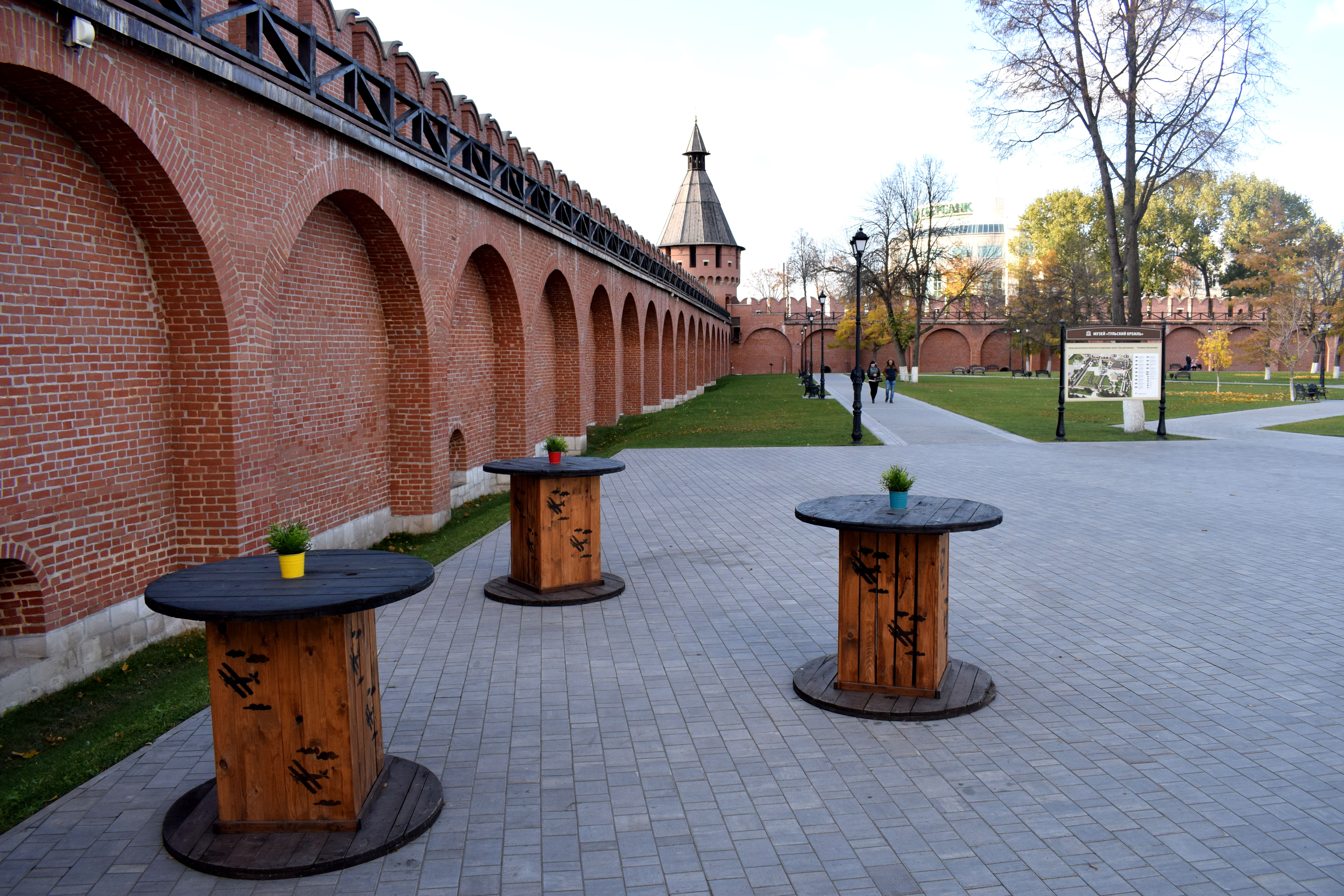 I was surprised at how clean it was inside of Tula’s Kremlin. It was a beautiful place to walk around and relax in. We went in the fall when it was cold outside so there were few people around, but in the summer the inside of the Kremlin fills up with people and even holds concerts inside.
I was surprised at how clean it was inside of Tula’s Kremlin. It was a beautiful place to walk around and relax in. We went in the fall when it was cold outside so there were few people around, but in the summer the inside of the Kremlin fills up with people and even holds concerts inside.
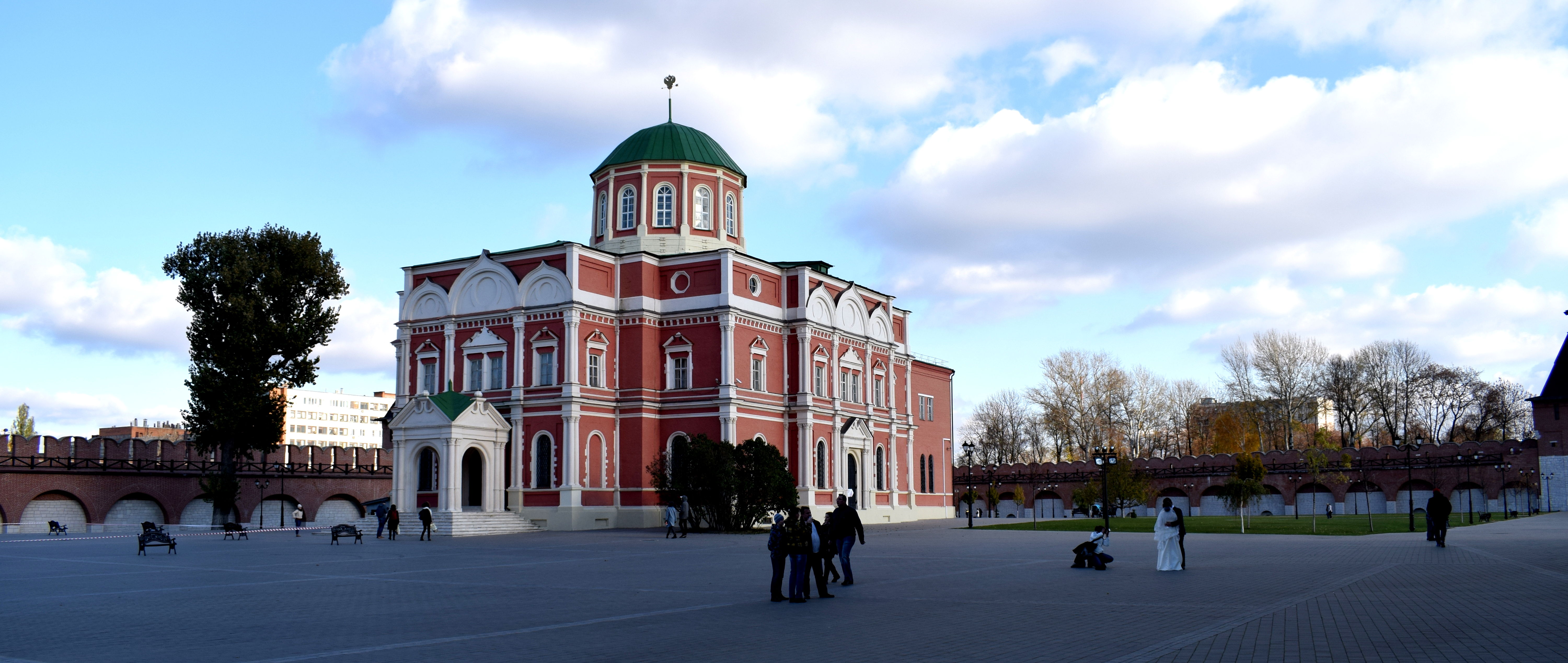 Within the Kremlin there are a few historic buildings.
Within the Kremlin there are a few historic buildings.
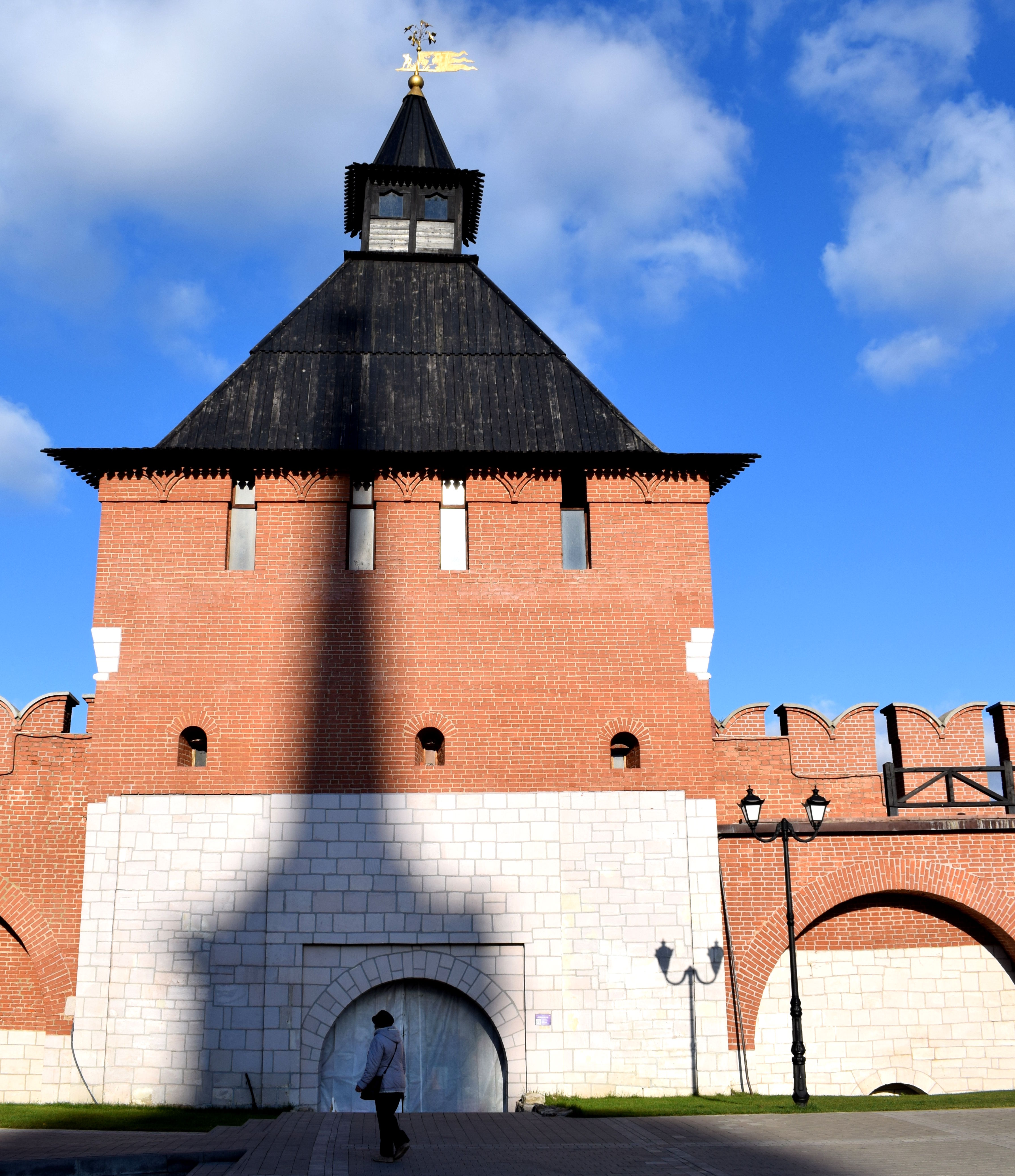 The towers are beautifully preserved. These arches served as lookout posts to shoot at invading armies from the south and east in the 16th century. The Kremlin protected the city’s religious and political elite.
The towers are beautifully preserved. These arches served as lookout posts to shoot at invading armies from the south and east in the 16th century. The Kremlin protected the city’s religious and political elite.
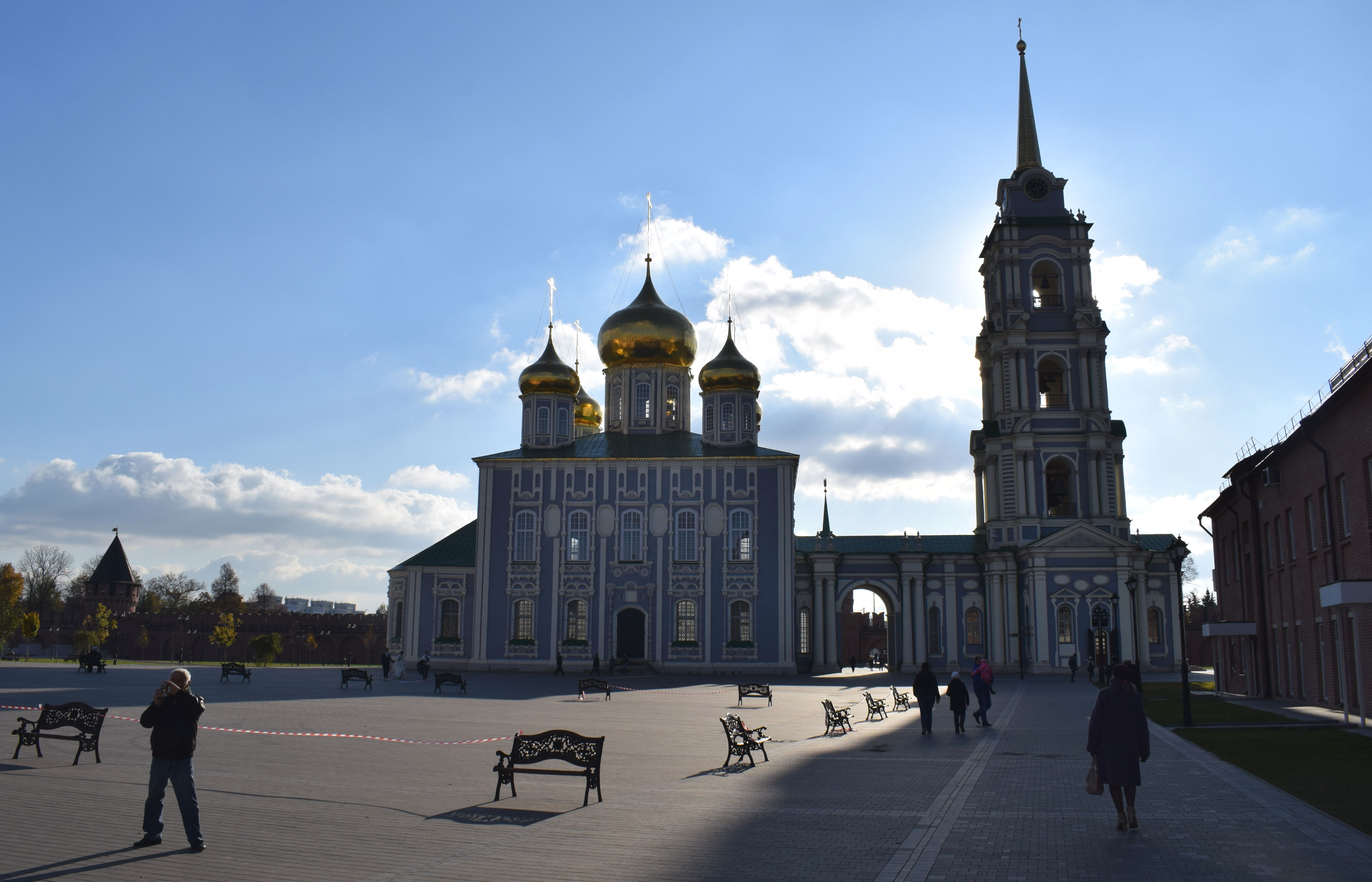 There are two cathedrals located within Tula’s Kremlin. The Assumption Cathedral (1762-1766) and the Epiphany Cathedral (1855-1863).
There are two cathedrals located within Tula’s Kremlin. The Assumption Cathedral (1762-1766) and the Epiphany Cathedral (1855-1863).
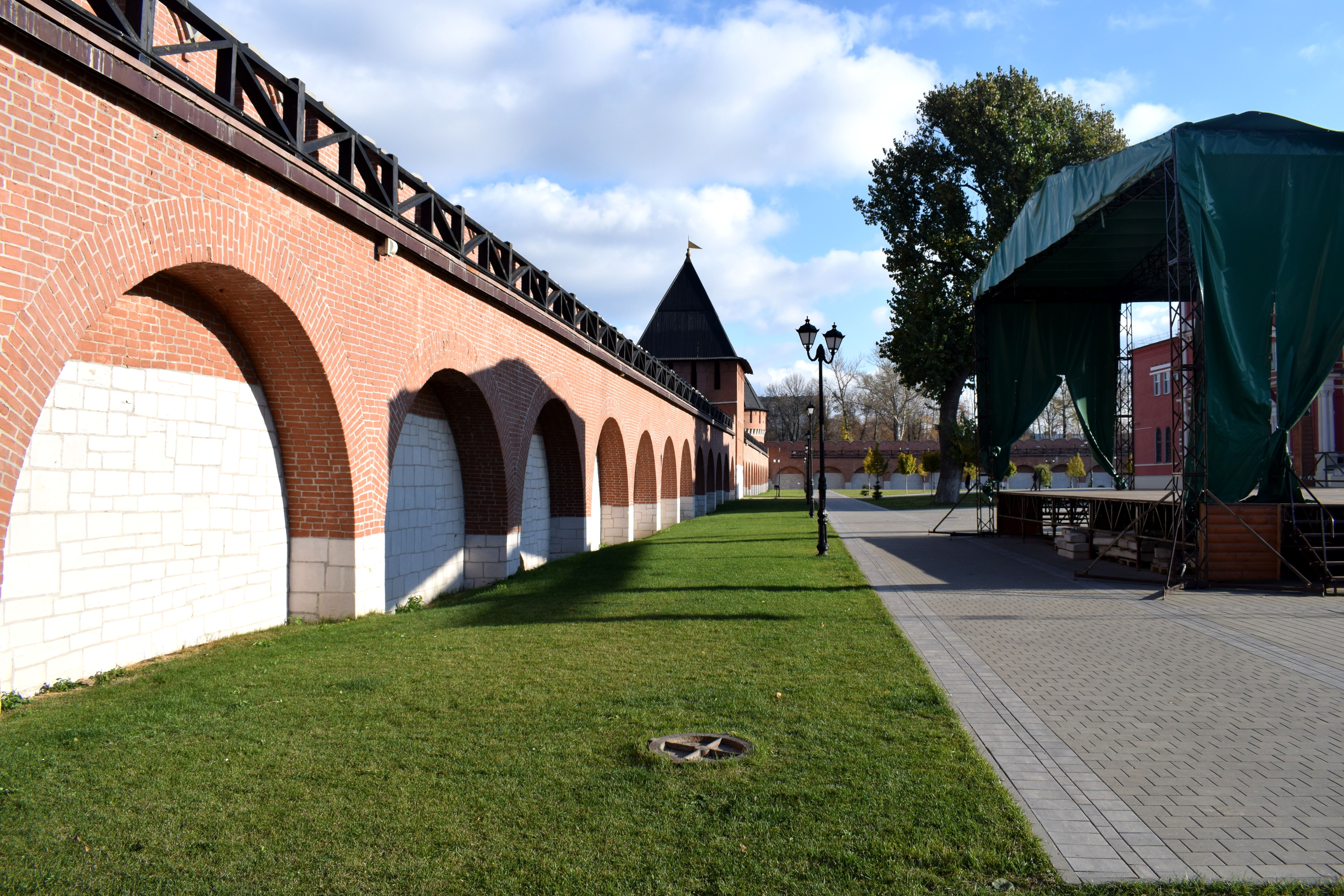 The grass and walls of the Kremlin were impeccably clean. What I loved about the Kremlin in Tula was that it was open to the public. Anyone could walk inside and enjoy the city’s main historical landmark. The same is true of the Kremlins in Nizhny Novgorod and Veliky Novgorod.
The grass and walls of the Kremlin were impeccably clean. What I loved about the Kremlin in Tula was that it was open to the public. Anyone could walk inside and enjoy the city’s main historical landmark. The same is true of the Kremlins in Nizhny Novgorod and Veliky Novgorod.
In Moscow, the Kremlin is closed to the public. In order to visit, you have to pay. And as a result, nobody gets to enjoy the Kremlin. Tourists will pay and go inside when they visit the city. But the actual residents of Moscow, the people that live in the city, never get to enjoy it. It feels separated from the city, not like an integral part of it.
It wasn’t always like this. Up until the Bolshevik revolution in 1917, Moscow’s Kremlin was open to the public and anybody could walk in and out of it. It functioned just like the Kremlins in Tula, Nizhny Novgorod, Veliky Novgorod and so forth.
Moscow should learn from these cities and open their own Kremlin up to the public. The city would become much more attractive.
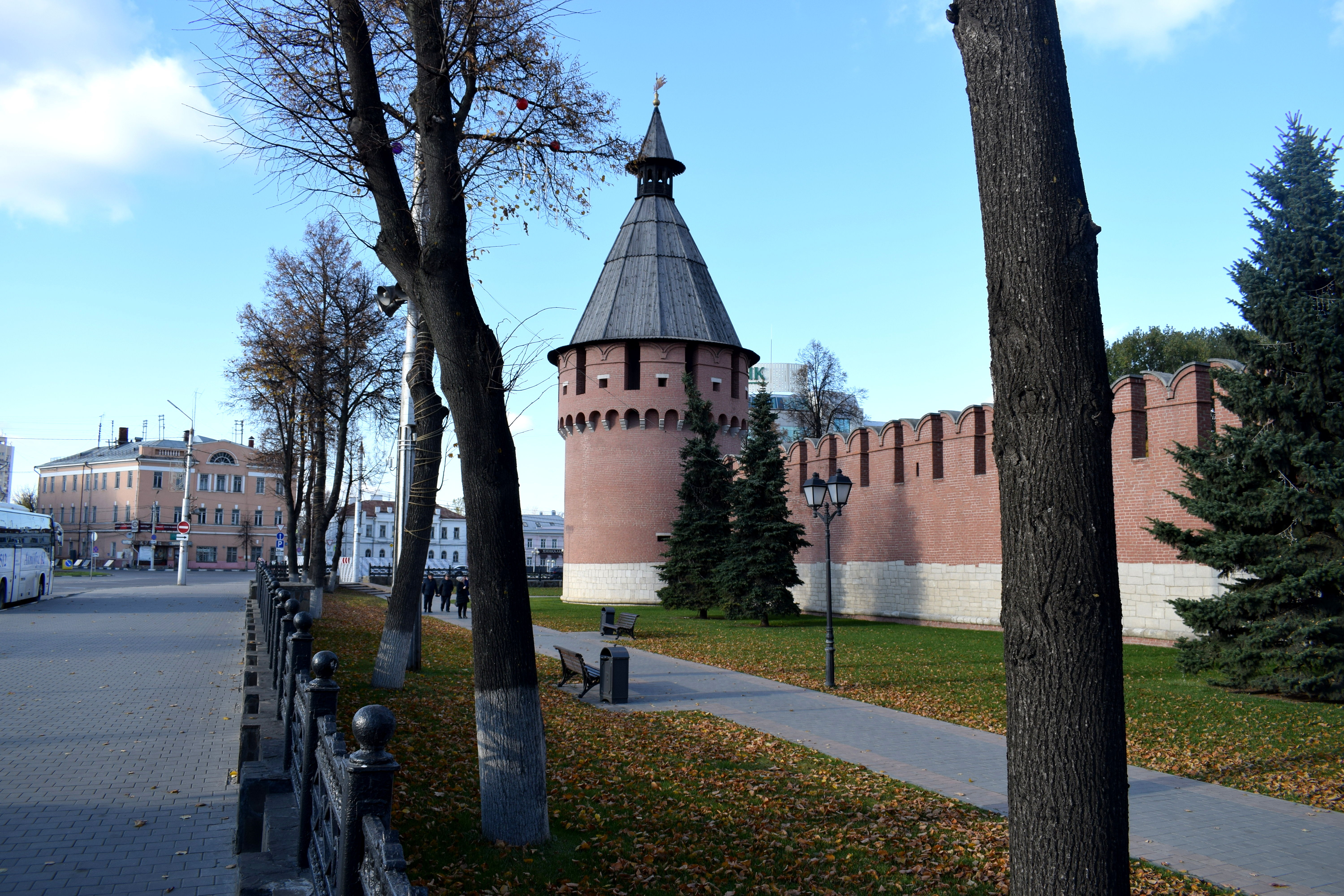 Outside of the Kremlin looking at one of the Kremlin’s towers and observation posts.
Outside of the Kremlin looking at one of the Kremlin’s towers and observation posts.
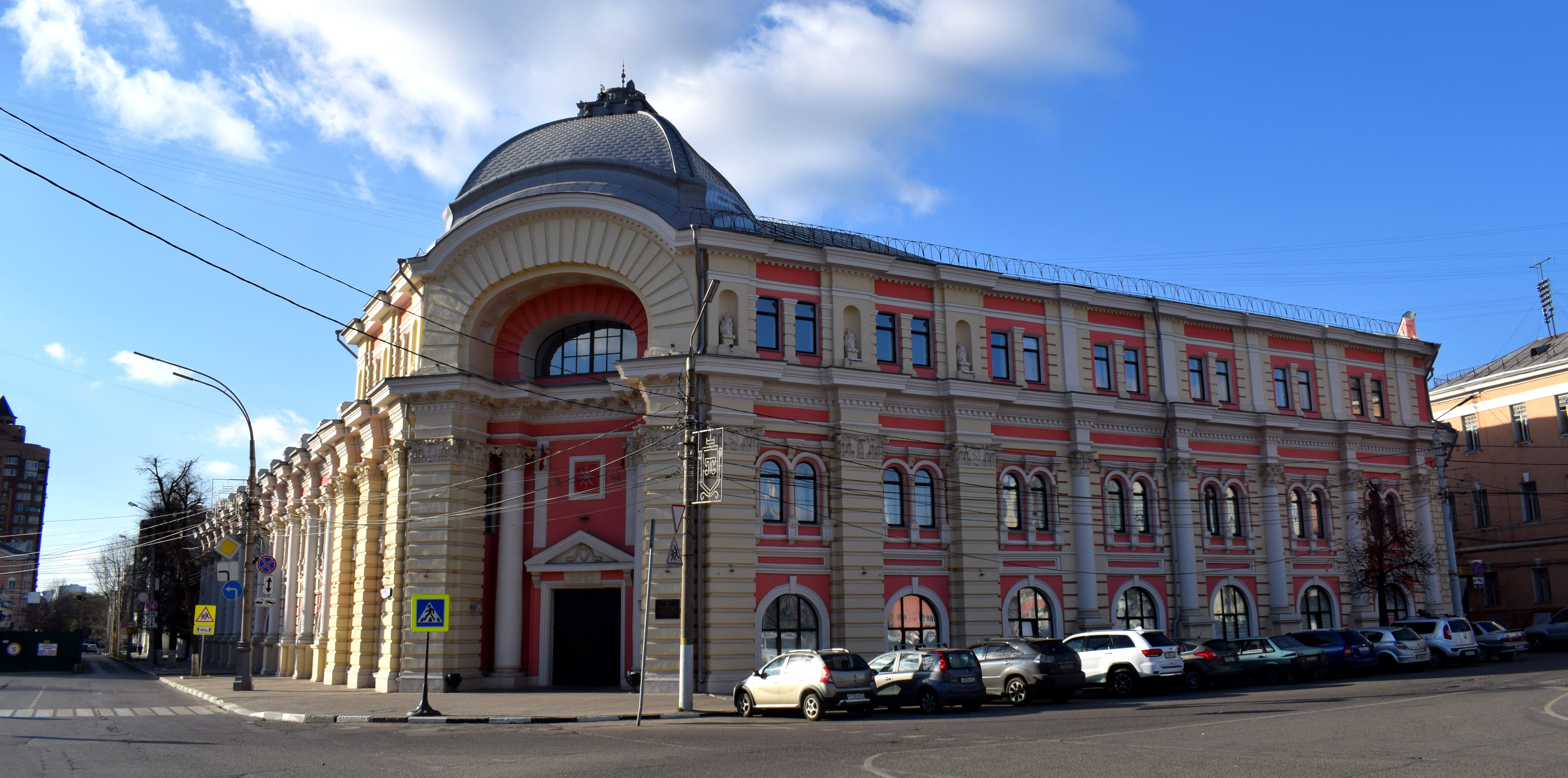 Of course, there is more to Tula than just the Kremlin. Despite significant damage the city faced in WWII and attempts by the Soviets to raze down historical buildings, a number of streets in the city were filled with architecture from the 19th and early 20th century.
Of course, there is more to Tula than just the Kremlin. Despite significant damage the city faced in WWII and attempts by the Soviets to raze down historical buildings, a number of streets in the city were filled with architecture from the 19th and early 20th century.
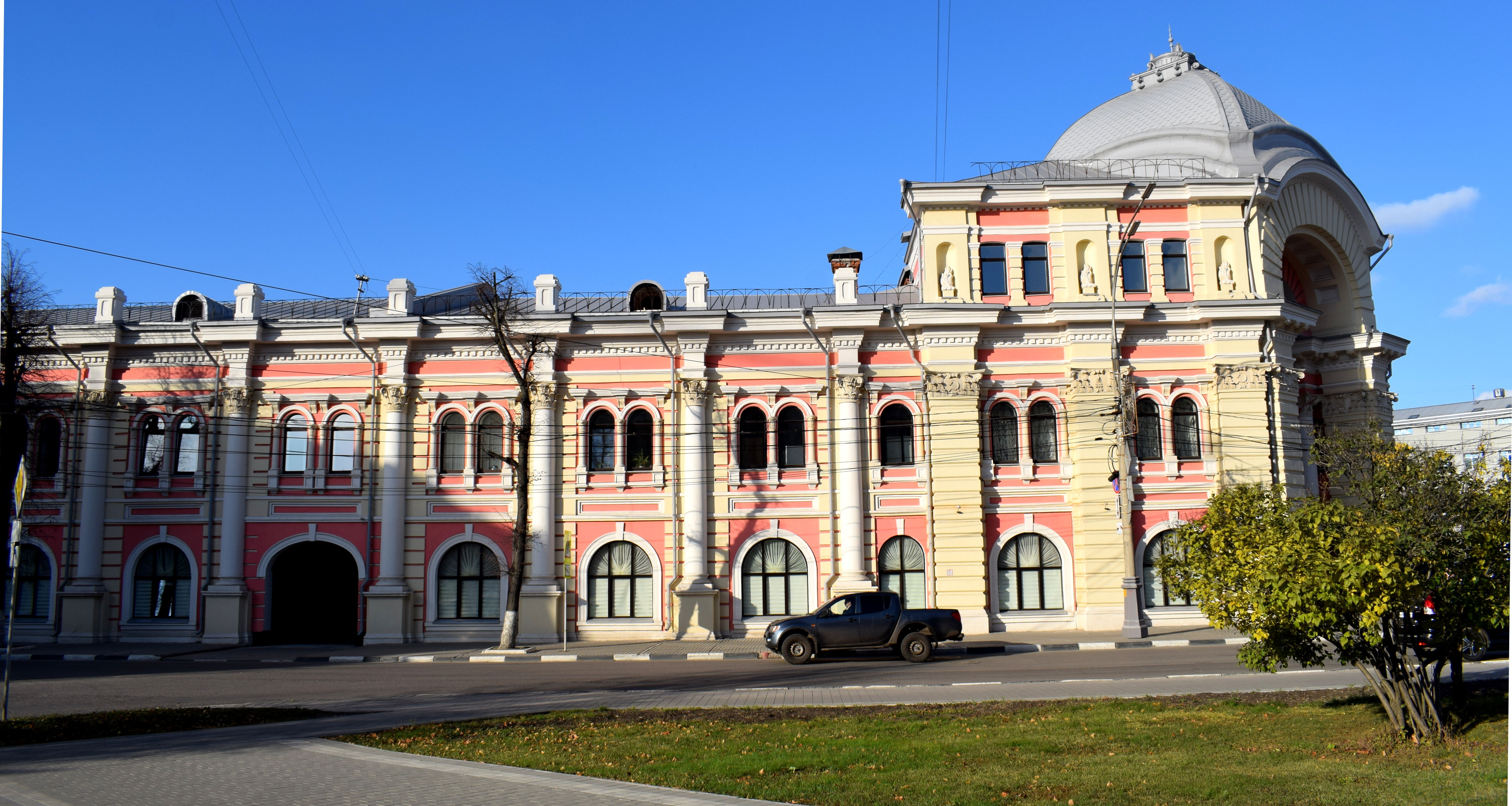 It’s buildings like these that make it especially enjoyable for me to visit smaller Russian cities. They are a testament to the fundamentally European nature of Russia. There really is nothing distinguishing these kind of buildings from any others you find in Europe.
It’s buildings like these that make it especially enjoyable for me to visit smaller Russian cities. They are a testament to the fundamentally European nature of Russia. There really is nothing distinguishing these kind of buildings from any others you find in Europe.
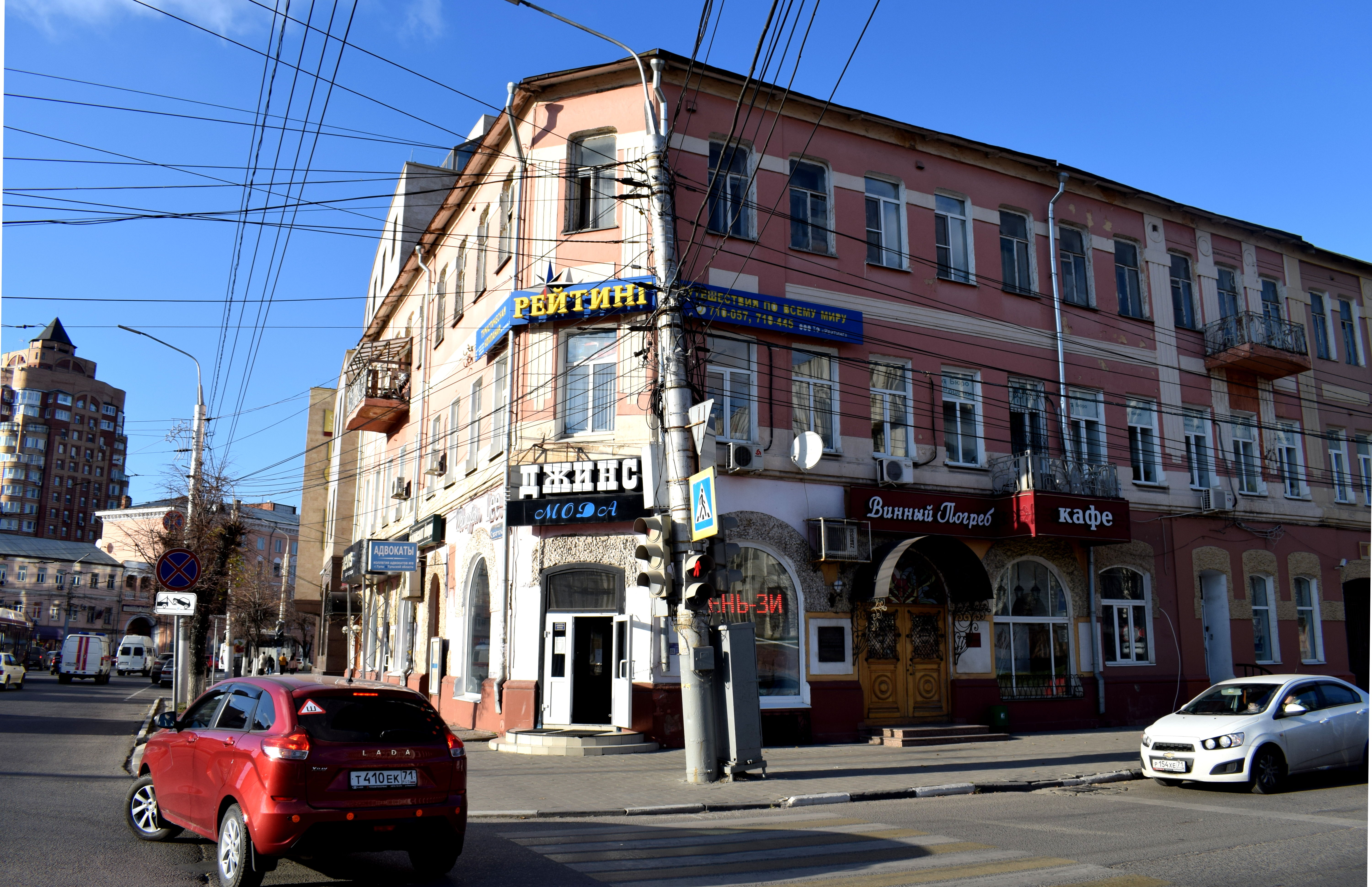 The only difference is that they were in slightly worse shape in Tula. One problem I noticed in the city was the huge amount of advertisements that covered up many buildings. The city clearly needed a design code, so that store signs and advertisements would not cover up the facades of buildings. Tula could learn from other cities in Eastern Europe like Szeged, Hungary that have successfully managed to implement a design code.
The only difference is that they were in slightly worse shape in Tula. One problem I noticed in the city was the huge amount of advertisements that covered up many buildings. The city clearly needed a design code, so that store signs and advertisements would not cover up the facades of buildings. Tula could learn from other cities in Eastern Europe like Szeged, Hungary that have successfully managed to implement a design code.
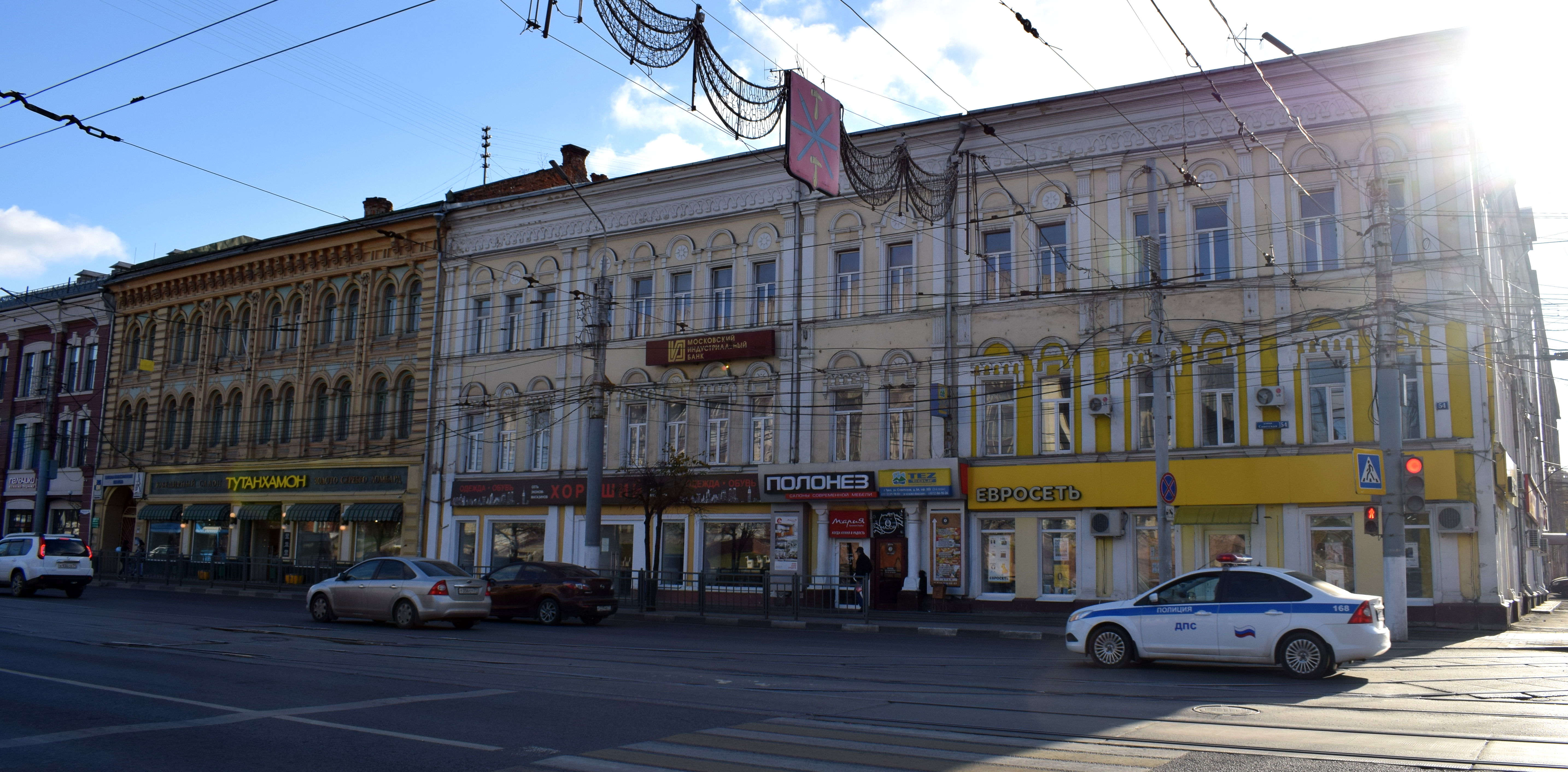 Despite the advertising, the historic nature of Tula’s center shined through. You could tell this was a city that had stood here for a long time, with history to it.
Despite the advertising, the historic nature of Tula’s center shined through. You could tell this was a city that had stood here for a long time, with history to it.
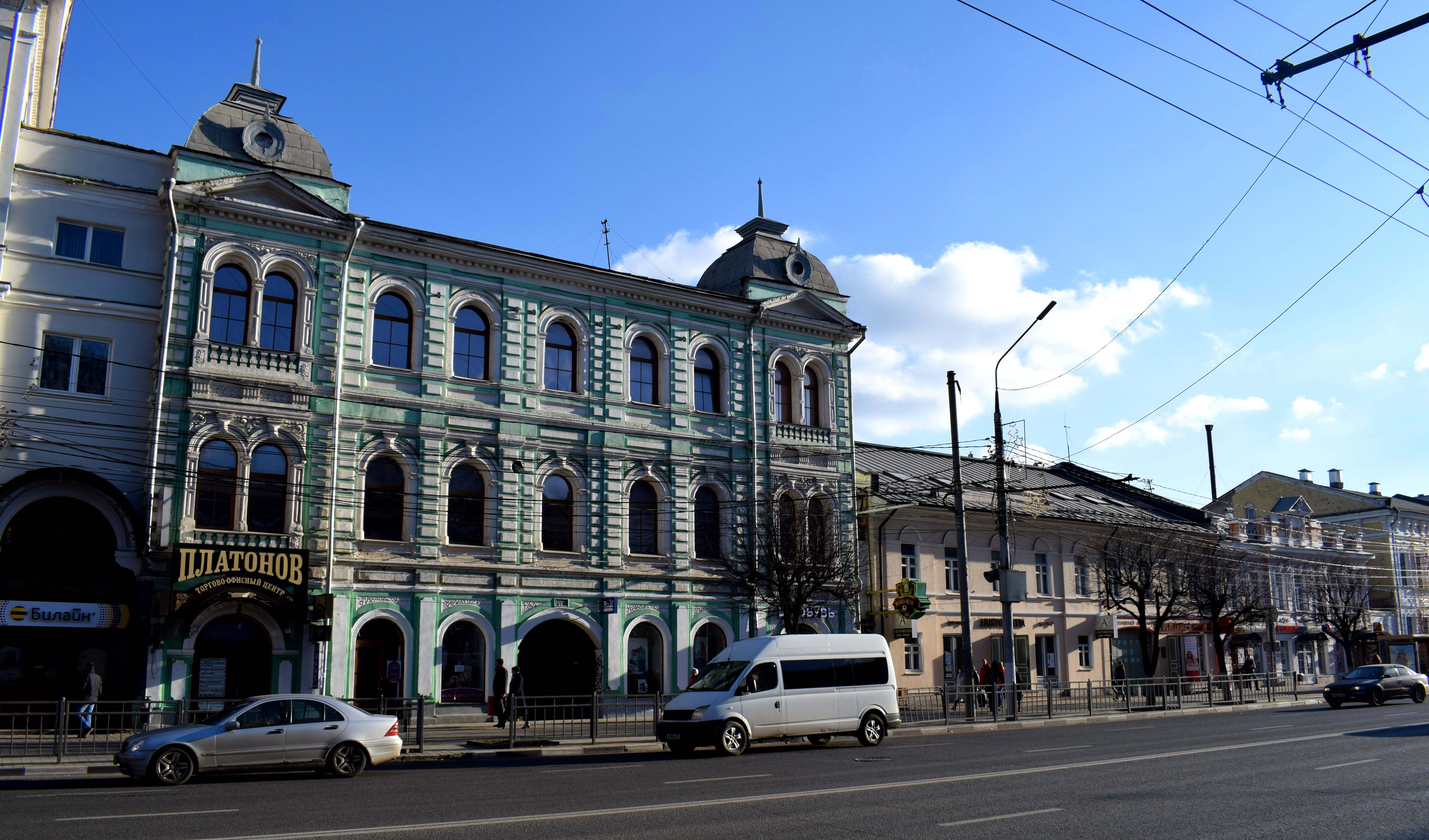 Without the old buildings, Tula would lose its character. It’s these kind of buildings that need to be preserved at all costs. All over Russia, unfortunately, provincial cities are seeing their historical centers torn down. There are a lot of reasons for this – corruption, poor laws, education – but the net result is that these towns lose any tourist potential they still have. Let’s hope that Tula does not follow the same path and preserves the architectural heritage it has left.
Without the old buildings, Tula would lose its character. It’s these kind of buildings that need to be preserved at all costs. All over Russia, unfortunately, provincial cities are seeing their historical centers torn down. There are a lot of reasons for this – corruption, poor laws, education – but the net result is that these towns lose any tourist potential they still have. Let’s hope that Tula does not follow the same path and preserves the architectural heritage it has left.
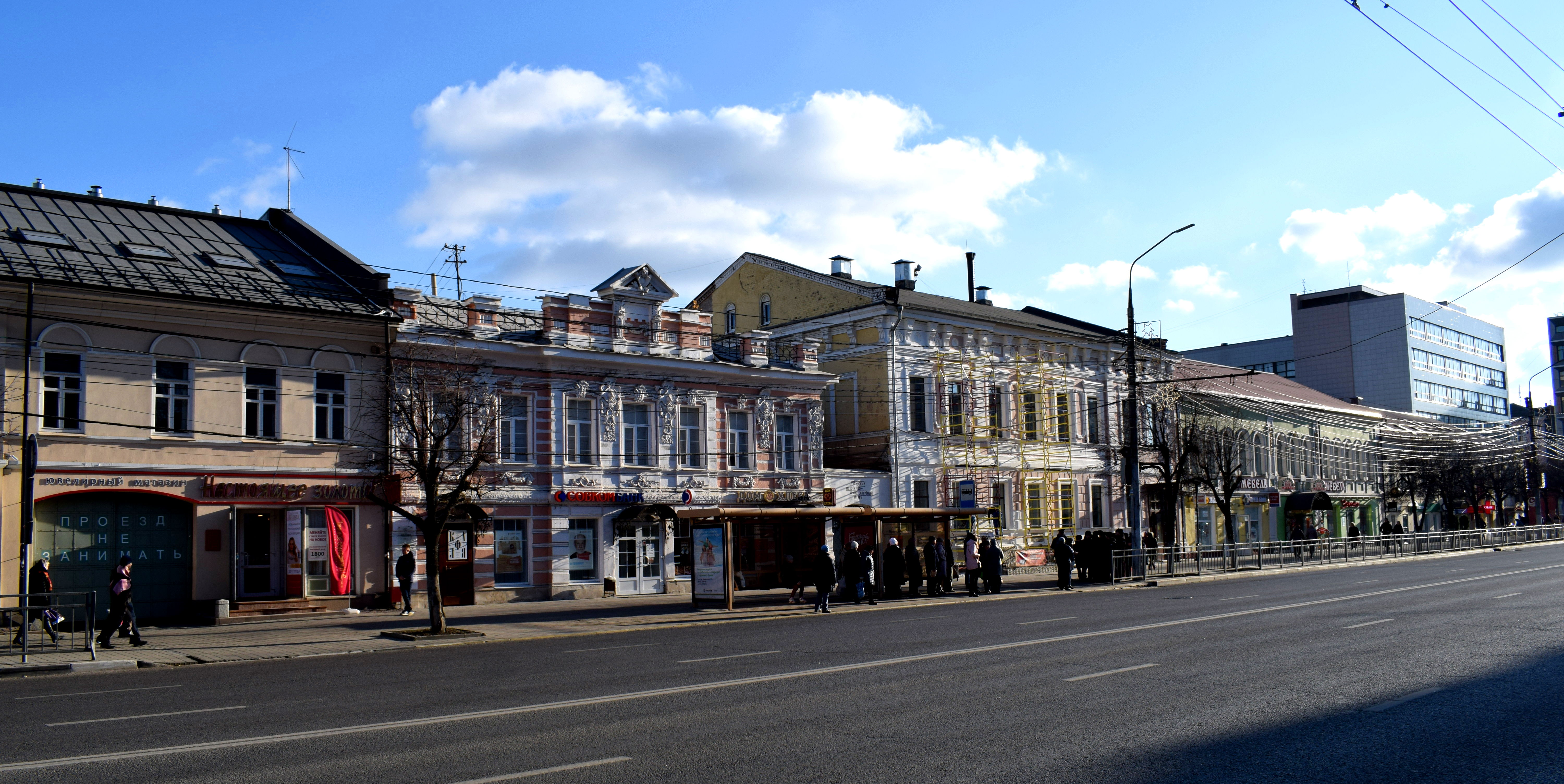 As things stand right now, the city is in a great position to set itself up as a major tourist attraction for foreigners who visit Moscow and want to do a day trip to a city nearby.
As things stand right now, the city is in a great position to set itself up as a major tourist attraction for foreigners who visit Moscow and want to do a day trip to a city nearby.
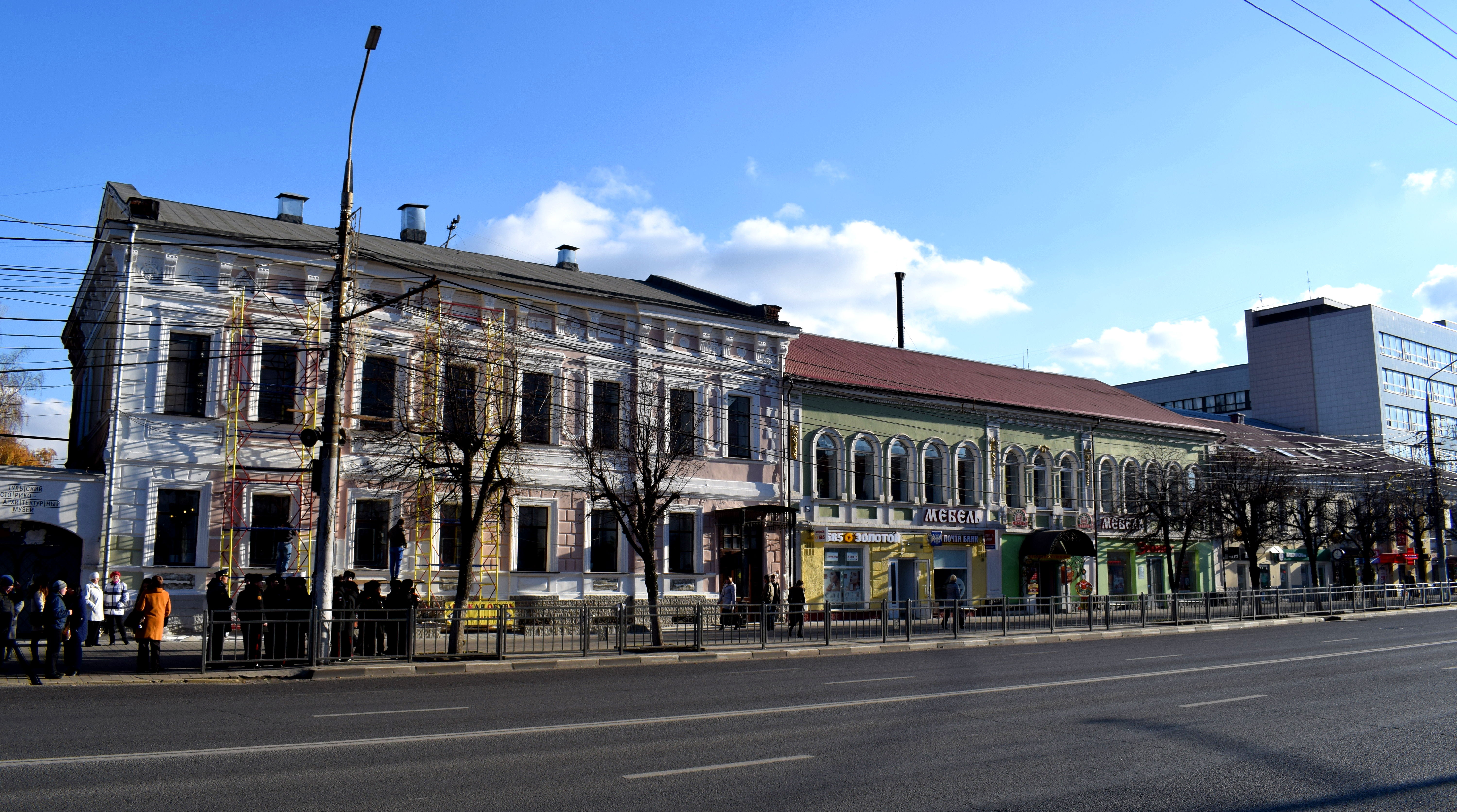 There is already talk of Russia lifting tourist restrictions for Europeans in 2021. After that, any EU citizen will be able to come to Russia without going through the complicated process of obtaining a visa. When this takes place, tourism to Russian cities will skyrocket. By preserving these buildings, Tula will ensure that foreigners will actually have something to see when they visit.
There is already talk of Russia lifting tourist restrictions for Europeans in 2021. After that, any EU citizen will be able to come to Russia without going through the complicated process of obtaining a visa. When this takes place, tourism to Russian cities will skyrocket. By preserving these buildings, Tula will ensure that foreigners will actually have something to see when they visit.
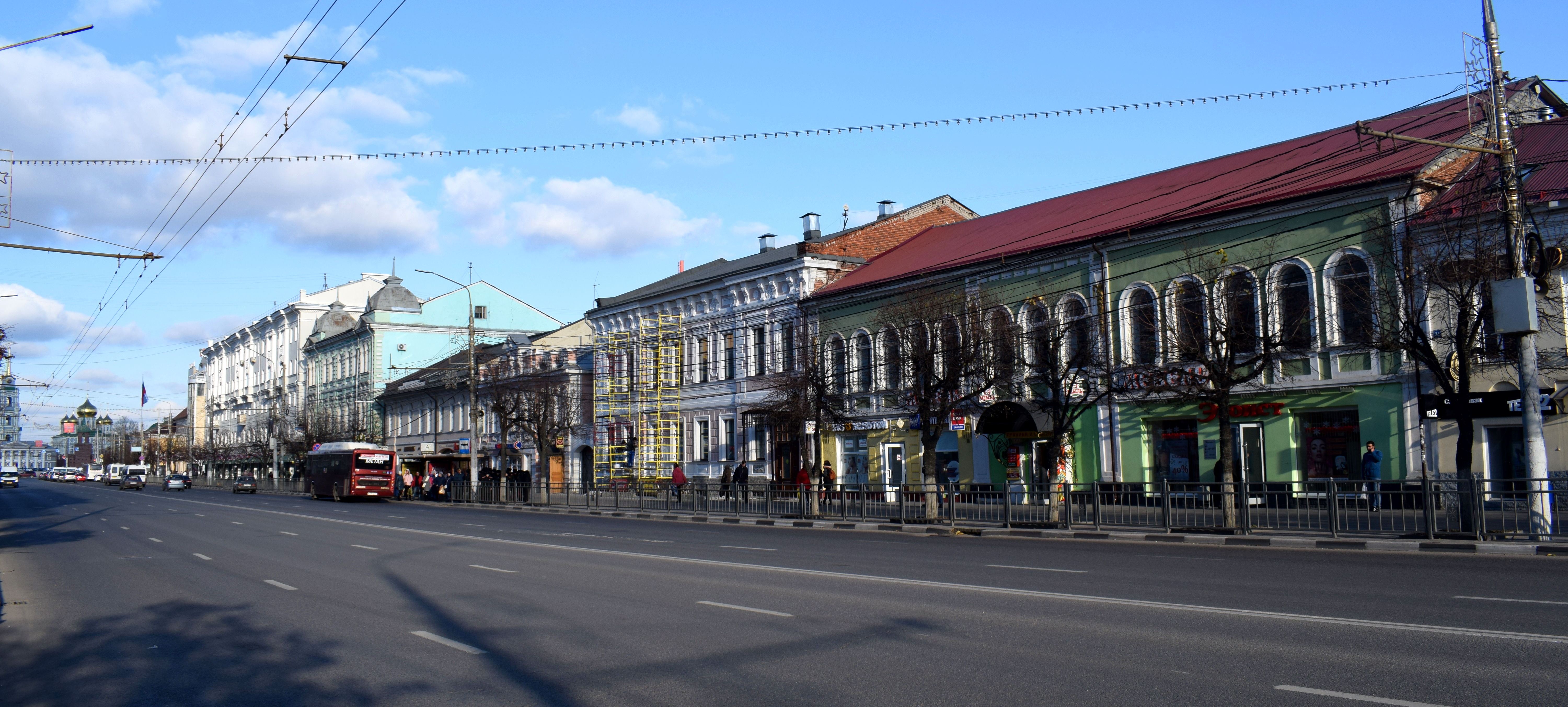 One of Tula’s main streets downtown.
One of Tula’s main streets downtown.
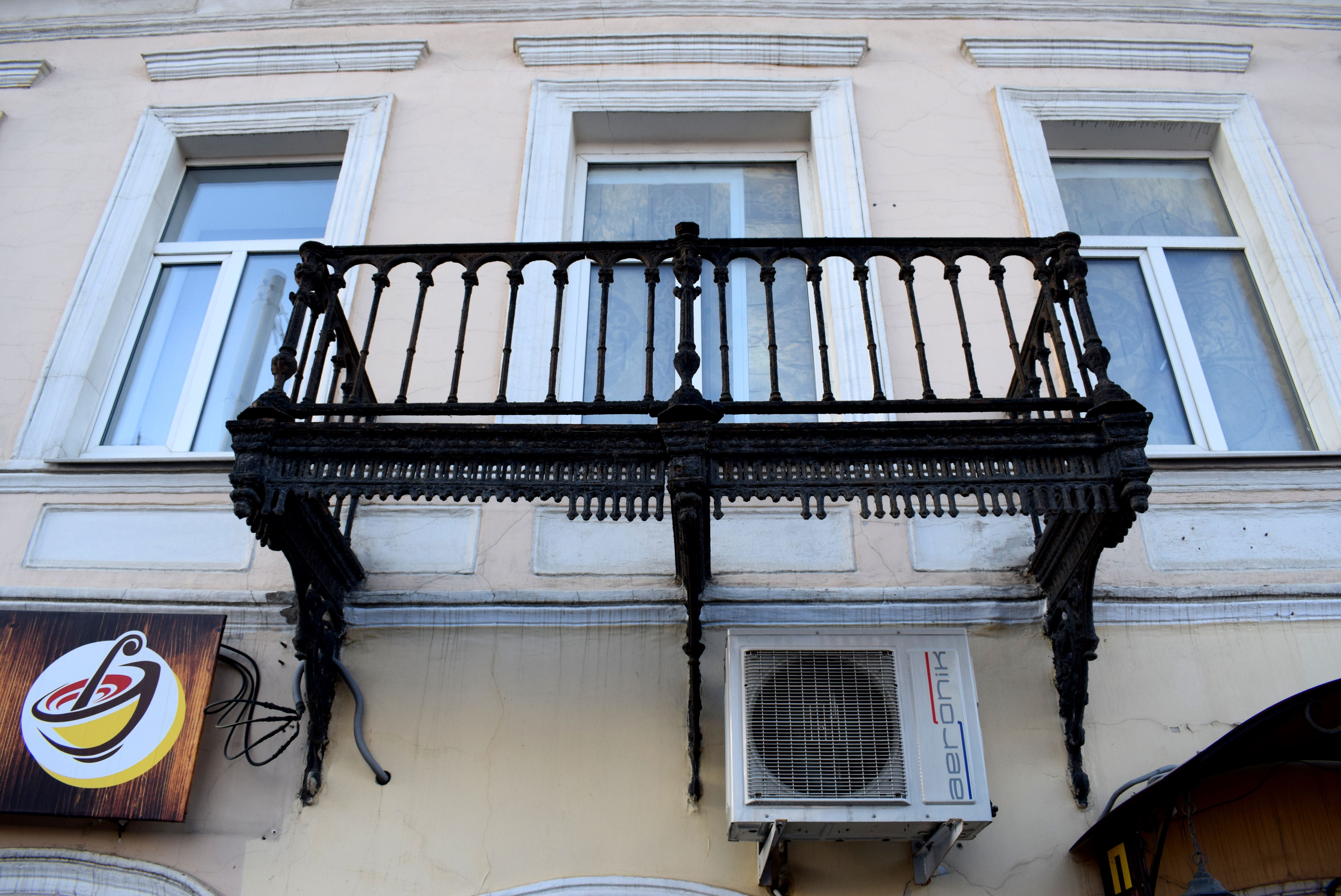 A half-finished balcony.
A half-finished balcony.
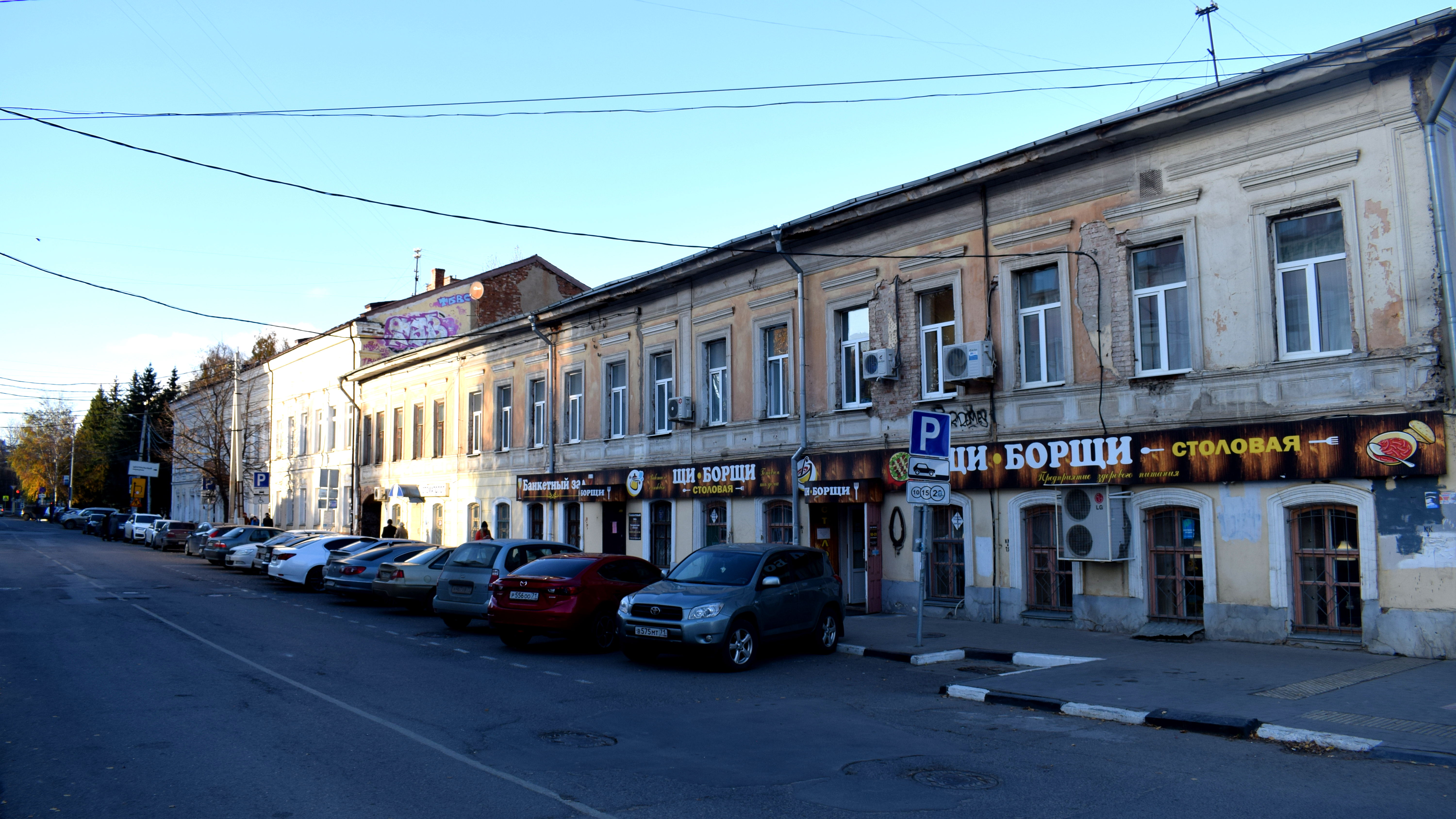 A smaller side street in Tula. If these buildings were renovated properly, they could form great places for small cafes, bookshops, coworking spaces and so forth.
A smaller side street in Tula. If these buildings were renovated properly, they could form great places for small cafes, bookshops, coworking spaces and so forth.
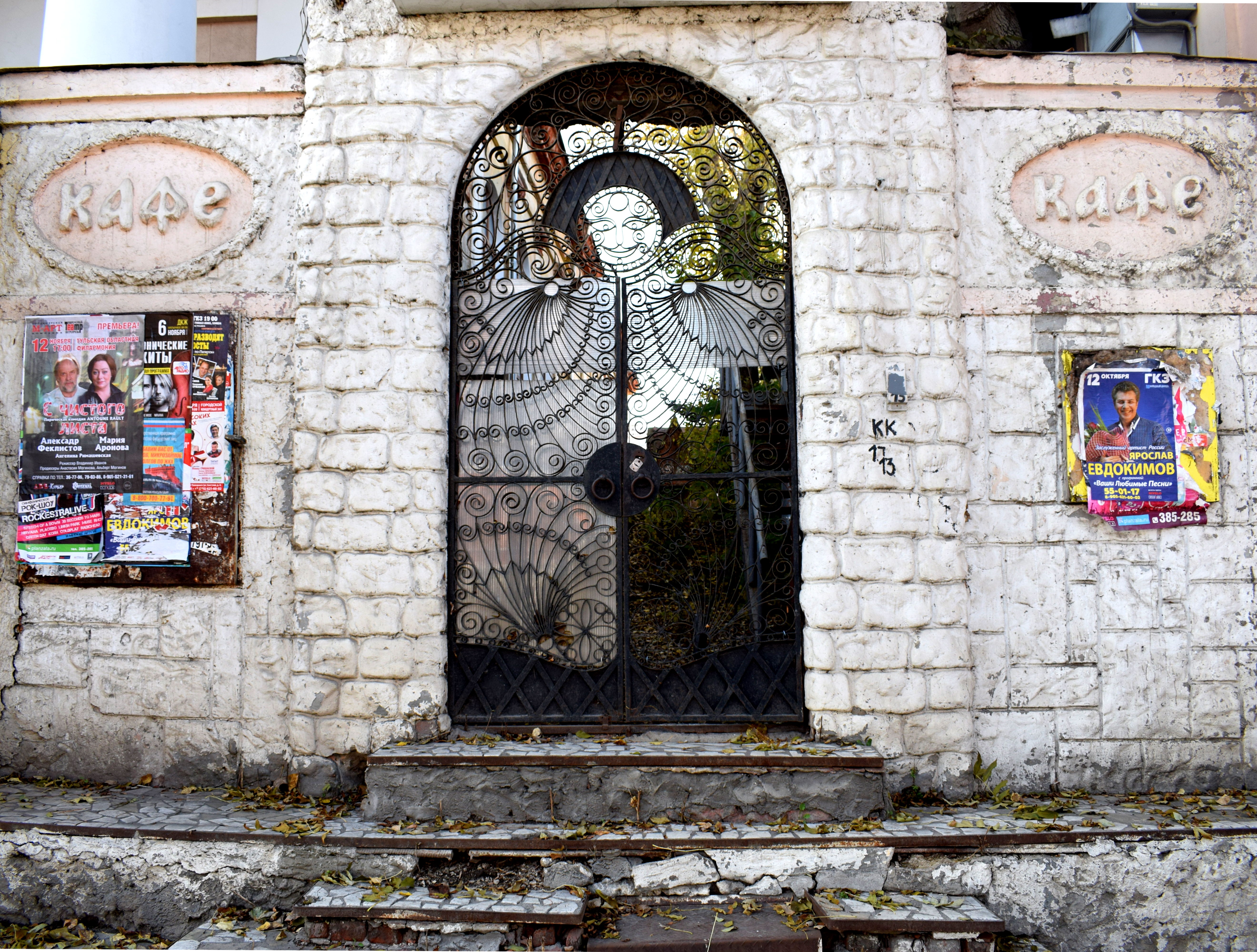 A lot of areas in the city had an abandoned feeling to them. The historic gates here used to open up to a cafe. It was empty and overgrown with trees now.
A lot of areas in the city had an abandoned feeling to them. The historic gates here used to open up to a cafe. It was empty and overgrown with trees now.
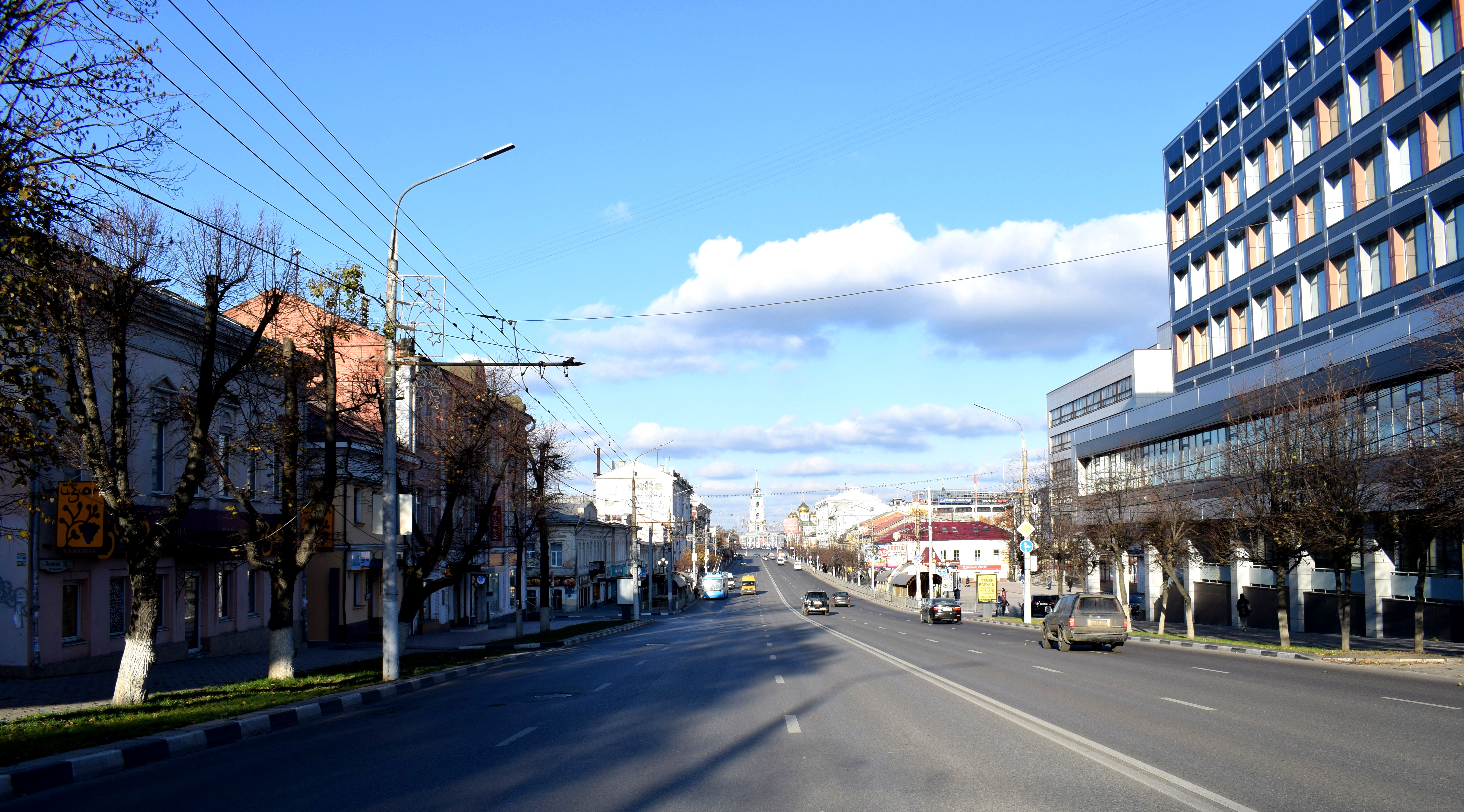 A look down toward the center of Tula. The tall church in the background is where Tula’s Kremlin is located.
A look down toward the center of Tula. The tall church in the background is where Tula’s Kremlin is located.
One problem in Tula were the wide streets that favored cars. Tula’s main street in the city that went through the center of the city had three lanes for cars going in each direction.
It was no wonder, therefore that cars drove very fast. In fact, I was quite surprised at just how loud Tula was for a city of only half a million people. It felt like on every street there was the constant noise of cars rushing by.
What should Tula do instead? Streets like these should be reduced in size and preference given to pedestrians and cyclists. Two lanes in the middle should go toward a tram line, the other two narrowed in size to make way for a bike lane going in both directions.
Tula in fact, had tram lines operating on its main streets up until WWII, before the government decided to get rid of them.
Giving the streets back to the people would make the city a more comfortable place to live.
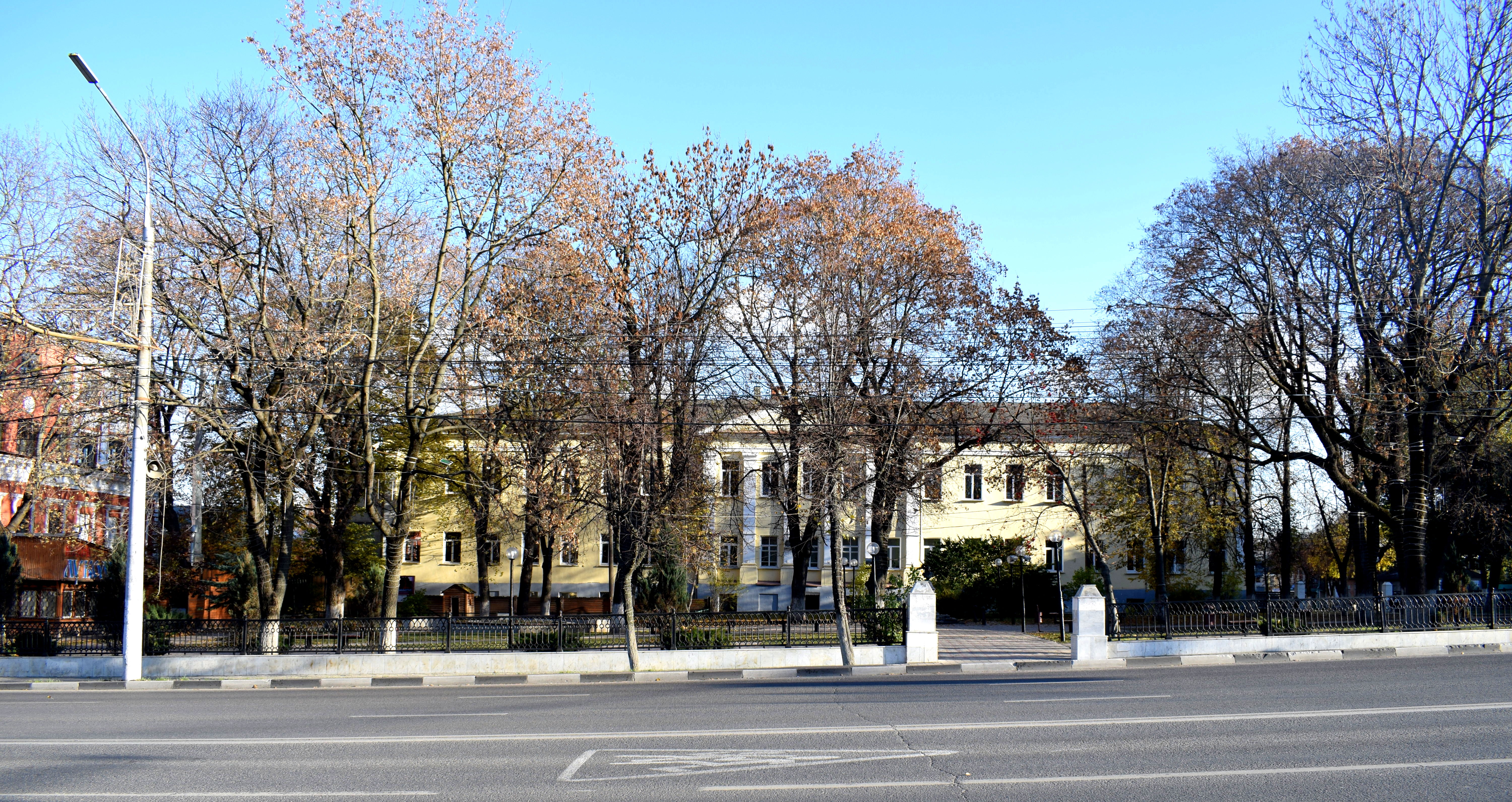 Another beautiful building from the 19th century. It was early October and many trees had already lost most of their leaves.
Another beautiful building from the 19th century. It was early October and many trees had already lost most of their leaves.
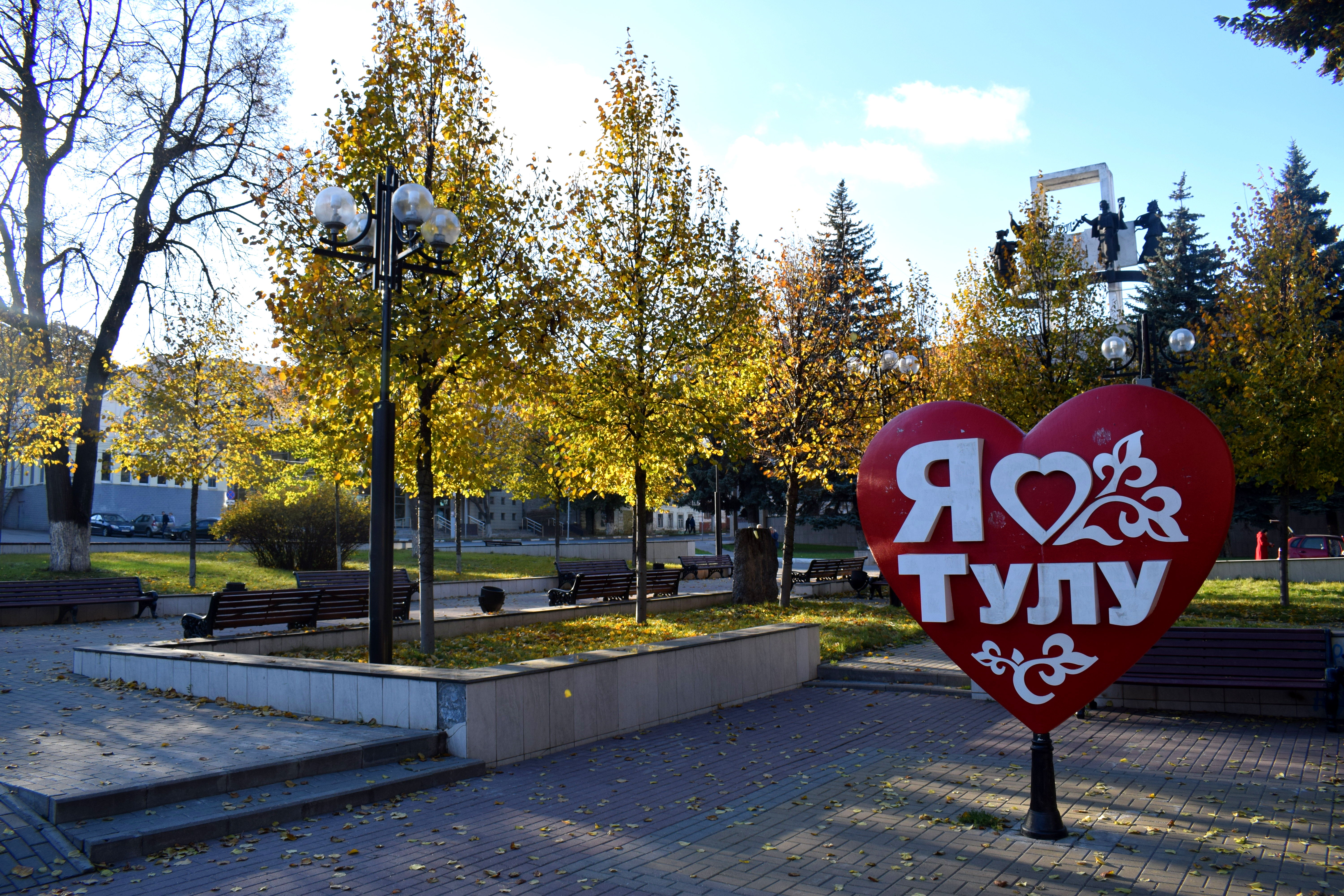 I love Tula.
I love Tula.
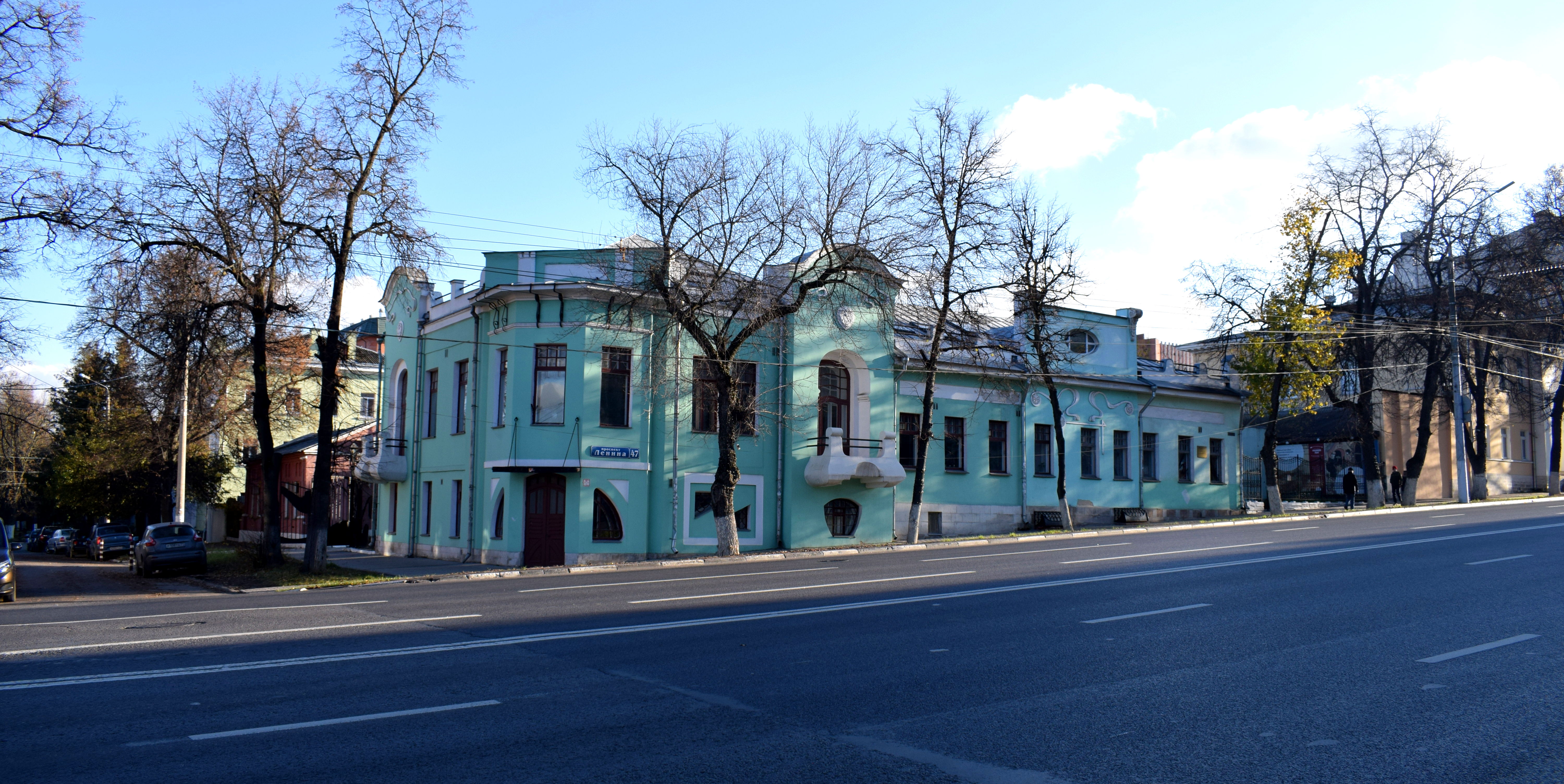 What a beauty.
What a beauty.
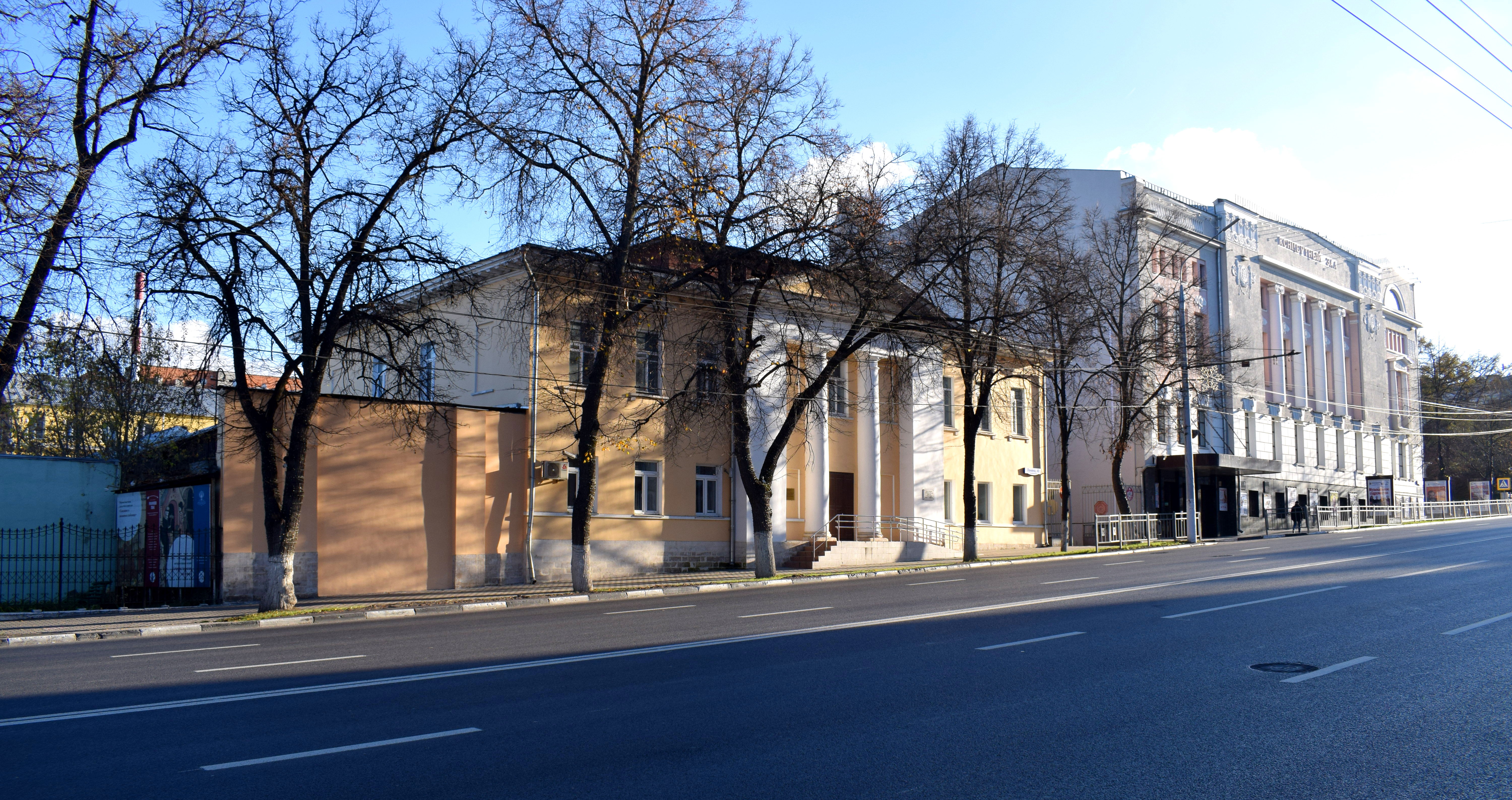 These kind of buildings are a testament to Tula’s European past.
These kind of buildings are a testament to Tula’s European past.
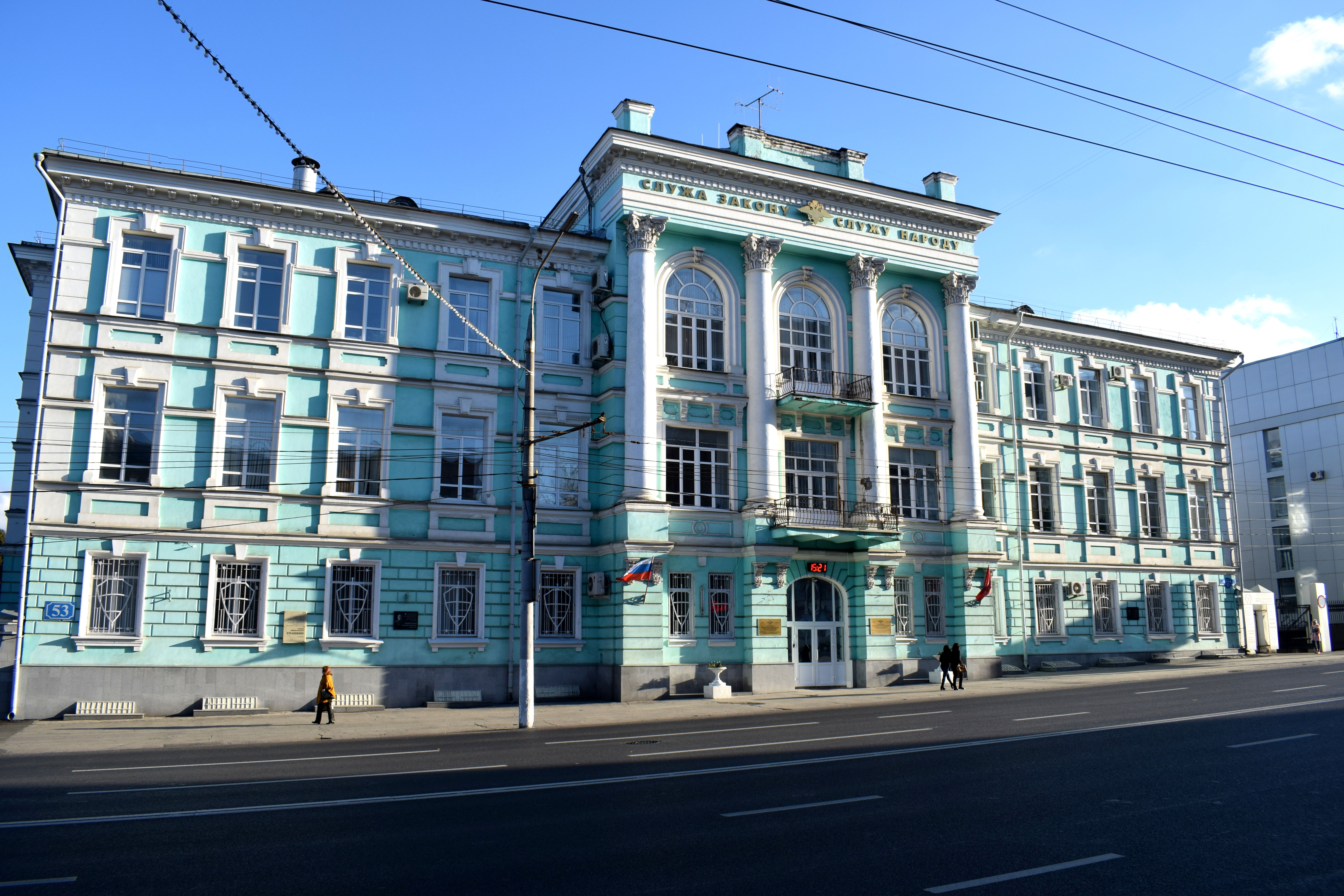 No different from any others you can find in Europe. At the top of the building it says: “I obey the law, I obey the people.”
No different from any others you can find in Europe. At the top of the building it says: “I obey the law, I obey the people.”
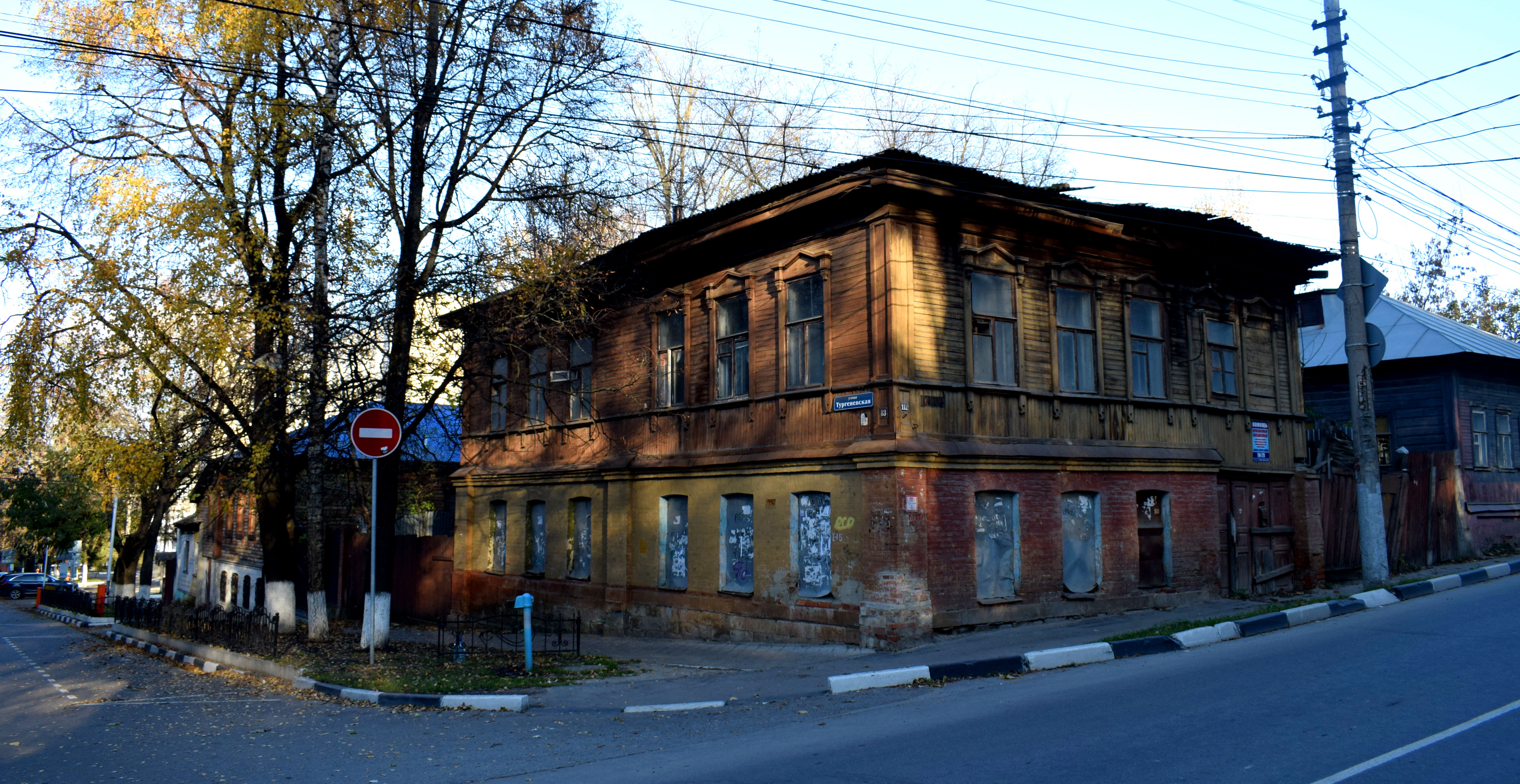 However, there is one form of architecture completely unique to Russia that you won’t find in Europe. And those are traditional Russian wooden buildings from the 19th and early 20th centuries.
However, there is one form of architecture completely unique to Russia that you won’t find in Europe. And those are traditional Russian wooden buildings from the 19th and early 20th centuries.
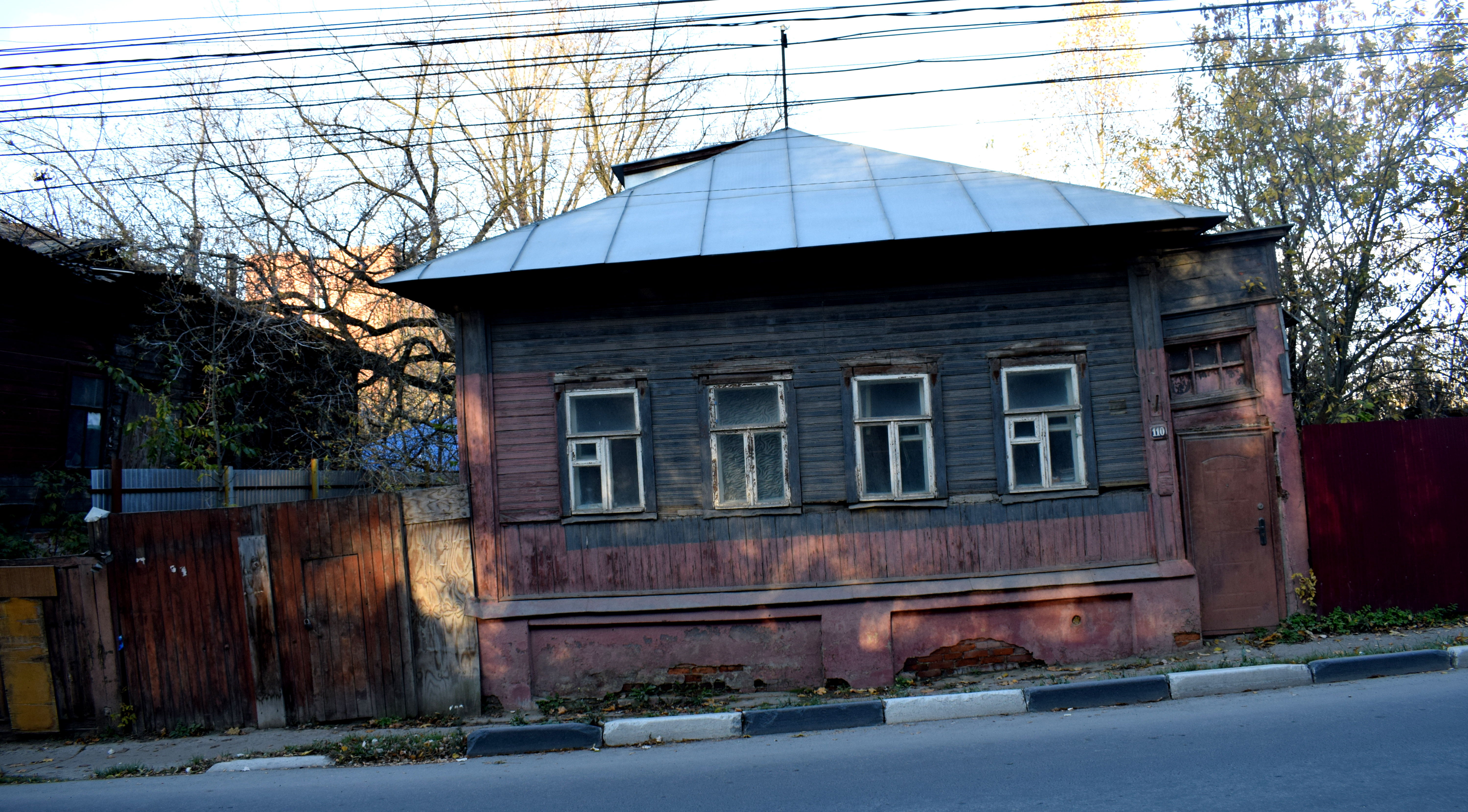 When I first came to Russia, these kind of wooden buildings completely surprised me. I had never seen anything like them in any countries I had visited before in my life. I loved them.
When I first came to Russia, these kind of wooden buildings completely surprised me. I had never seen anything like them in any countries I had visited before in my life. I loved them.
 They were completely unique to Russia. We don’t have these kind of buildings in Serbia or in the Balkans. I’ve never seen them in other countries in Eastern Europe I’ve been to, like Hungary or Slovakia.
They were completely unique to Russia. We don’t have these kind of buildings in Serbia or in the Balkans. I’ve never seen them in other countries in Eastern Europe I’ve been to, like Hungary or Slovakia.
 The majority of Russians actually lived precisely in these kinds of wooden homes before the revolution in 1917. Many people continue to live in them to this today.
The majority of Russians actually lived precisely in these kinds of wooden homes before the revolution in 1917. Many people continue to live in them to this today.
 Unfortunately this kind of architecture is disappearing at alarming rates all cross Russia. The homes fall into disrepair because young people move away from cities. Developers offer to buy the homes from poor residents. Instead of reconstructing them, they tear them down and build modern apartments.
Unfortunately this kind of architecture is disappearing at alarming rates all cross Russia. The homes fall into disrepair because young people move away from cities. Developers offer to buy the homes from poor residents. Instead of reconstructing them, they tear them down and build modern apartments.
 It doesn’t help that cities rarely afford these kind of homes historical status. More often than not, they sit abandoned in cities as eyesores until they collapse.
It doesn’t help that cities rarely afford these kind of homes historical status. More often than not, they sit abandoned in cities as eyesores until they collapse.
 Other times they are put up for sale my view, Russia should take all possible measures to
Other times they are put up for sale my view, Russia should take all possible measures to
 This one was up for sale.
This one was up for sale.
 Here was one that was in a terrible state, even though you could tell that not long ago it was a beautiful building. I took this picture in 2017, when it still could have been renovated.
Here was one that was in a terrible state, even though you could tell that not long ago it was a beautiful building. I took this picture in 2017, when it still could have been renovated.
 But I took a look at Google Maps in 2020 and it was gone. Whoever decided to buy the property figured it was too expensive to renovate the existing building. Instead they tore it down completely and a piece of Tula’s history is lost forever.
But I took a look at Google Maps in 2020 and it was gone. Whoever decided to buy the property figured it was too expensive to renovate the existing building. Instead they tore it down completely and a piece of Tula’s history is lost forever.
 If nothing is done to intervene, this is going to be the fate of every building on this street. Here’s another one in bad shape. Nothing stops someone from buying this property and tearing it down to build a new modern building in its place.
If nothing is done to intervene, this is going to be the fate of every building on this street. Here’s another one in bad shape. Nothing stops someone from buying this property and tearing it down to build a new modern building in its place.
 The beauty of these buildings is that they preserve what Tula looked like 100 years ago. You could be in Tula in 1905 and this street would have looked exactly the same.
The beauty of these buildings is that they preserve what Tula looked like 100 years ago. You could be in Tula in 1905 and this street would have looked exactly the same.
 A look down Pirogova Street.
A look down Pirogova Street.
 Given proper care, these buildings could be converted into hostels or mini hotels, cafes, bookshops, souvenir shops, coworking spaces. There’s tons of businesses that work better using traditional architecture and you don’t need a modern equivalent.
Given proper care, these buildings could be converted into hostels or mini hotels, cafes, bookshops, souvenir shops, coworking spaces. There’s tons of businesses that work better using traditional architecture and you don’t need a modern equivalent.

What I love most about these buildings is how colorful they are. They are all painted in different colors.




















Unfortunately many of them were in bad shape. Traditional wooden buildings in Russia are in danger of disappearing forever. All across the country these buildings are being torn down as people move to cities and forget about the buildings where their grandparents grew up and came from. I wrote an entire separate post about the topic here about a street in Tula that was filled with these wooden buildings.
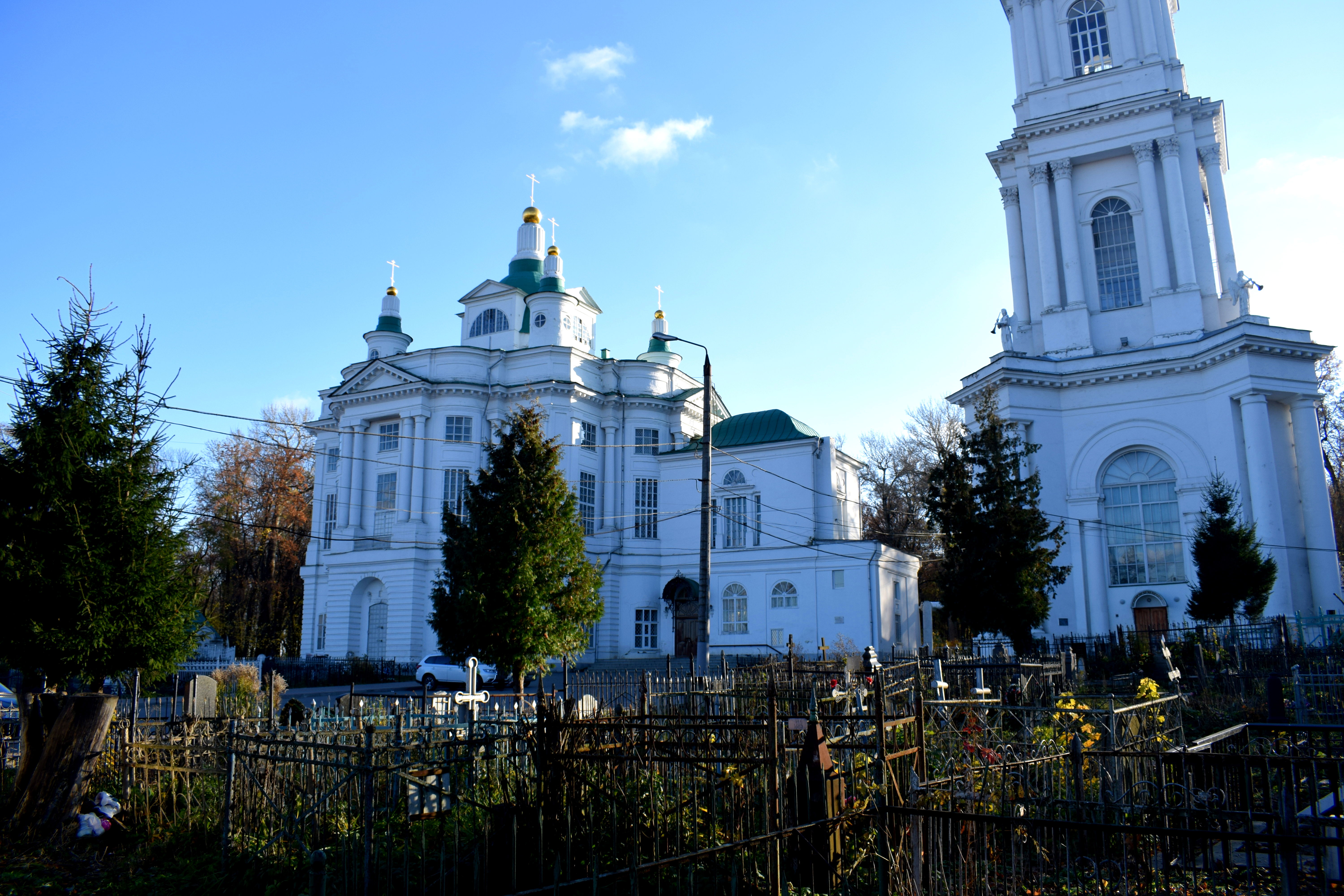 Tula is mostly a flat city, but there is a slight hill at the top of which the Всехсвятский кафедральный собор (Vsehsvyatski kafederalni sobor) is located.
Tula is mostly a flat city, but there is a slight hill at the top of which the Всехсвятский кафедральный собор (Vsehsvyatski kafederalni sobor) is located.
This is one of the oldest cemeteries in the city. Built in 1772, it contained some of the oldest graveyards and tombs in the city from over 100 years ago.
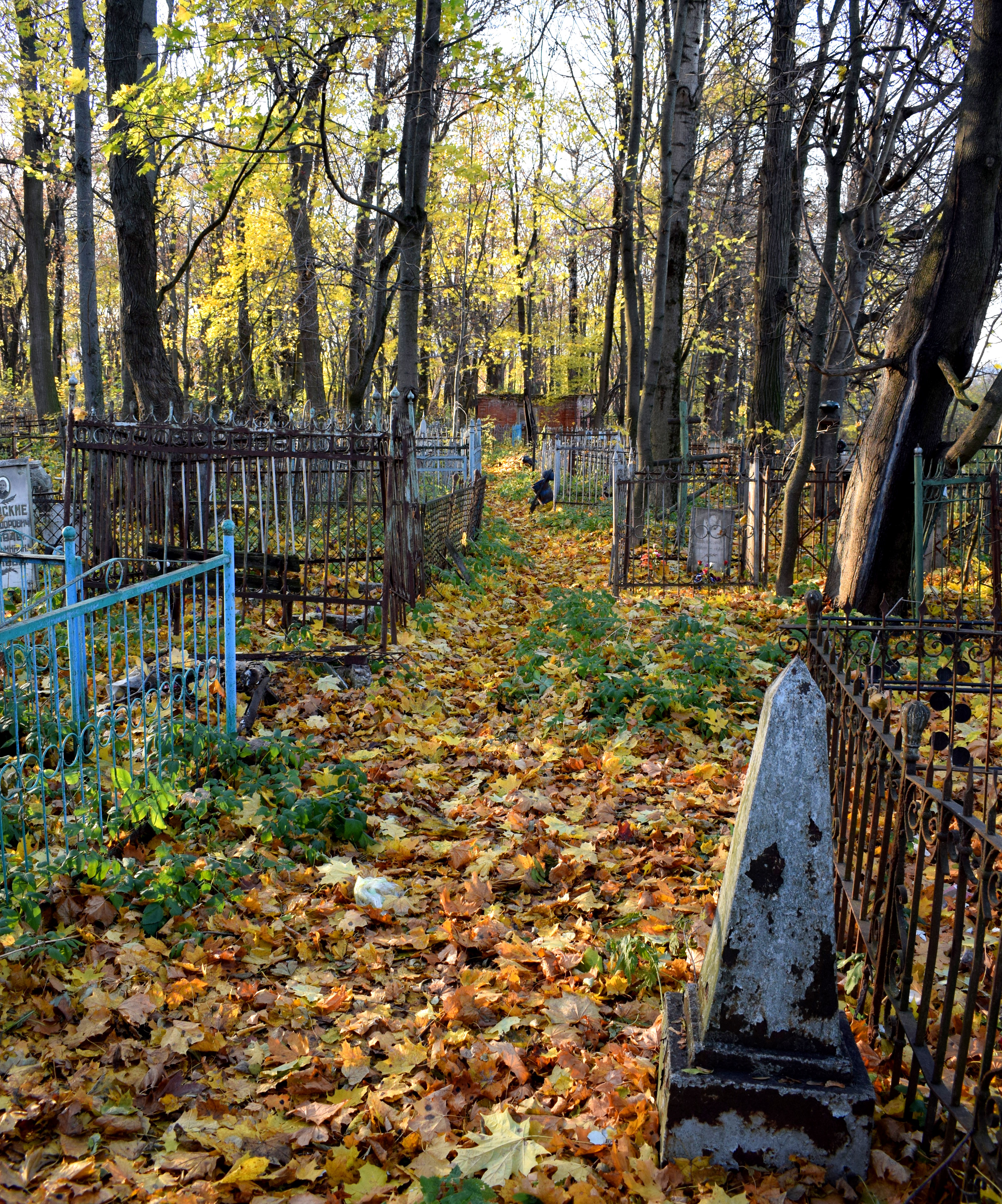 A few notes about Russian graveyards. As a rule cemeteries in Russia are located in the woods. This is something I find unique specifically to Russia, and is not the case in Serbia or the Balkans where my family is from and is definitely different from the United States.
A few notes about Russian graveyards. As a rule cemeteries in Russia are located in the woods. This is something I find unique specifically to Russia, and is not the case in Serbia or the Balkans where my family is from and is definitely different from the United States.
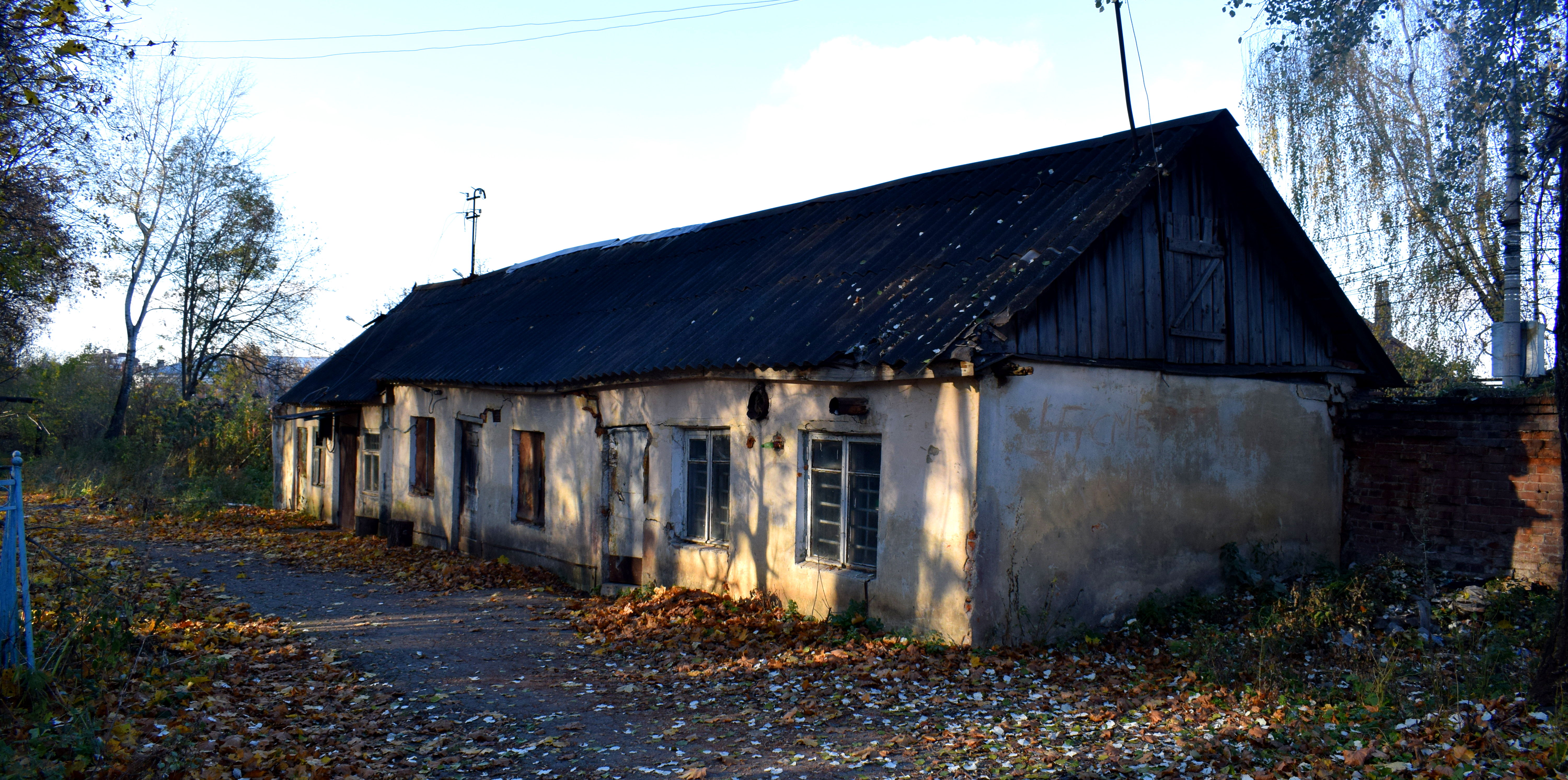 An old building in the cemetery.
An old building in the cemetery.
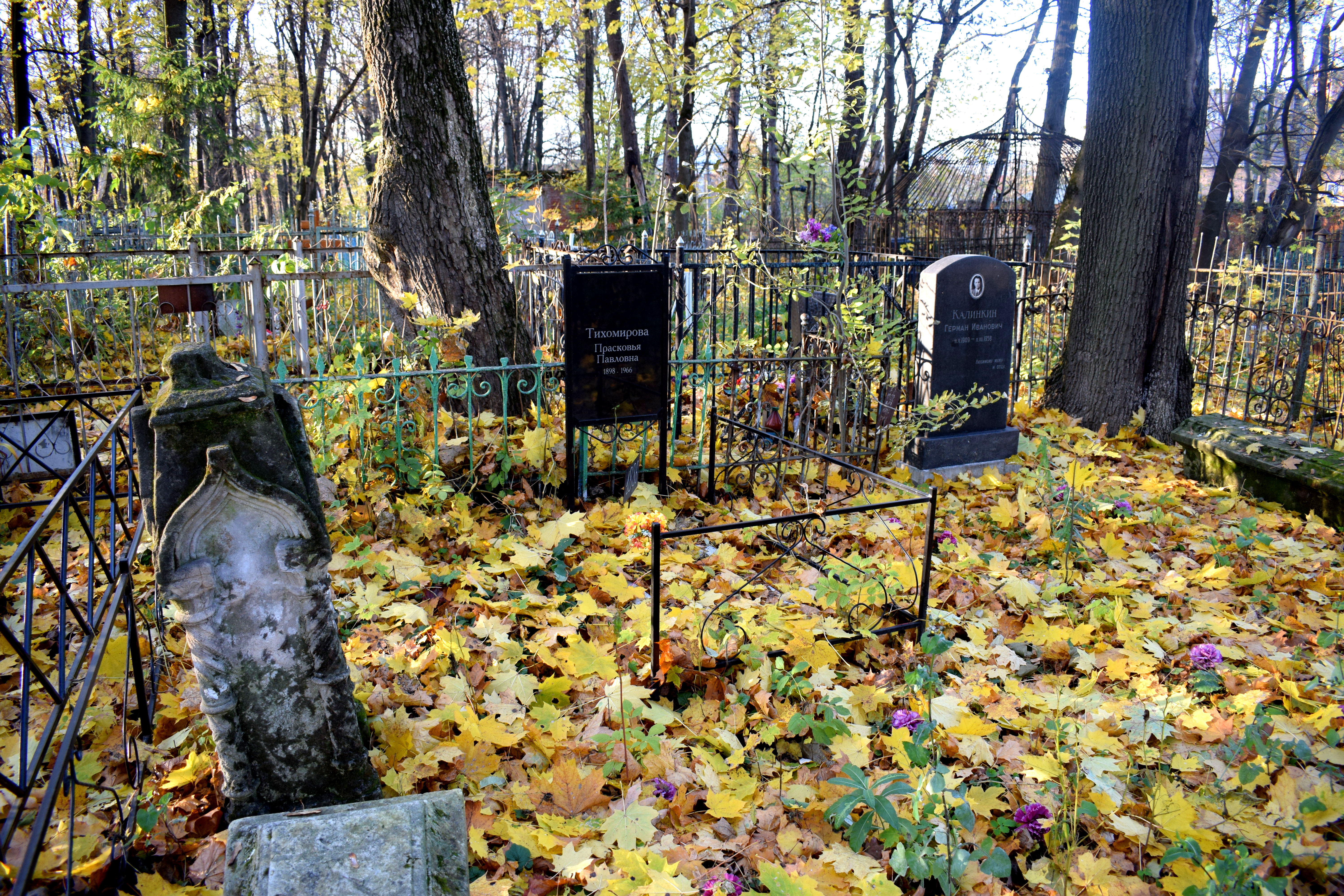 The cemetery had a distinctly creepy feeling in the October weather. It was a perfect fall day. But the cemetery felt abandoned with many of the graveyards falling apart. You can read a separate post on the topic here.
The cemetery had a distinctly creepy feeling in the October weather. It was a perfect fall day. But the cemetery felt abandoned with many of the graveyards falling apart. You can read a separate post on the topic here.









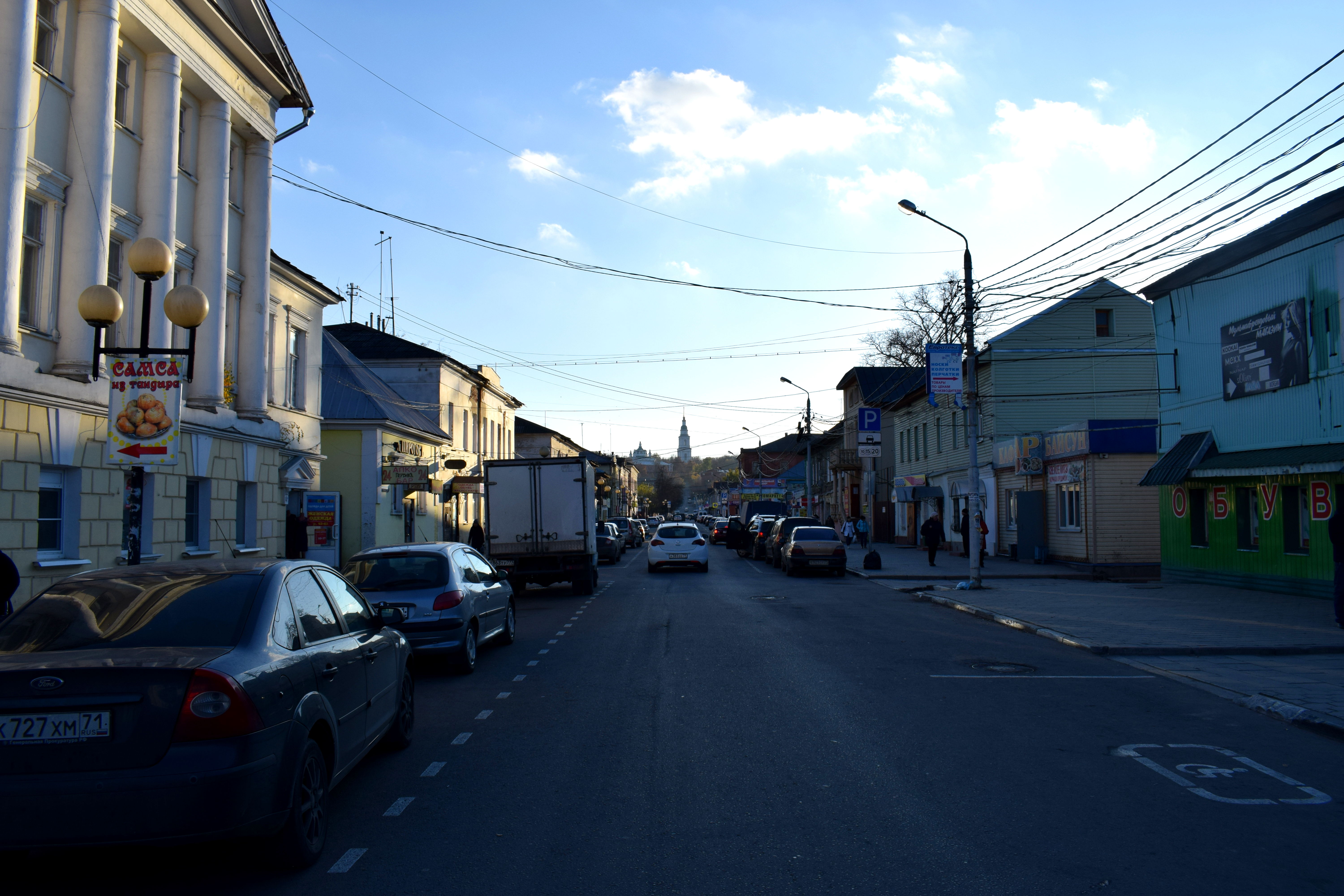 The church and the graveyard at the top of the hill in the distance. This was probably my favorite street in Tula.
The church and the graveyard at the top of the hill in the distance. This was probably my favorite street in Tula.



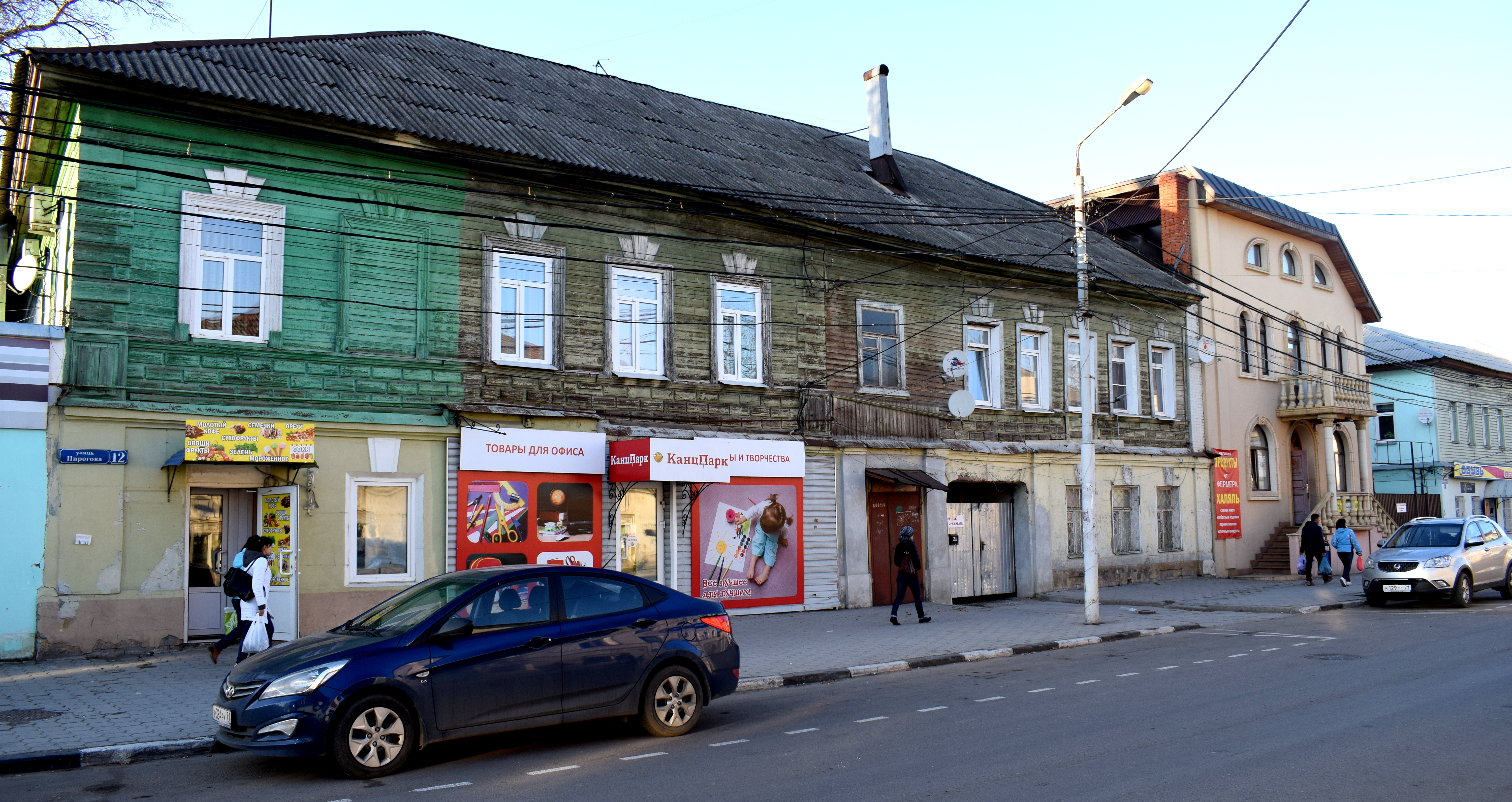


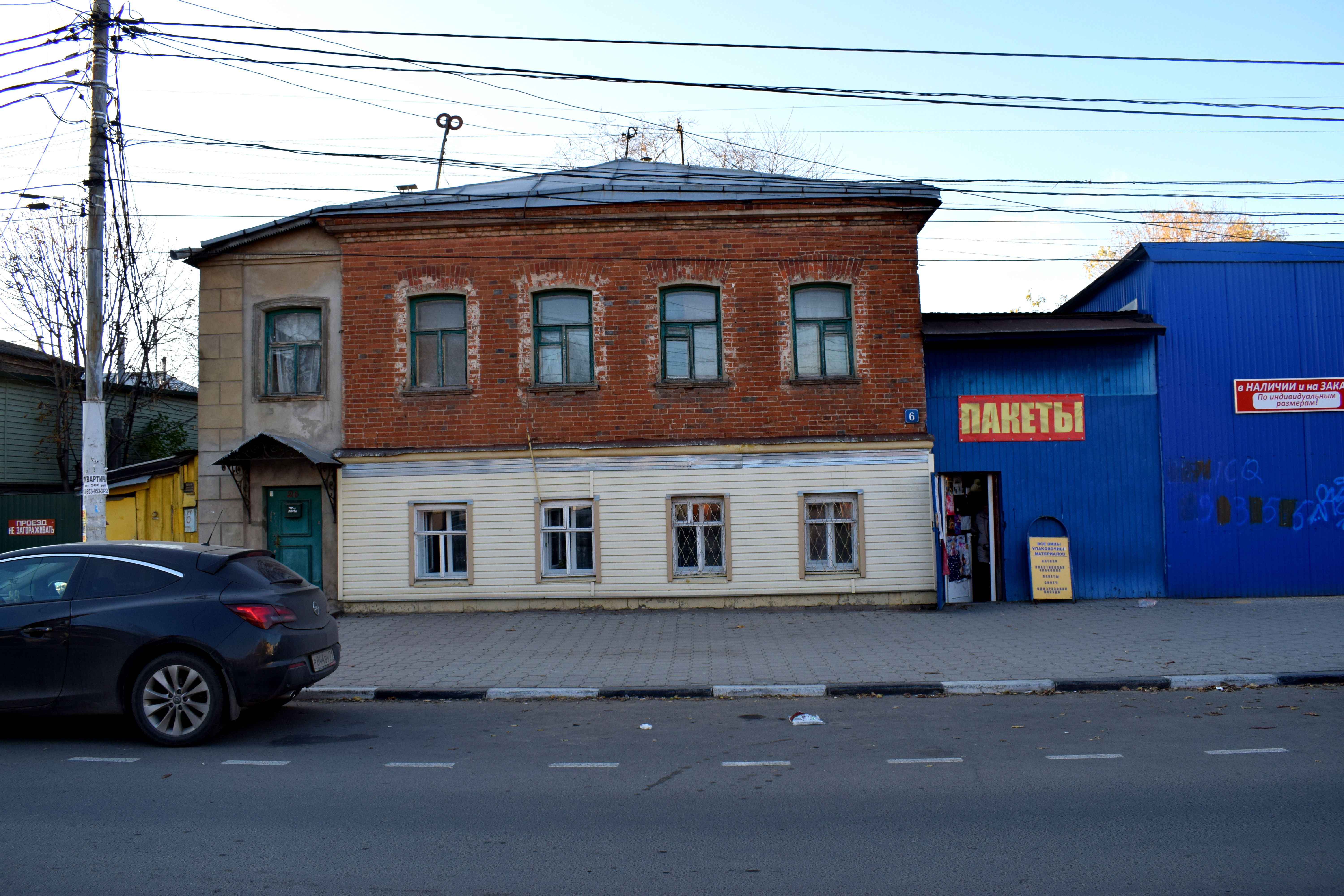 Another old building.
Another old building.
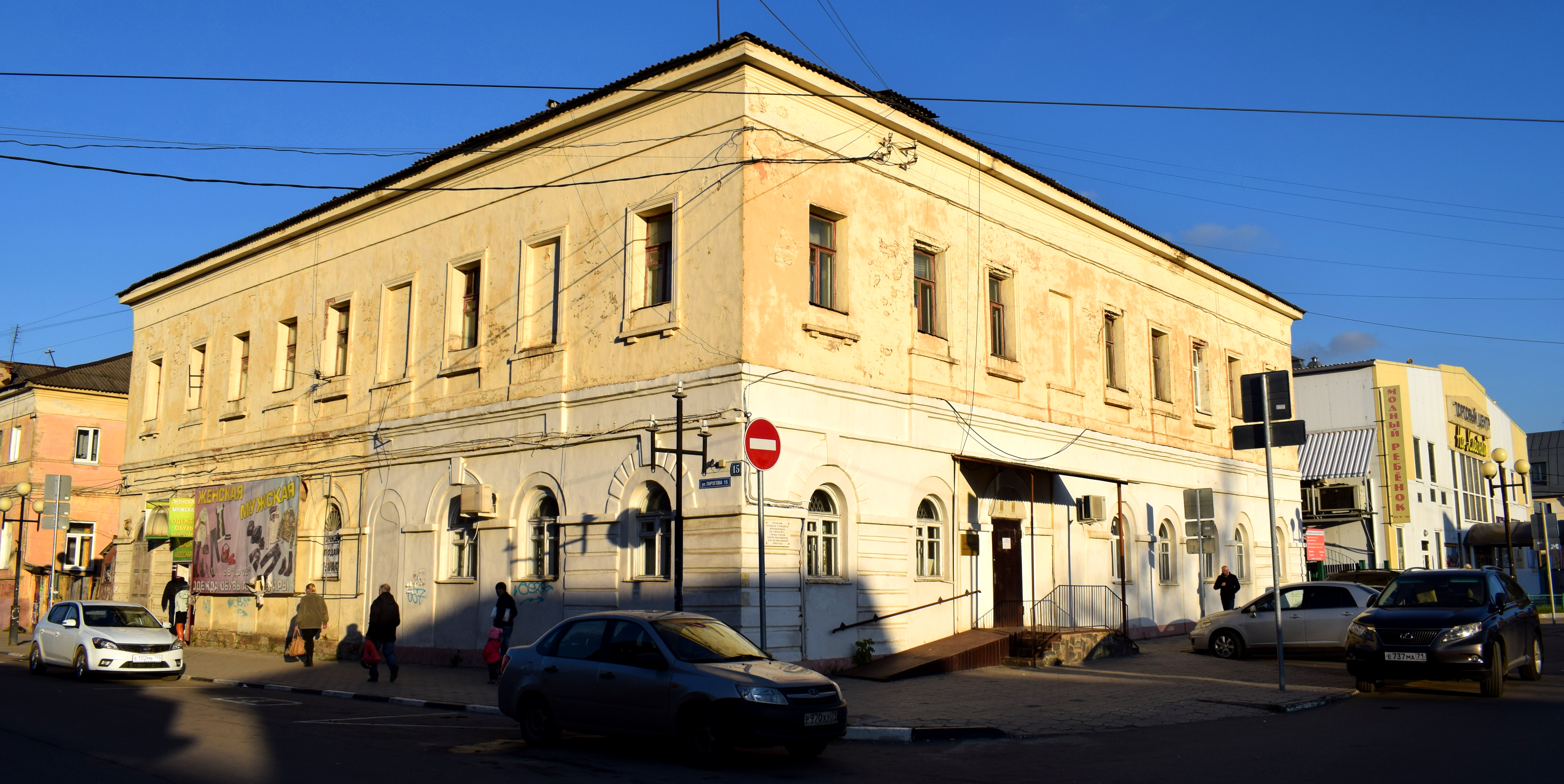



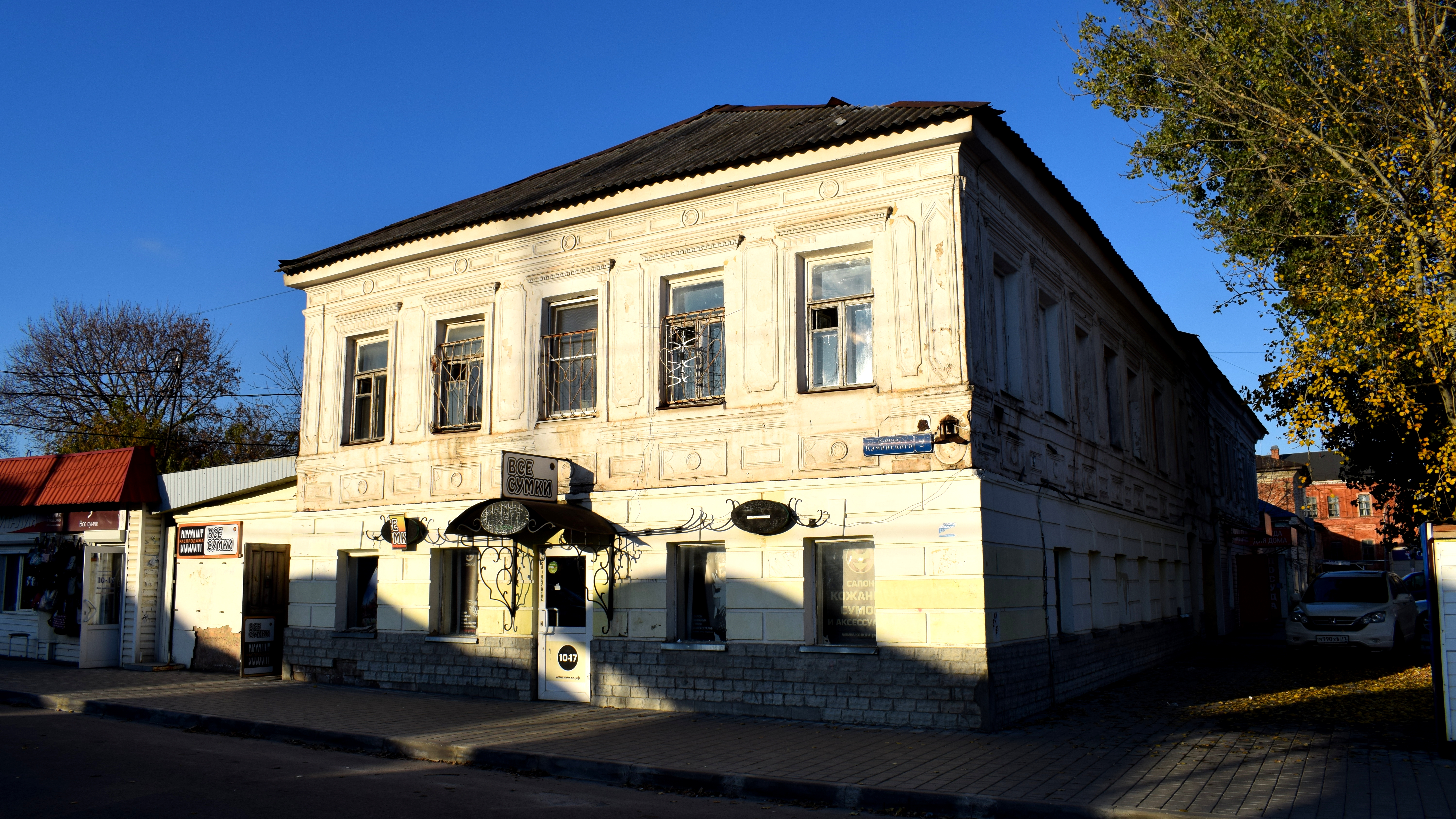
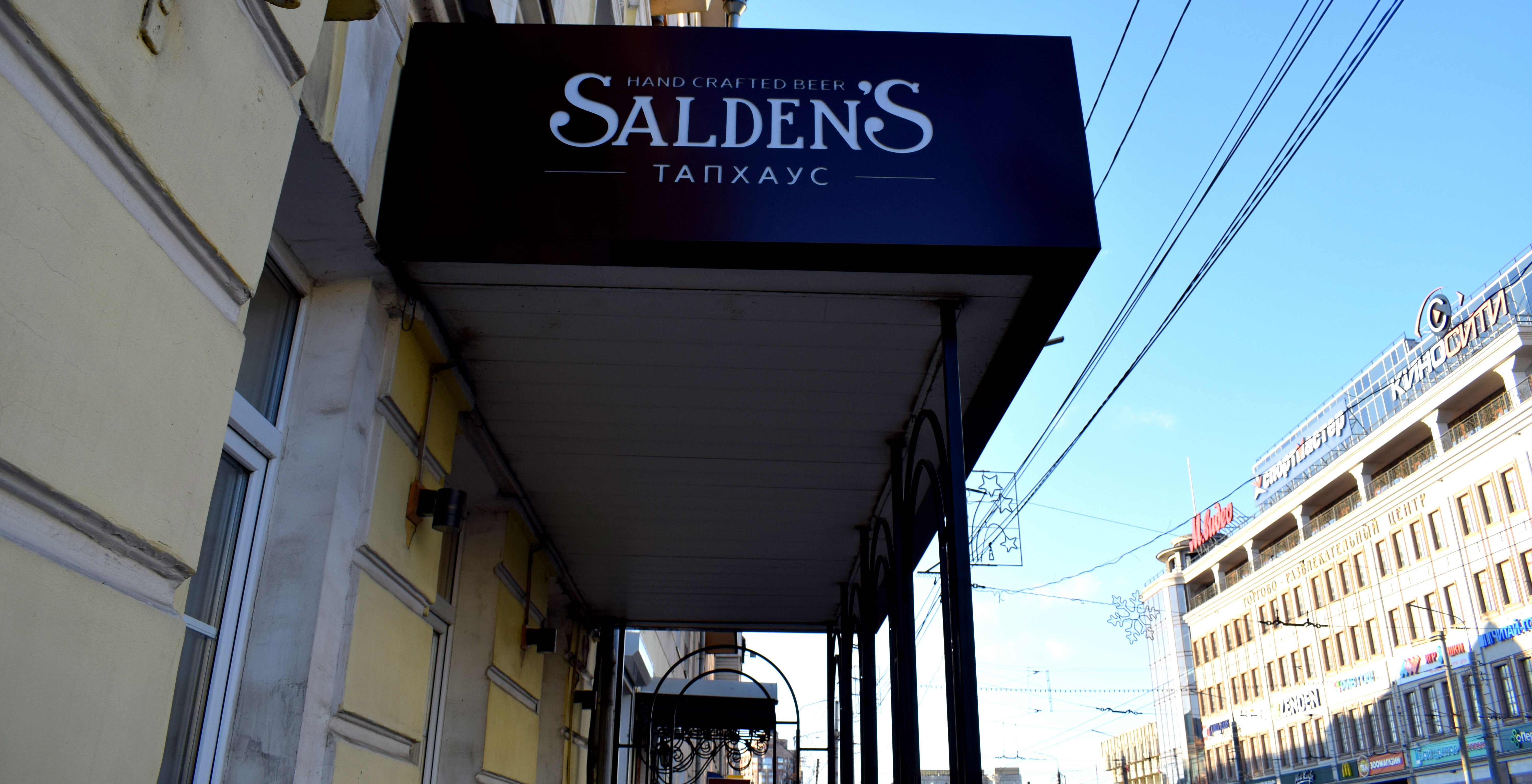 One reason we chose to visit Tula was because the city hosts the brewery to a relatively famous Russian beer called Salden’s. Although we didn’t have time to visit the brewery, we decide to try some in the city in a small store selling it.
One reason we chose to visit Tula was because the city hosts the brewery to a relatively famous Russian beer called Salden’s. Although we didn’t have time to visit the brewery, we decide to try some in the city in a small store selling it.
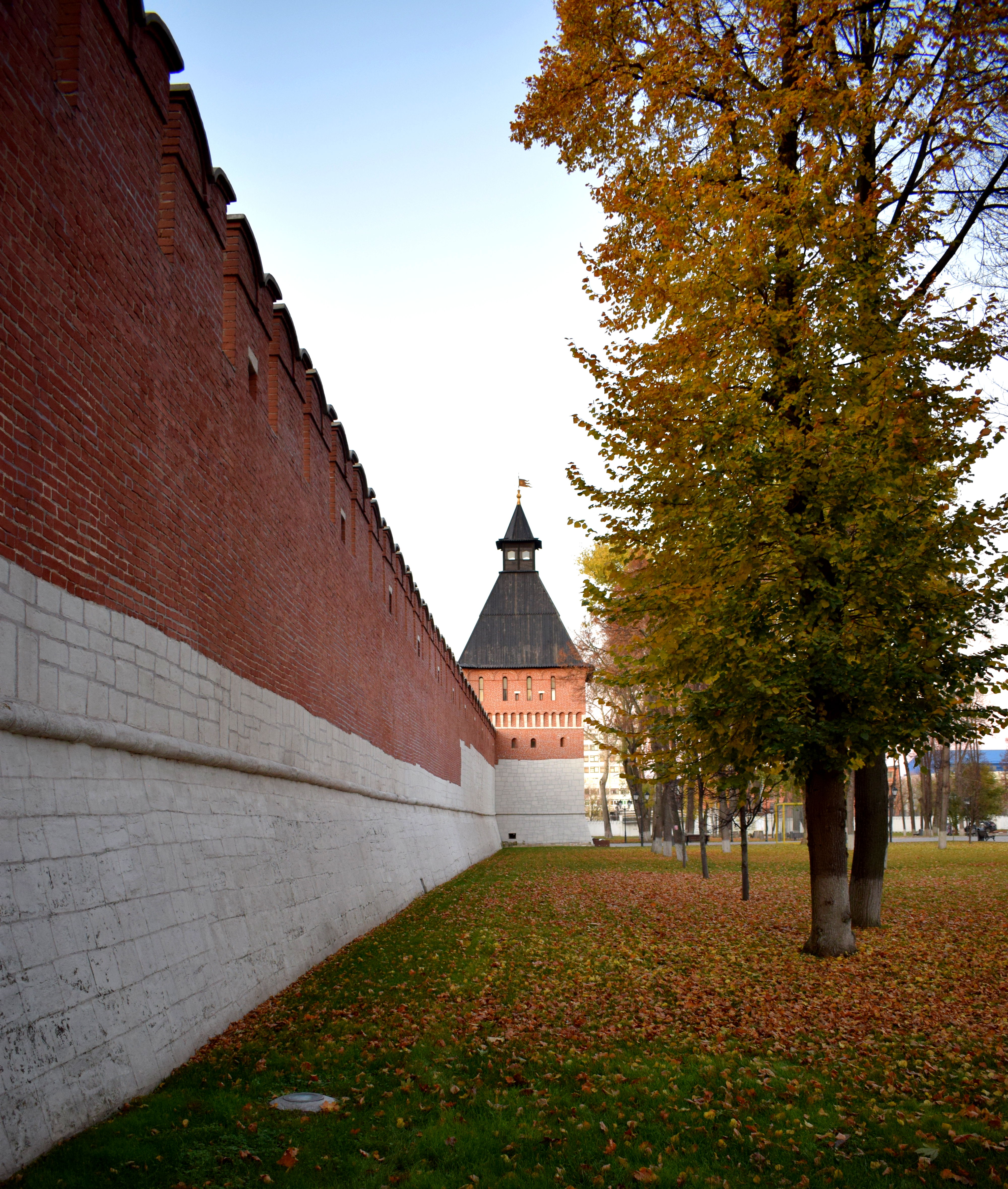 Back near the Kremlin. The fall weather was just perfect. It was a crisp, cold October day, with Halloween just around the corner, and the Kremlin looked amazing with the leaves turning brown and falling to the ground.
Back near the Kremlin. The fall weather was just perfect. It was a crisp, cold October day, with Halloween just around the corner, and the Kremlin looked amazing with the leaves turning brown and falling to the ground.
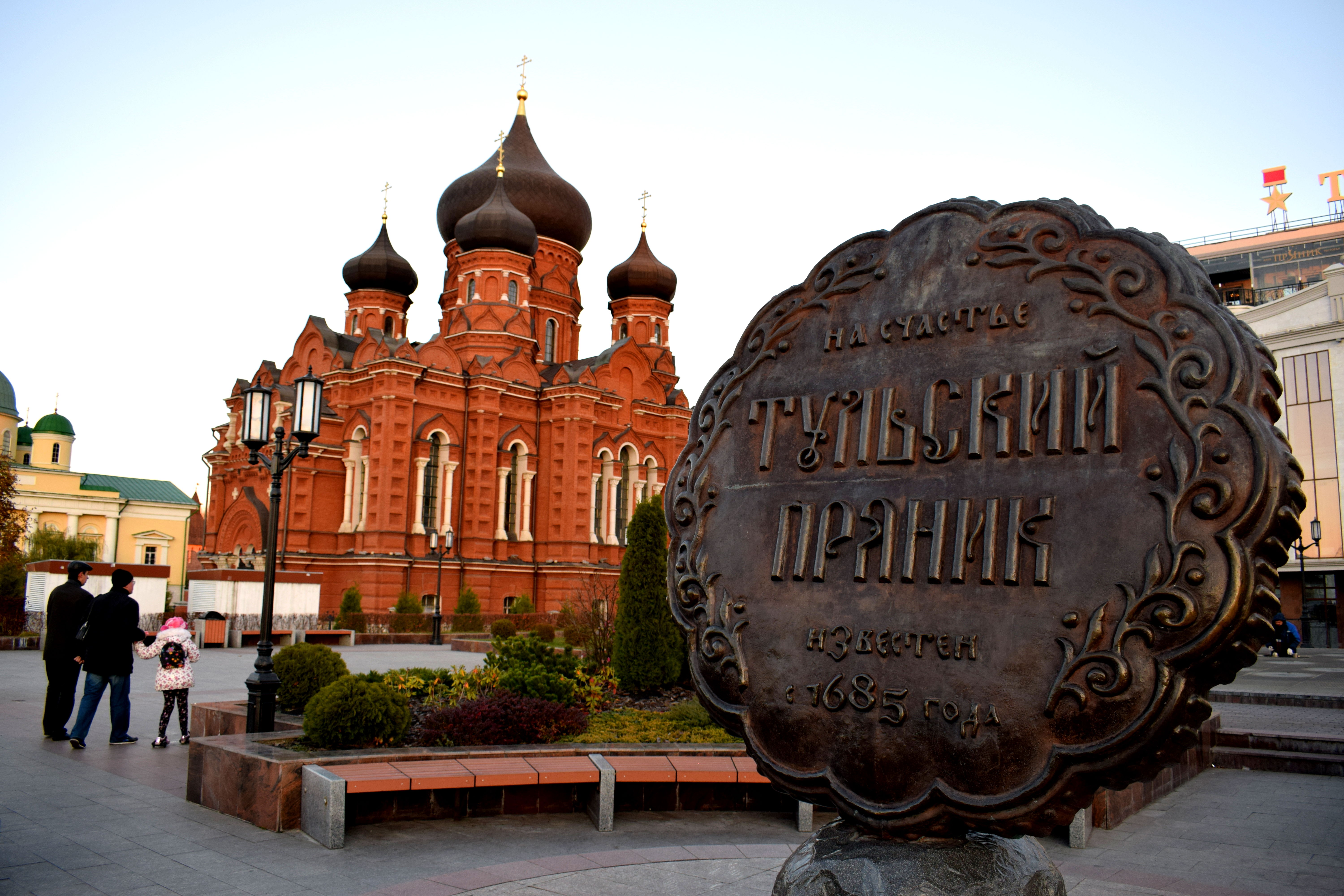 A statue dedicated to the Tulski Pryanik, or Tula Gingerbread, a desert that has existed since 1685. The Uspensky Sobor is in the distance.
A statue dedicated to the Tulski Pryanik, or Tula Gingerbread, a desert that has existed since 1685. The Uspensky Sobor is in the distance.
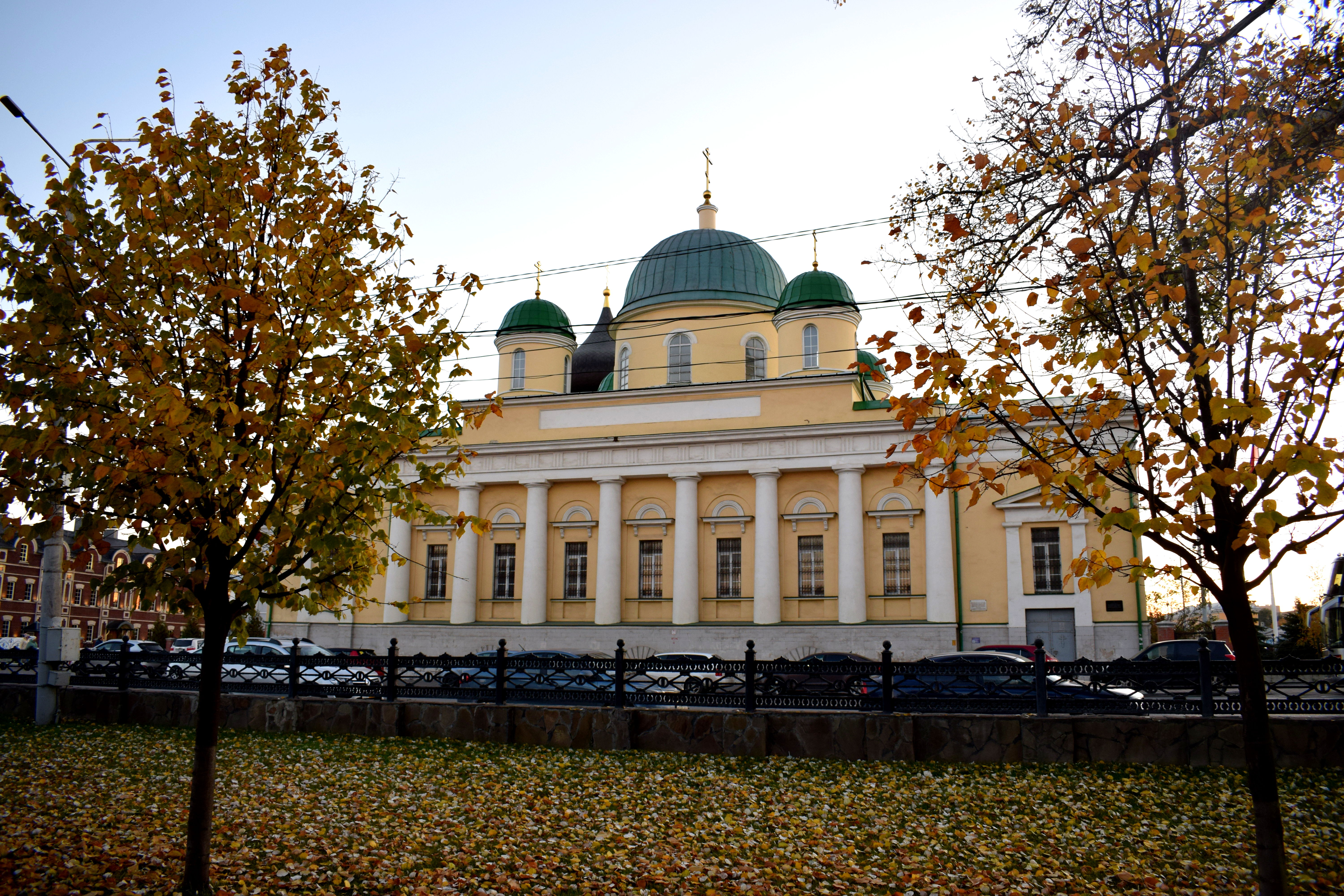 Fall in Russia is my favorite season. Unfortunately it is really short. It lasts for just one month, typically from the second half of September to the first half of October. After that the weather gets significantly colder.
Fall in Russia is my favorite season. Unfortunately it is really short. It lasts for just one month, typically from the second half of September to the first half of October. After that the weather gets significantly colder.
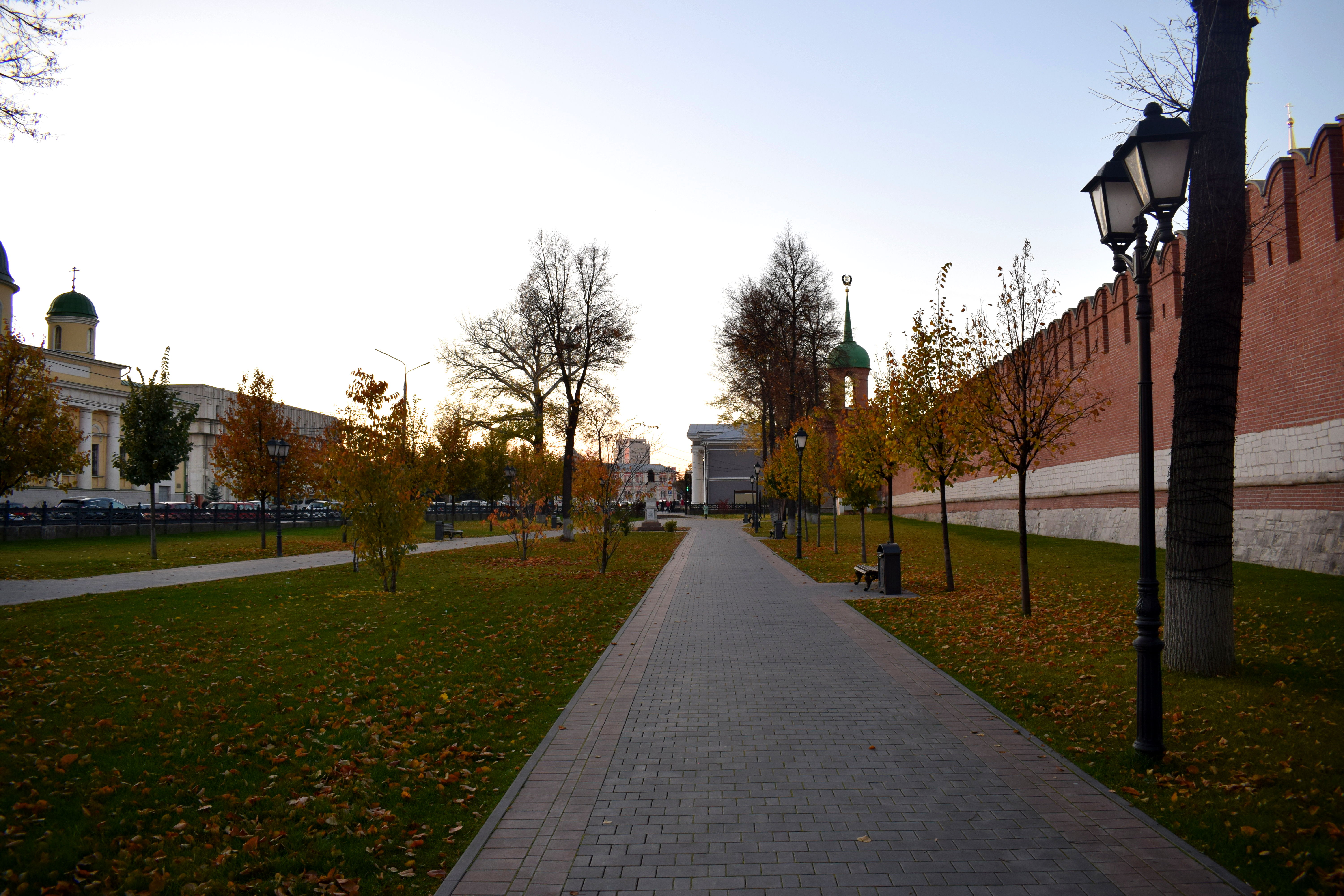 In these photos you can see the Russian autumn in all its beauty.
In these photos you can see the Russian autumn in all its beauty.
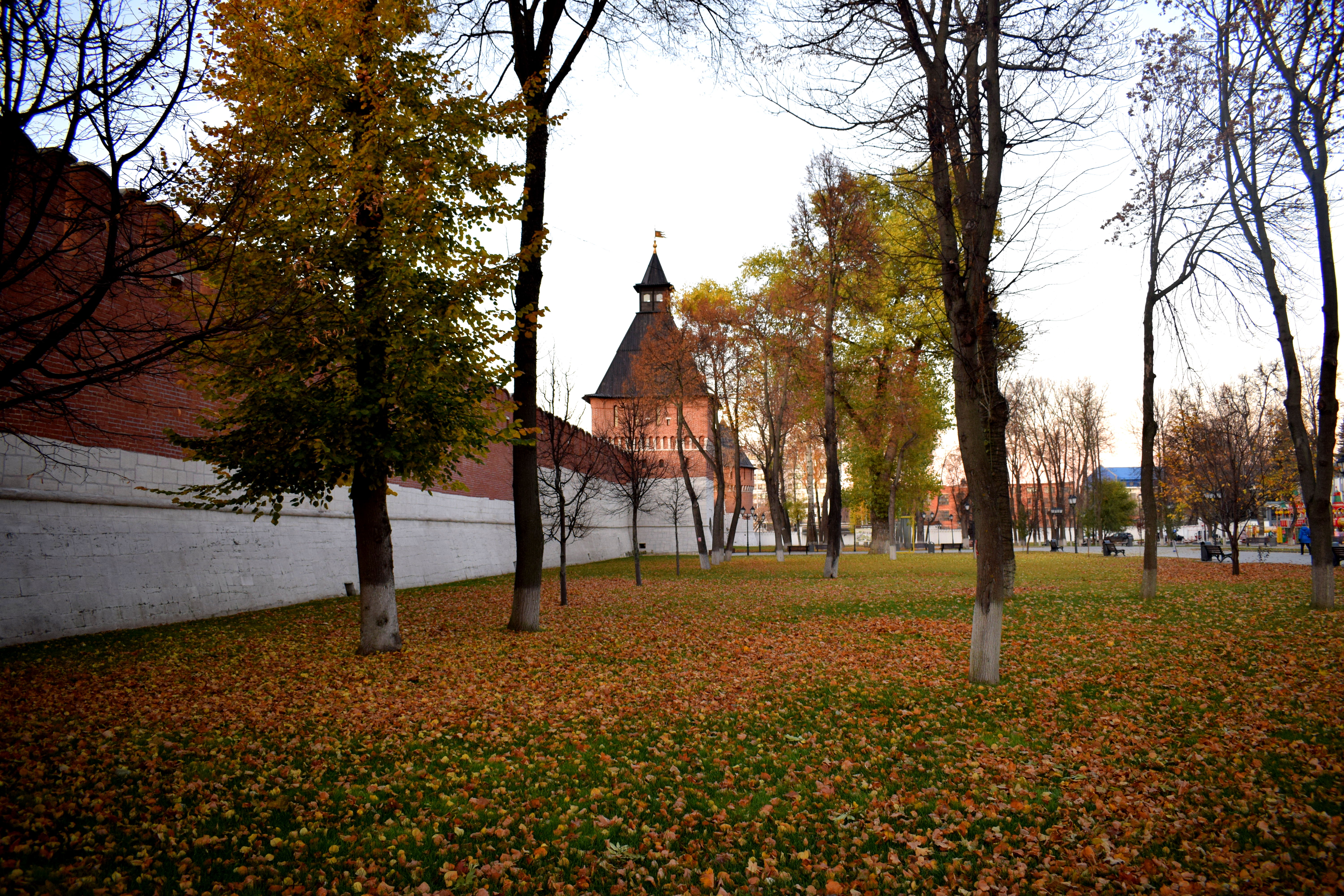 Incredible.
Incredible.
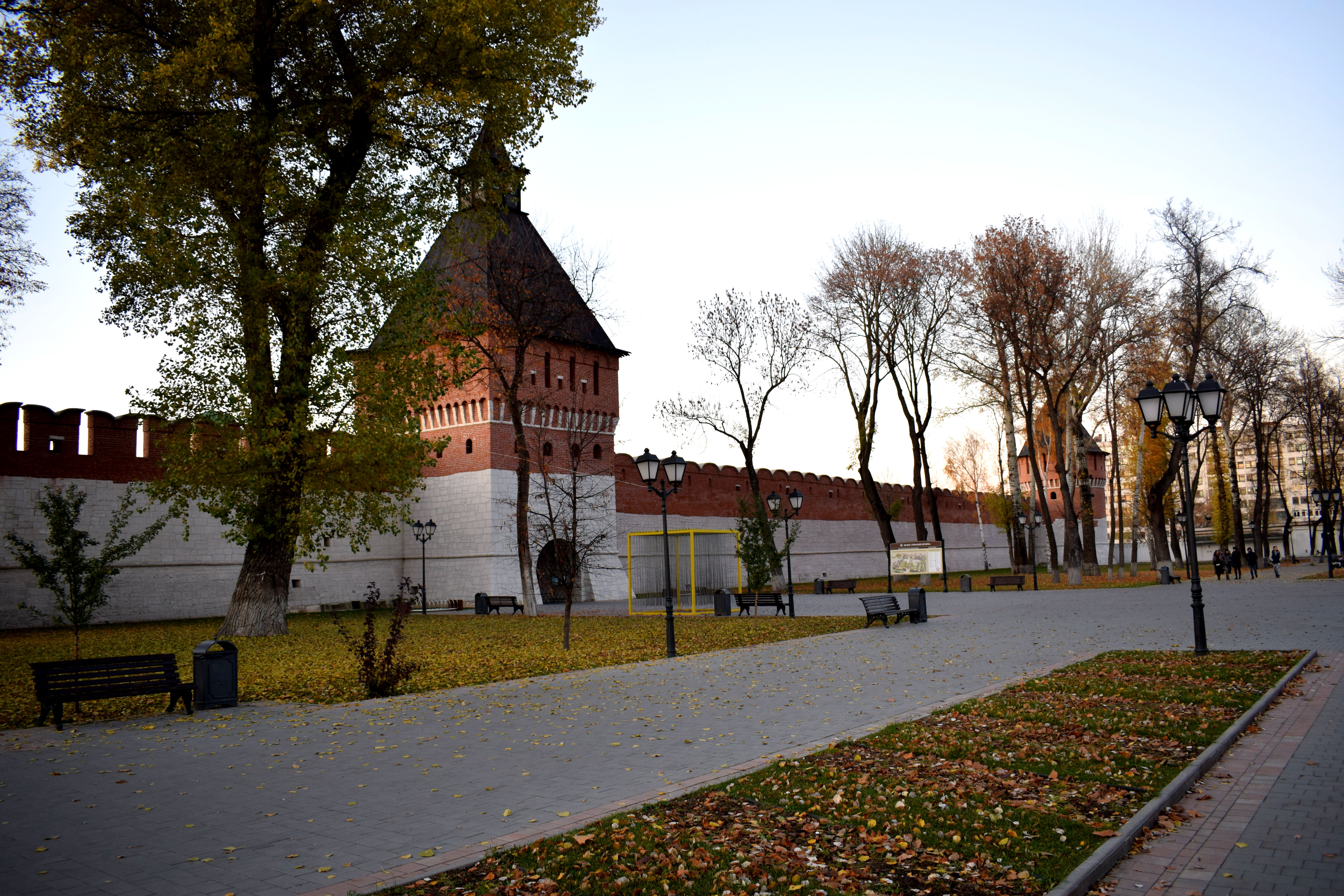 Tula’s Kremlin is one of my favorites in Russia. One reason is that it is actually open to the public, unlike the Moscow Kremlin. Moscow should learn from Tula and open up theirs to the public as well instead of charging people 700 rubles to go inside. Before the Bolshevik revolution in 1917, the Moscow Kremlin was open to the public and anyone could visit it.
Tula’s Kremlin is one of my favorites in Russia. One reason is that it is actually open to the public, unlike the Moscow Kremlin. Moscow should learn from Tula and open up theirs to the public as well instead of charging people 700 rubles to go inside. Before the Bolshevik revolution in 1917, the Moscow Kremlin was open to the public and anyone could visit it.
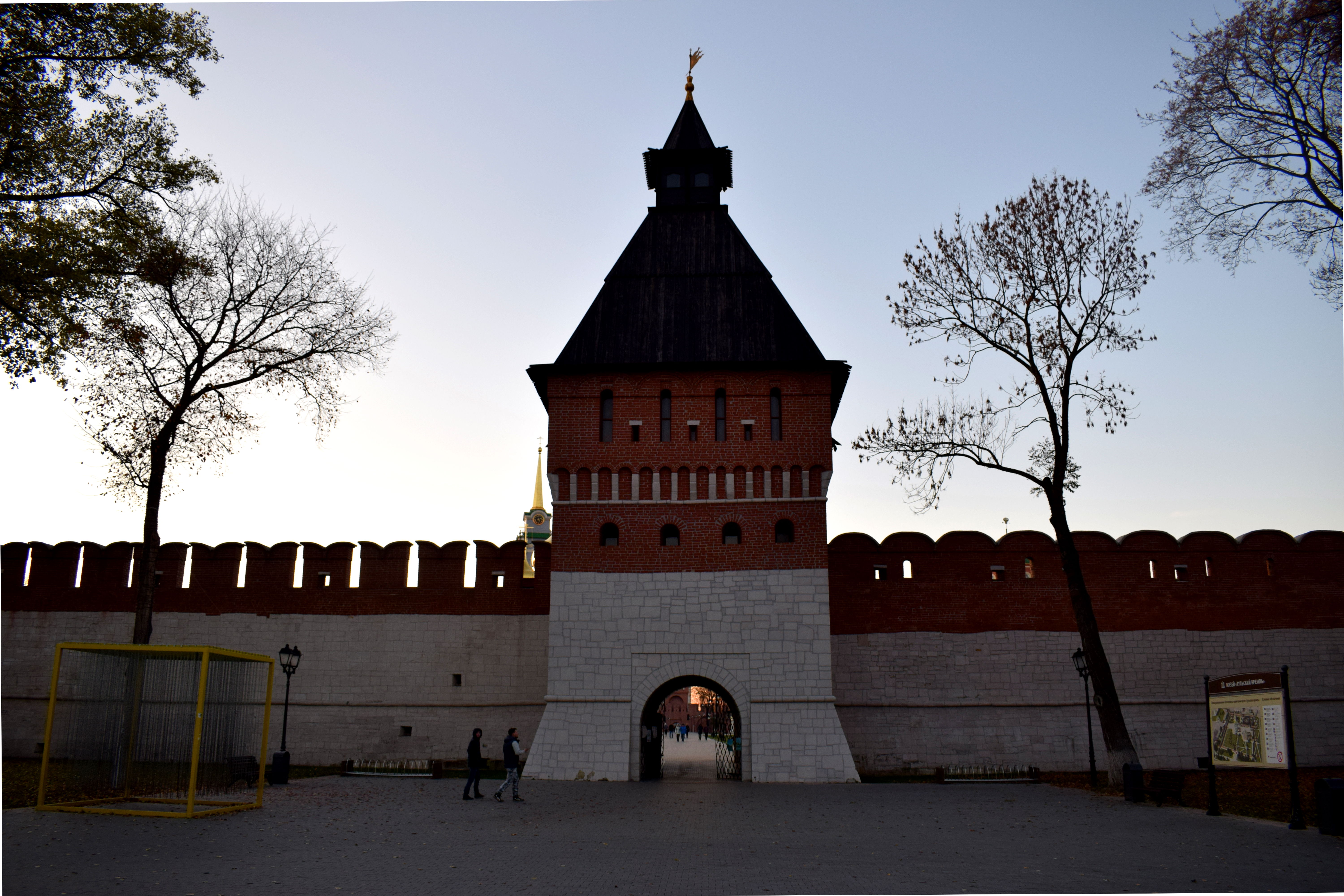 The back entrance to the Kremlin.
The back entrance to the Kremlin.
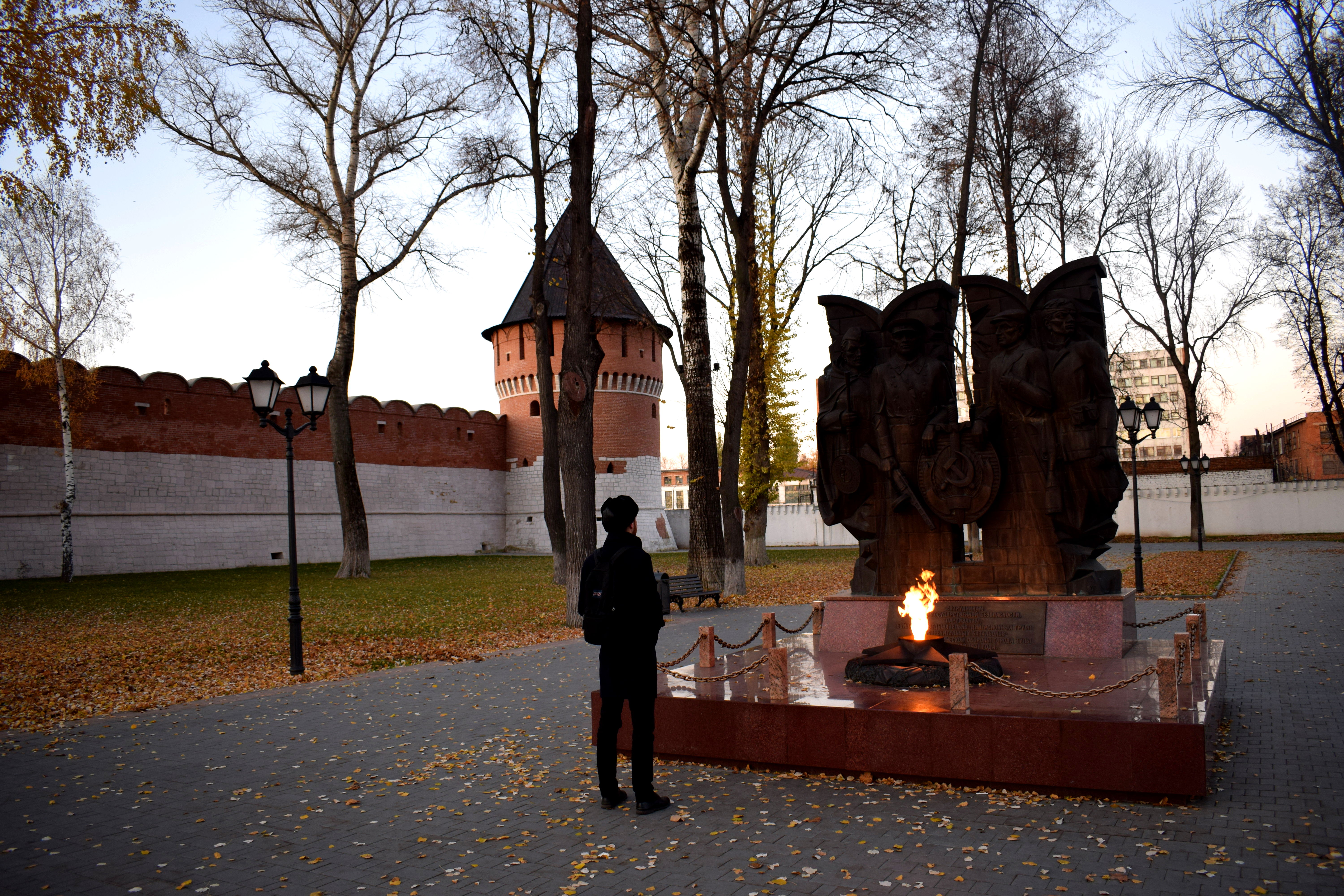 A monument to the fallen soldiers in WWII.
A monument to the fallen soldiers in WWII.
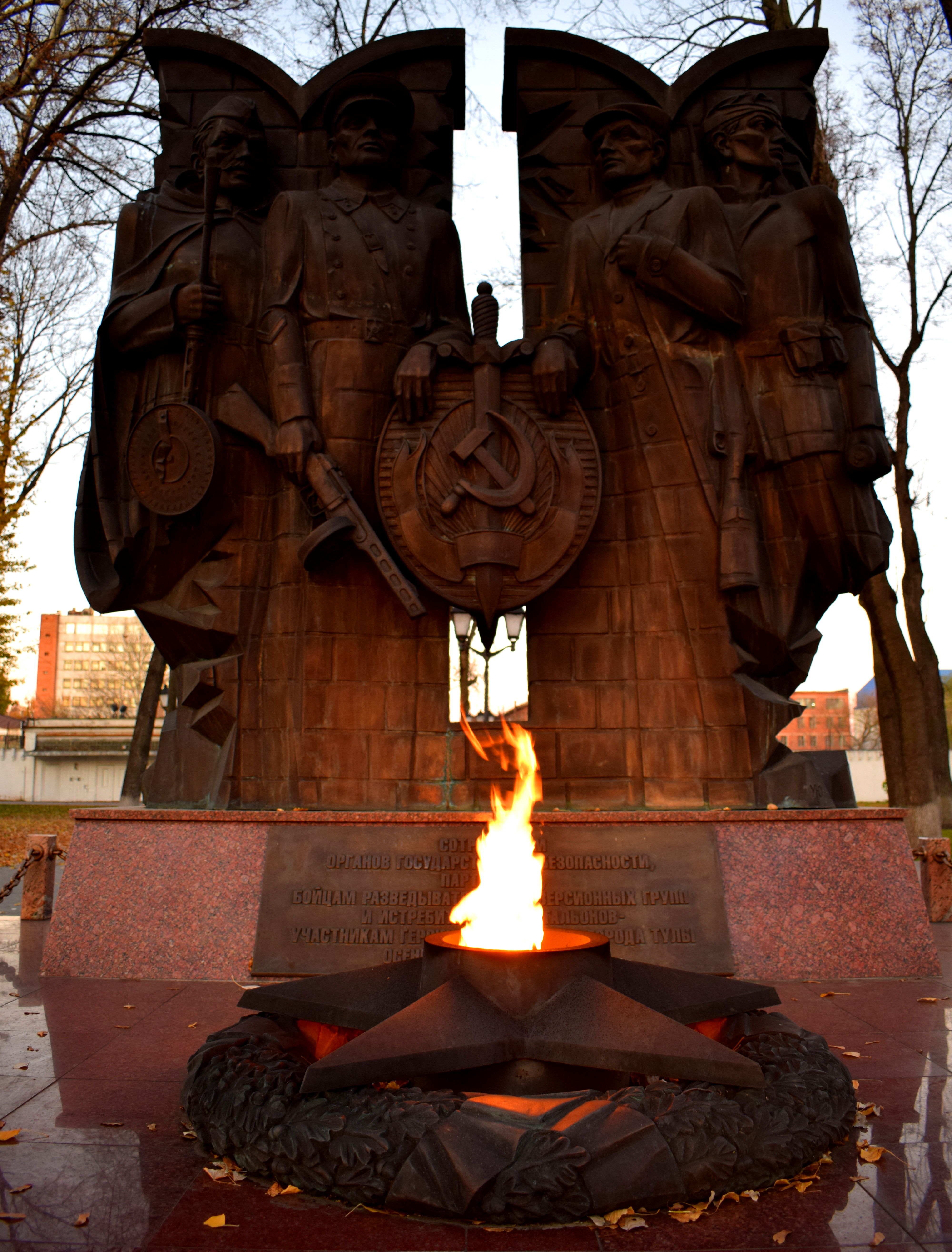 There was an eternal flame at this monument, just like most Soviet monuments dedicated to WWII.
There was an eternal flame at this monument, just like most Soviet monuments dedicated to WWII.
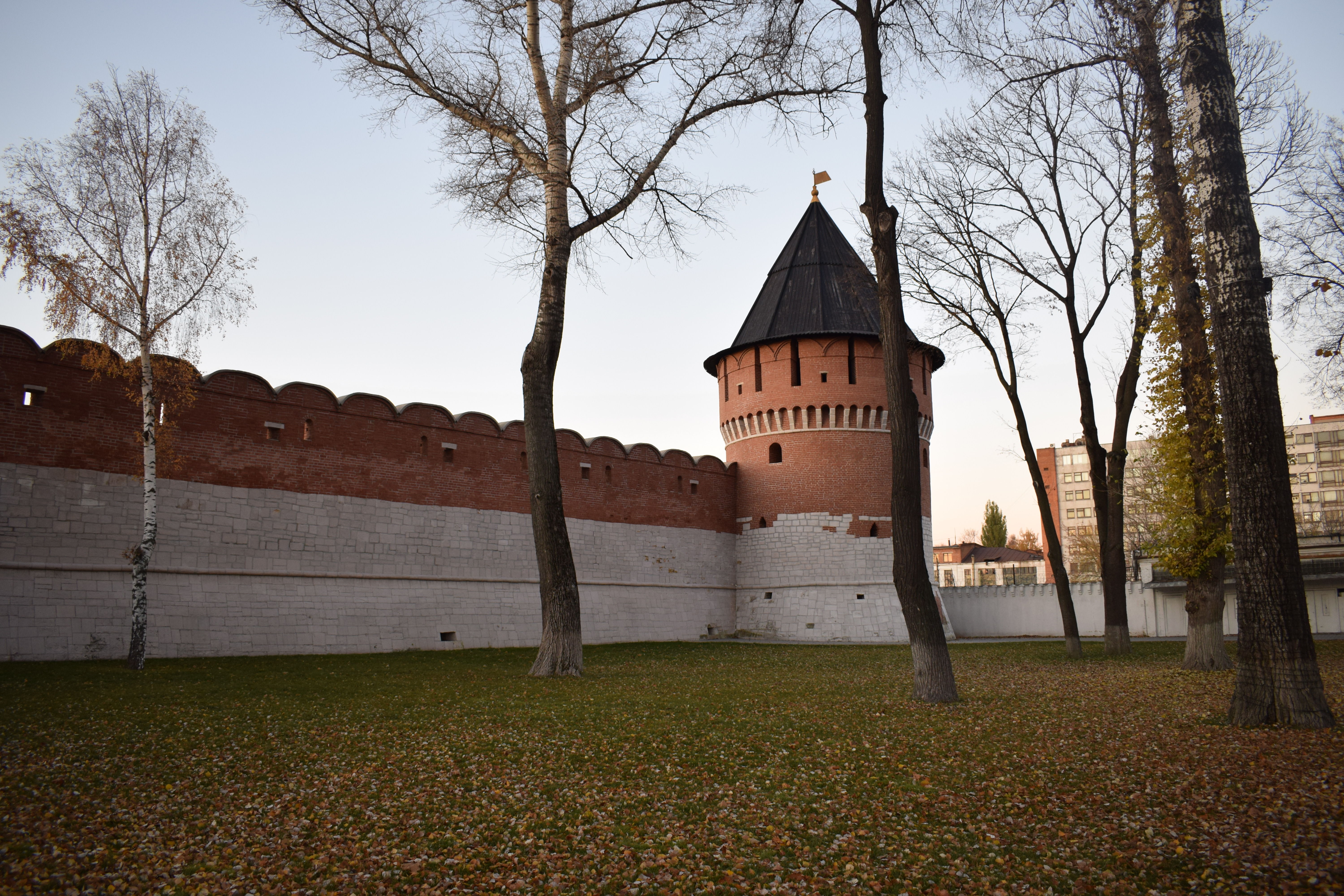 Fall in Tula is so picturesque with the Kremlin in the background.
Fall in Tula is so picturesque with the Kremlin in the background.
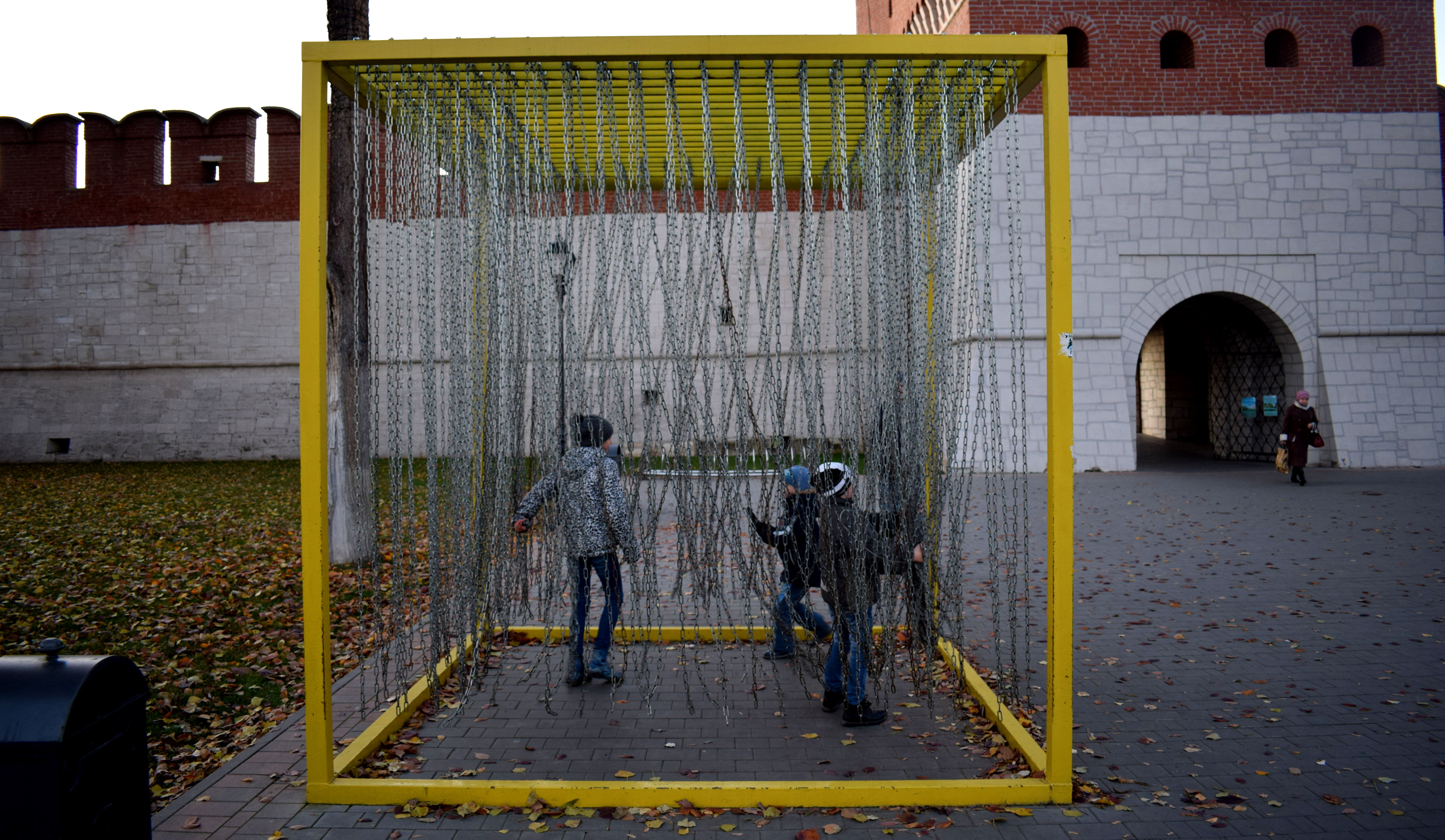 Kids playing.
Kids playing.
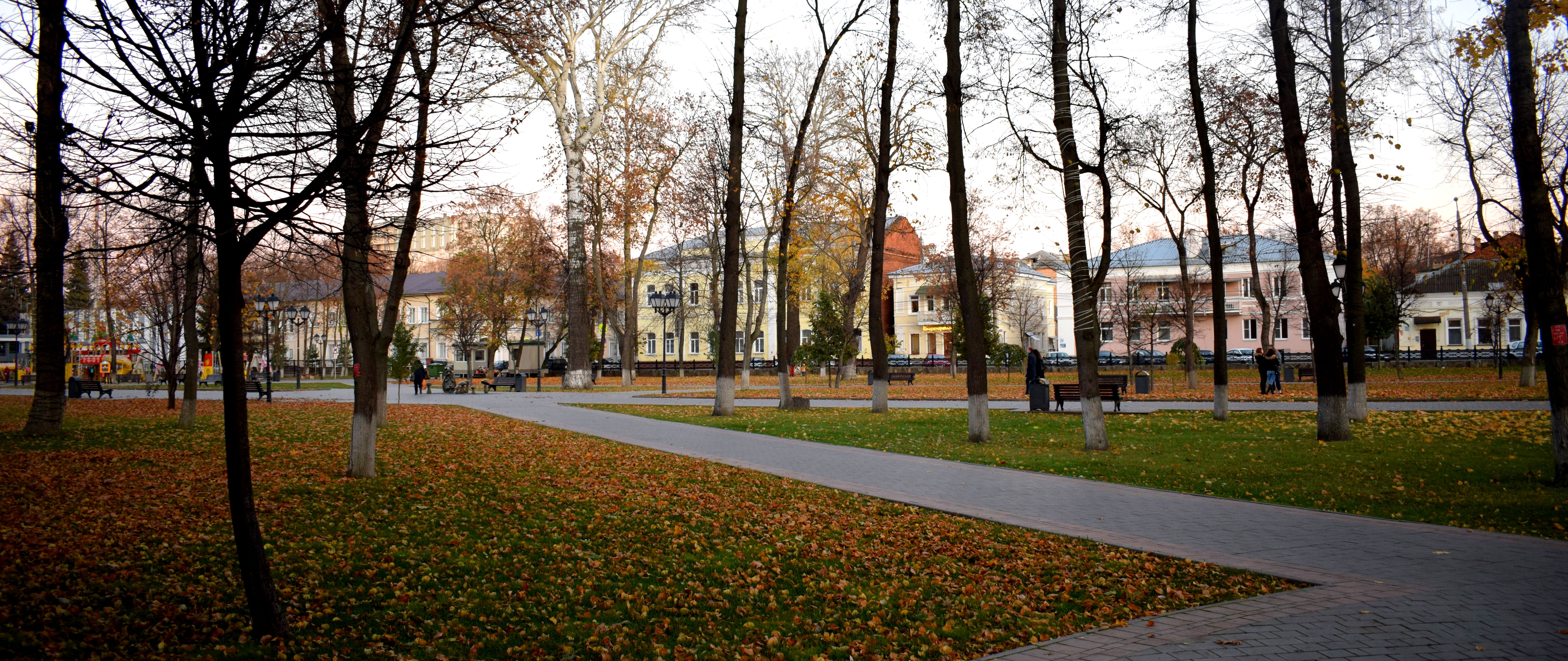 Looking back out at the city.
Looking back out at the city.
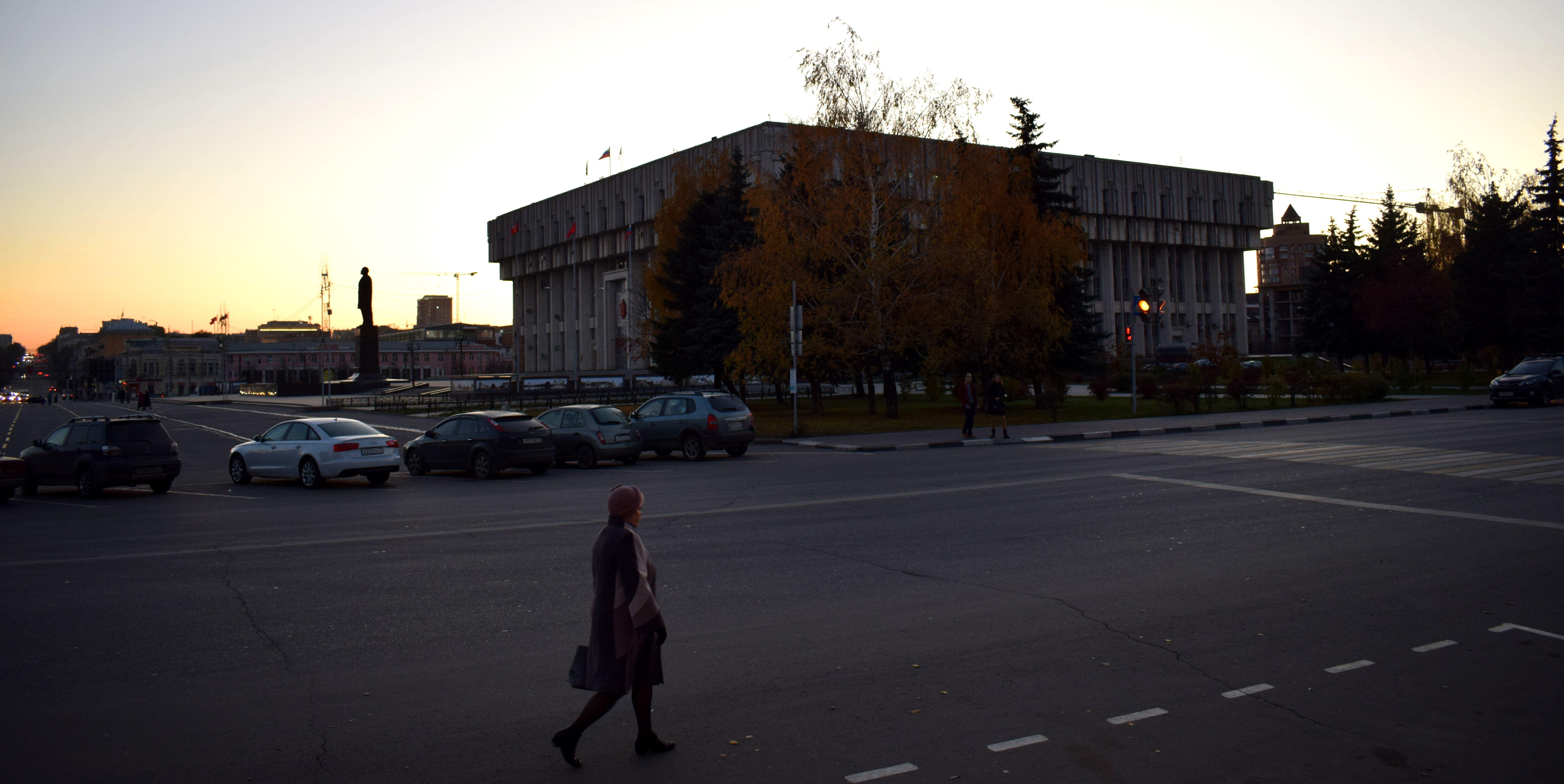 A final look at Tula’s administrative building before the sun set. This was definitely the ugliest building in the city. In my opinion, they should do bring back the church that used to stand there.
A final look at Tula’s administrative building before the sun set. This was definitely the ugliest building in the city. In my opinion, they should do bring back the church that used to stand there.
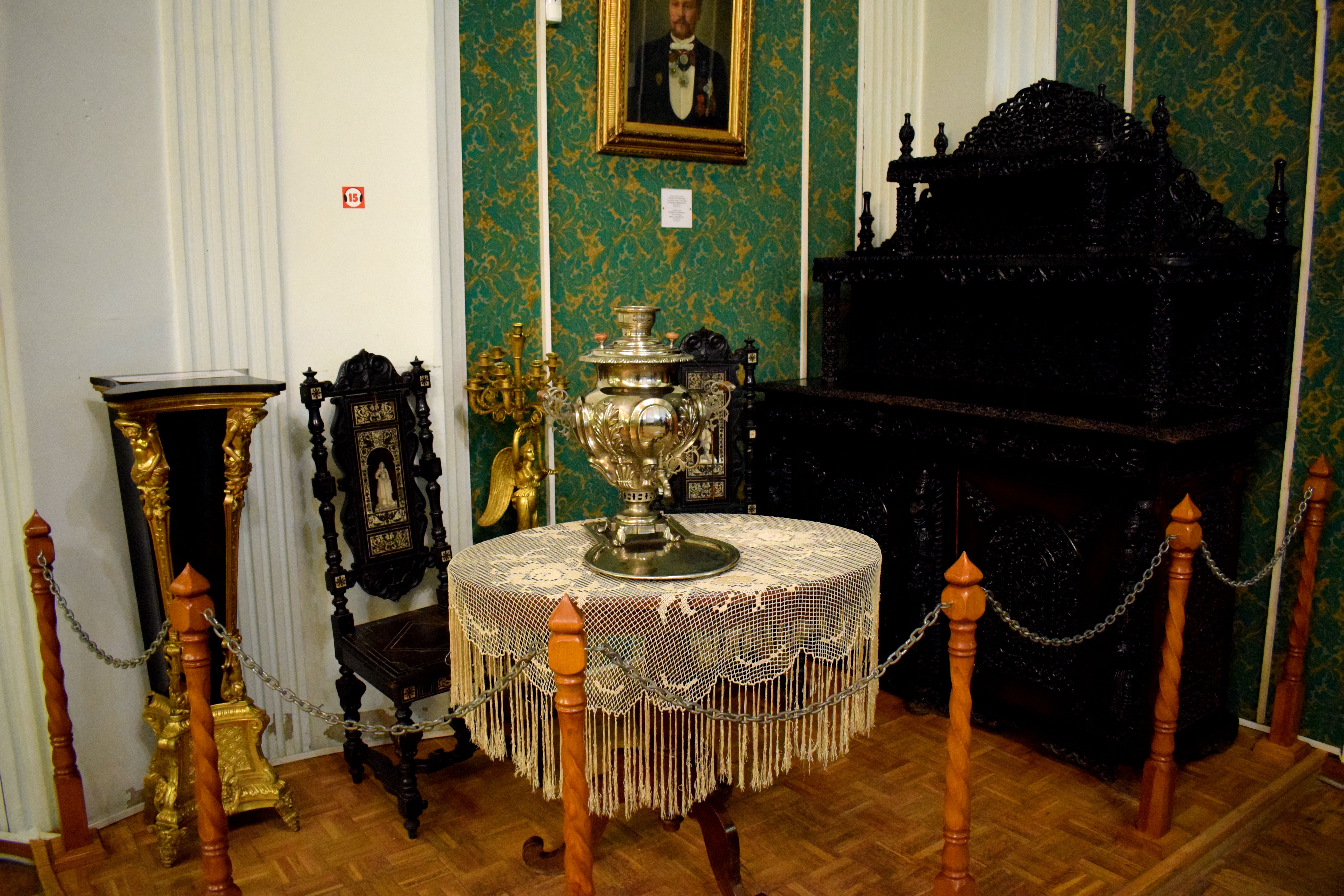 We finished the day by visiting Tula’s Samovar museum. It was a modest little exhibition that displayed some of the oldest samovar’s that were once made in the city.
We finished the day by visiting Tula’s Samovar museum. It was a modest little exhibition that displayed some of the oldest samovar’s that were once made in the city.
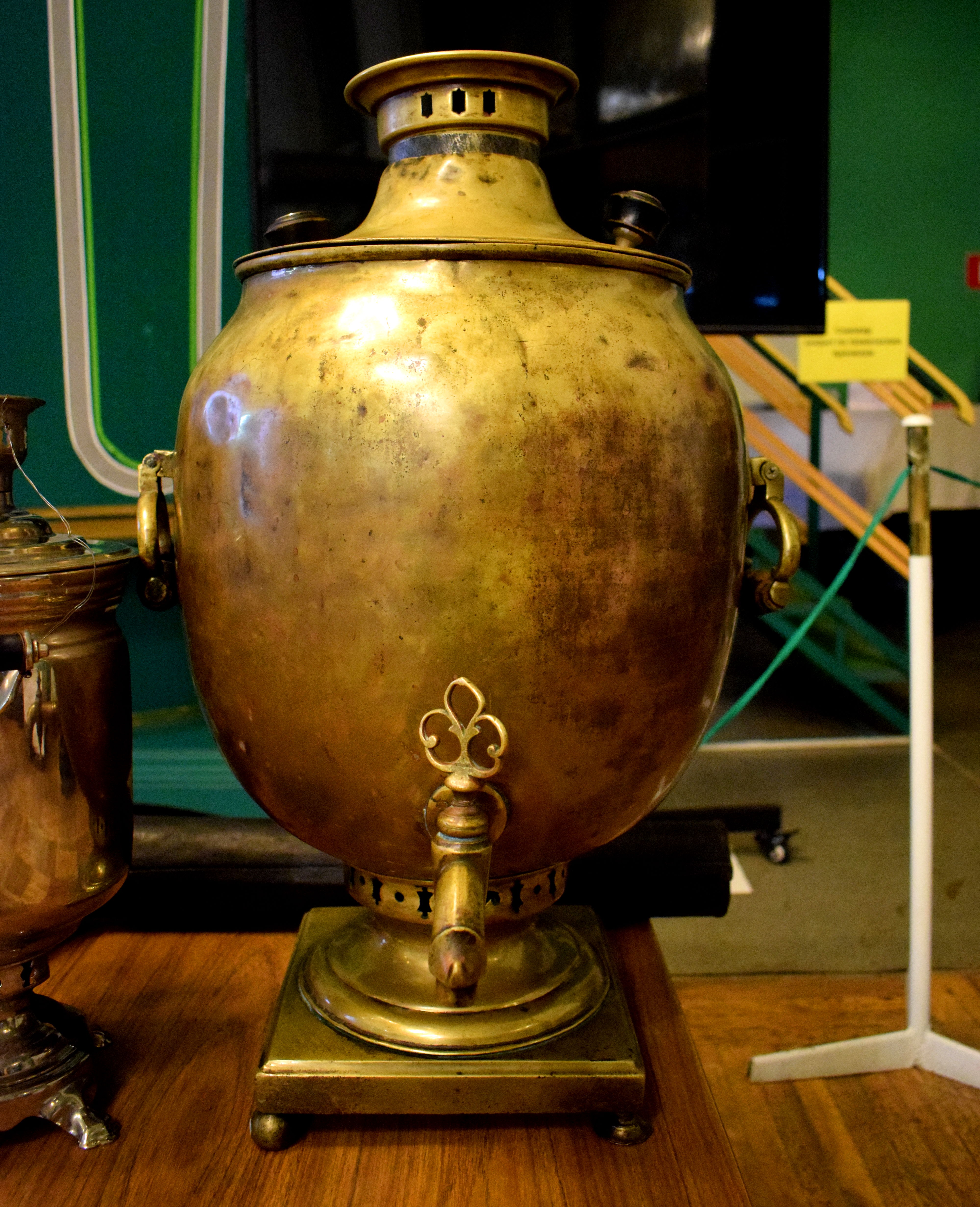 Samovars were used by Russians in czarist times to keep water hot for tea and soup. A flame in the bottom of the Samovar would be lit that would warm up the water in the container. The handle could then be turned so that the hot water pours out.
Samovars were used by Russians in czarist times to keep water hot for tea and soup. A flame in the bottom of the Samovar would be lit that would warm up the water in the container. The handle could then be turned so that the hot water pours out.
Tula was the city where the majority of Russian samovars were produced in the 19th century. You could find them all over Europe and chance are if you live in an old house and look in the attic, you will find a samovar that was made in the city of Tula.
Conclusion
Tula was an amazing city to visit in the fall. Russia can have extreme weather. Most of the year is covered in snow, but you have brief glimpses of fall, spring and summer that can be enjoyed.
These photos capture what fall in Russia is like. We happened to spend them in Tula, but really, any Russian city will look this beautiful in the fall.
When it comes t othe city of Tula itself, it is a great day trip outside of Moscow. The city is beaming with history. The armaments factory, the Kremlin, the wooden buildings in the center of the city, the beautiful cemetery atop the hill and the delicious Russian pryaniki all combine to make this worth the trek outside of Moscow.
Be sure to add it to your itinerary when you visit Russia and Moscow.
